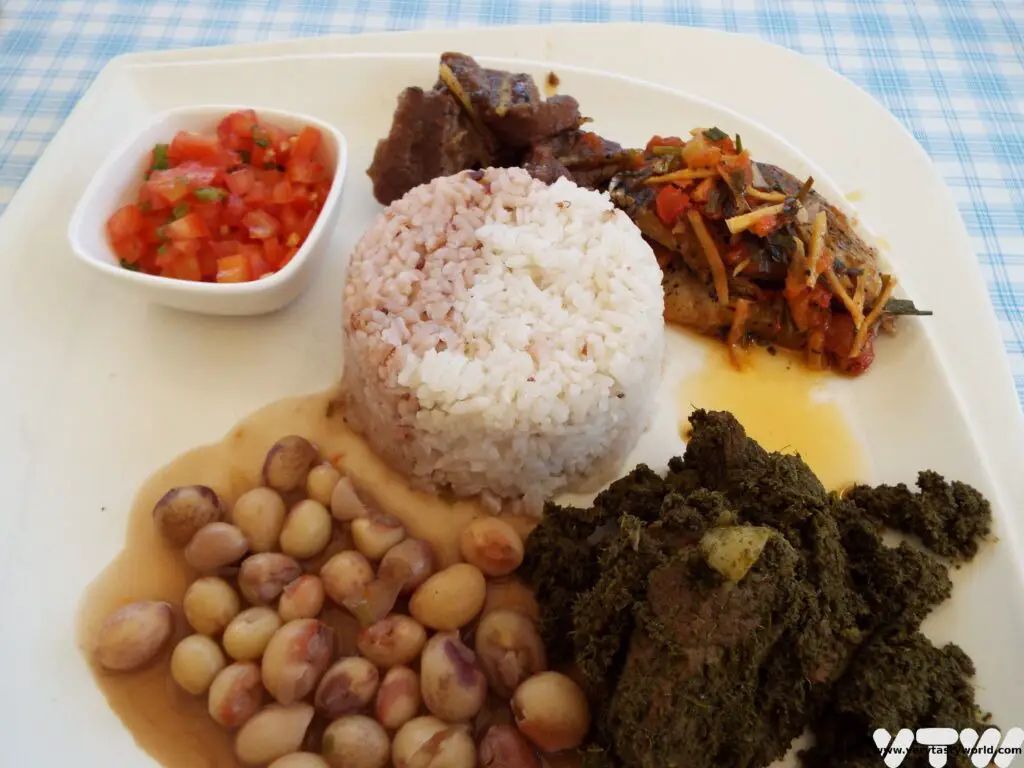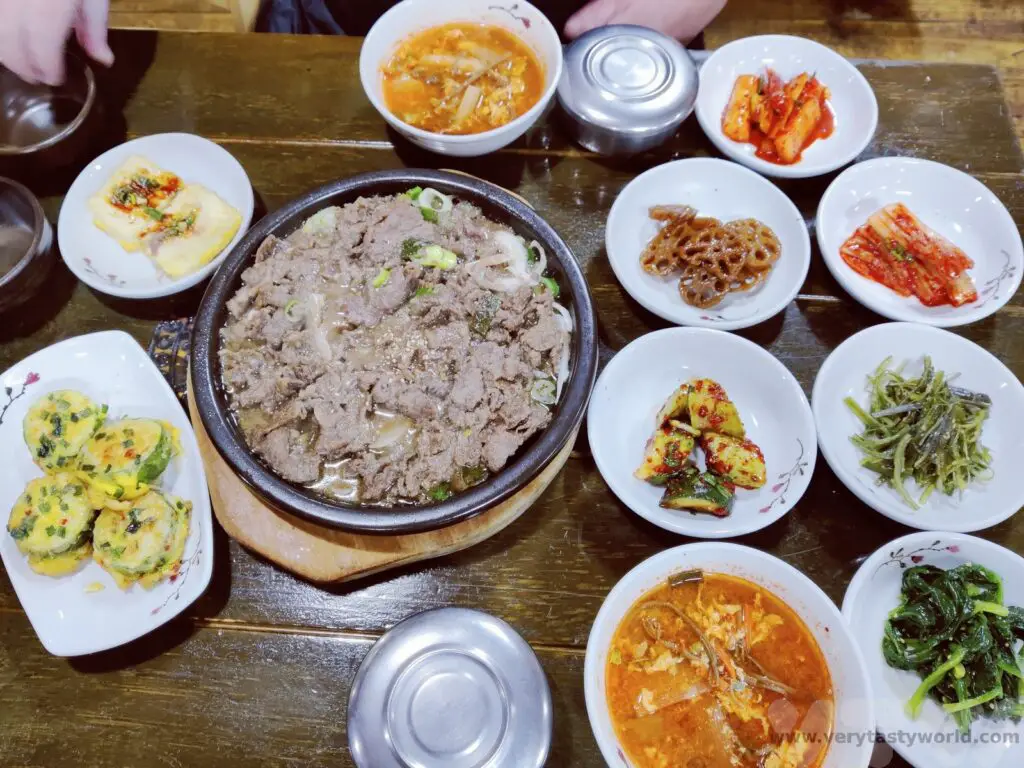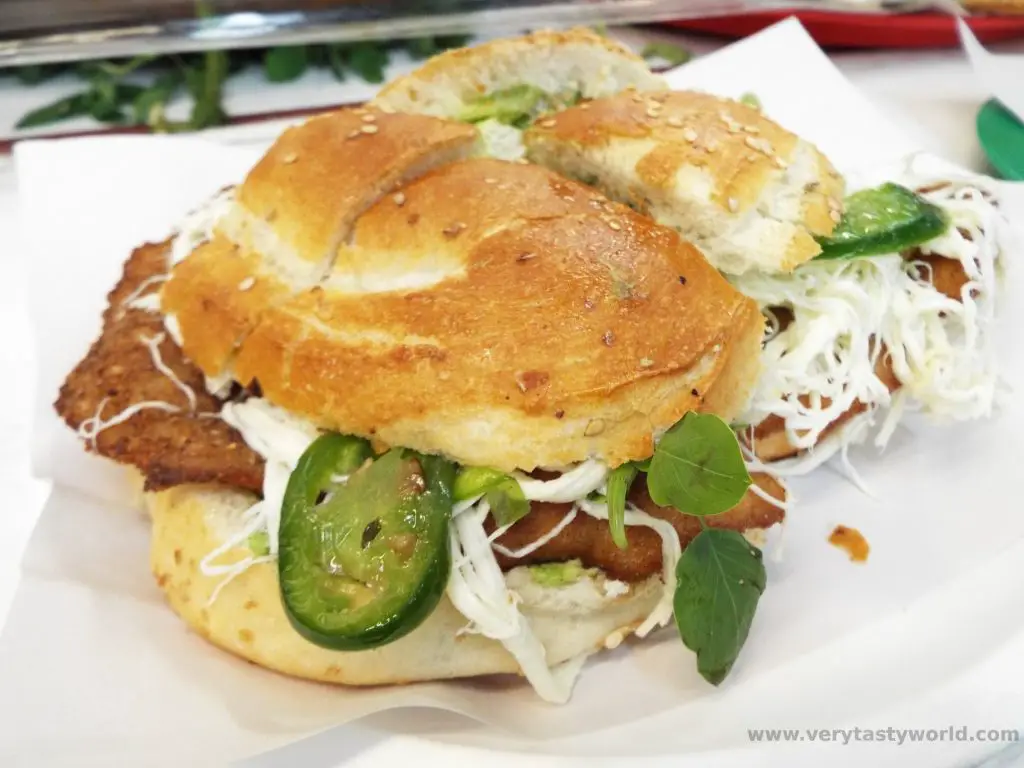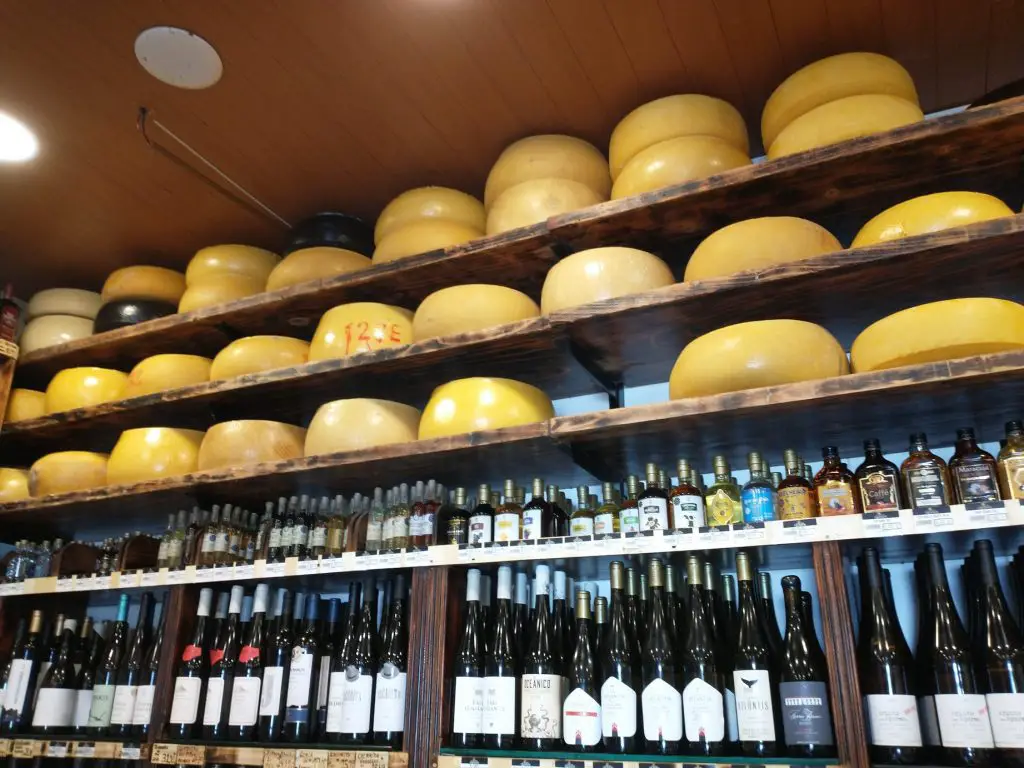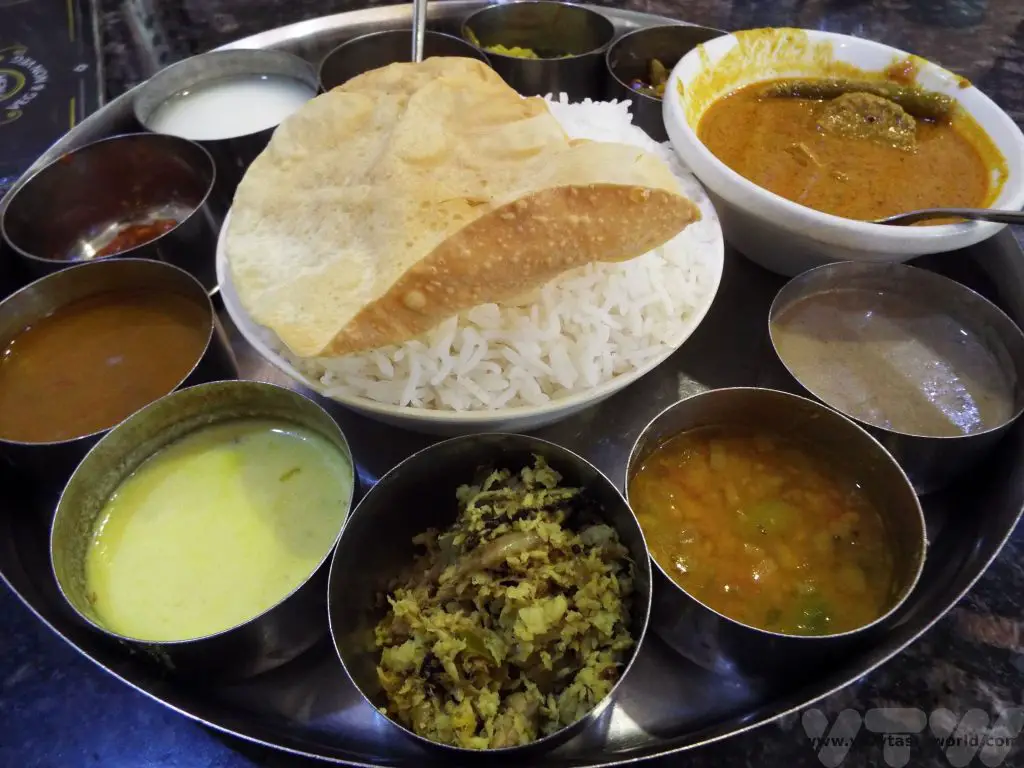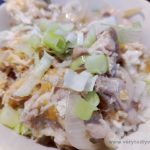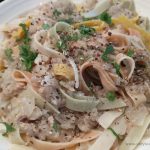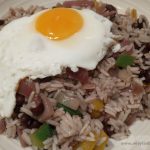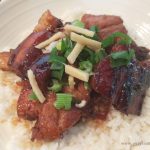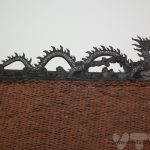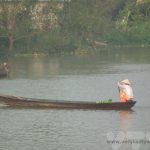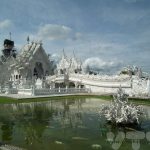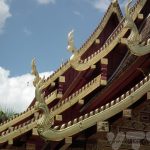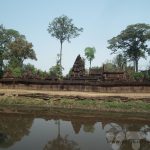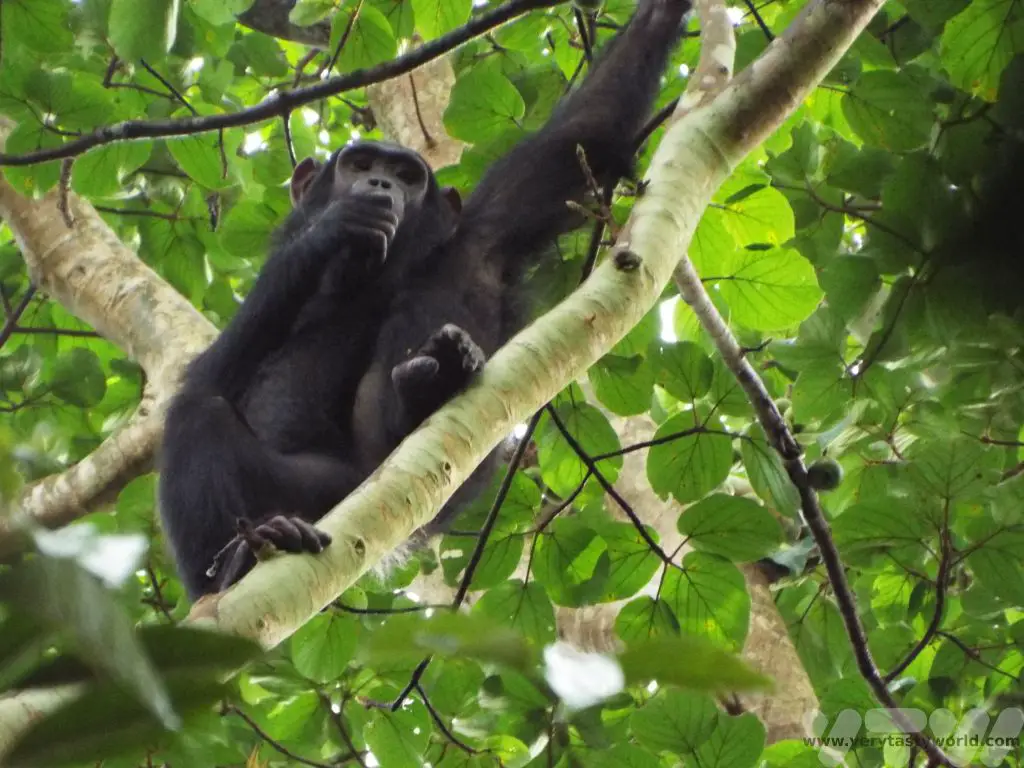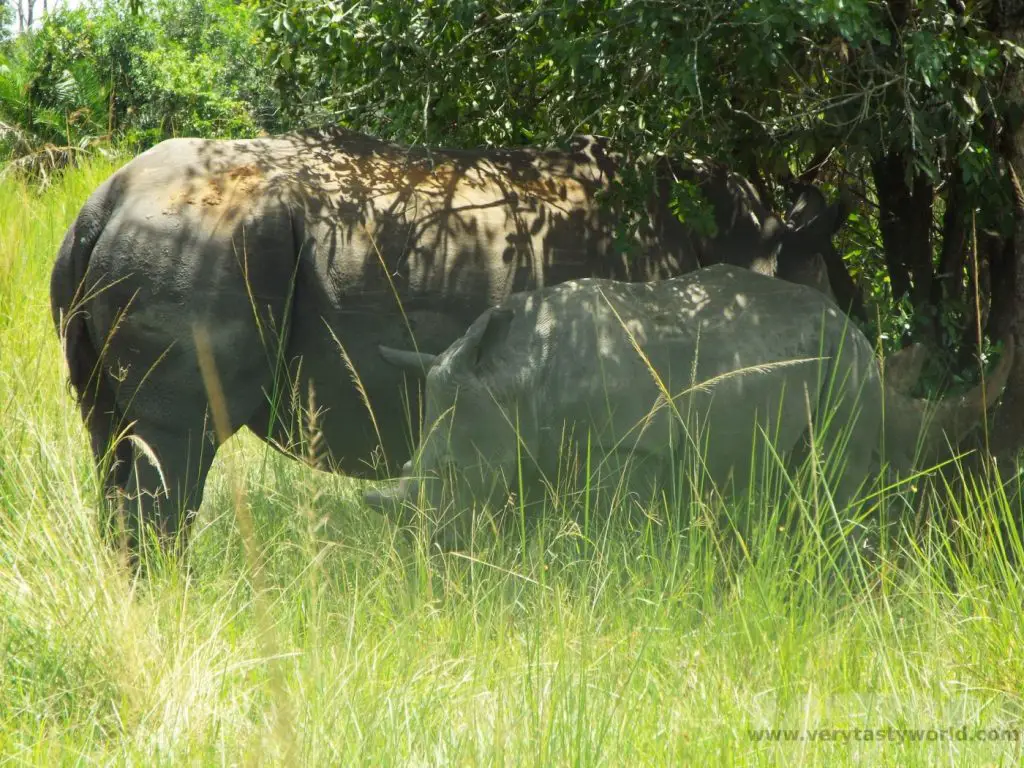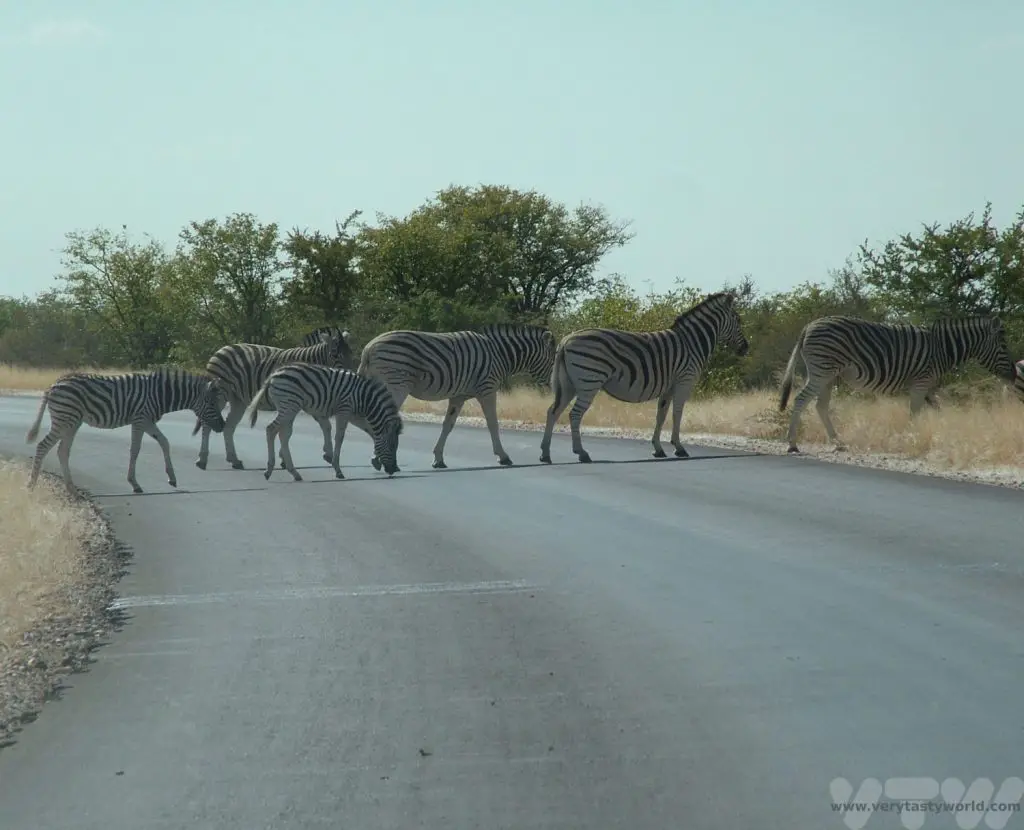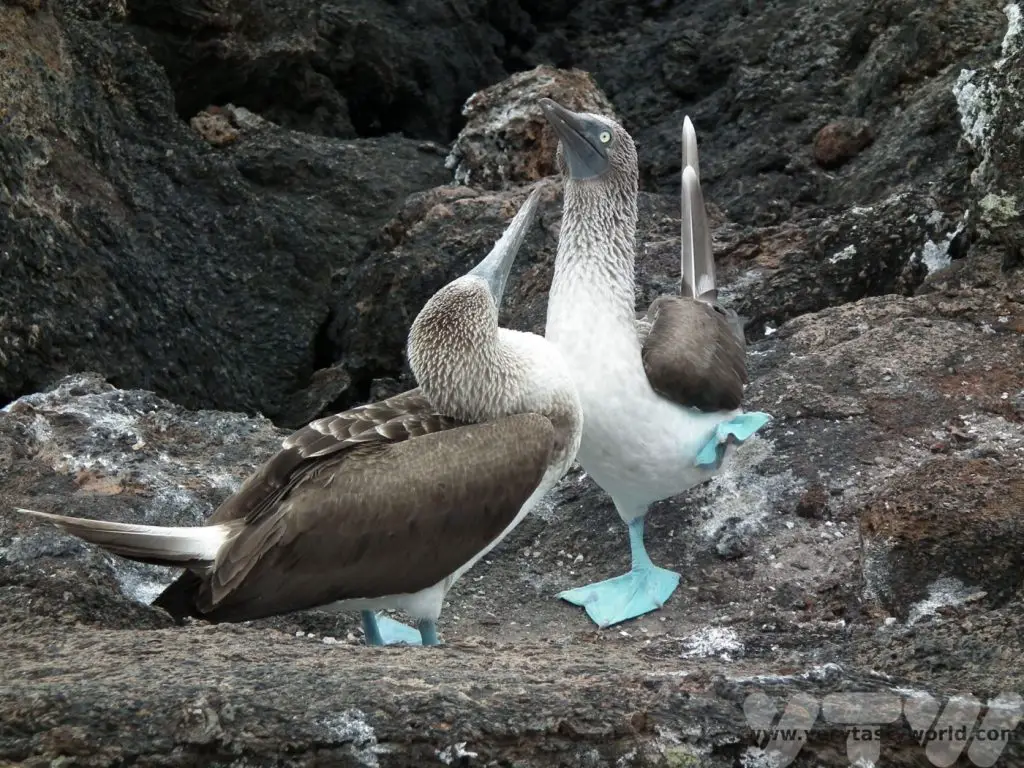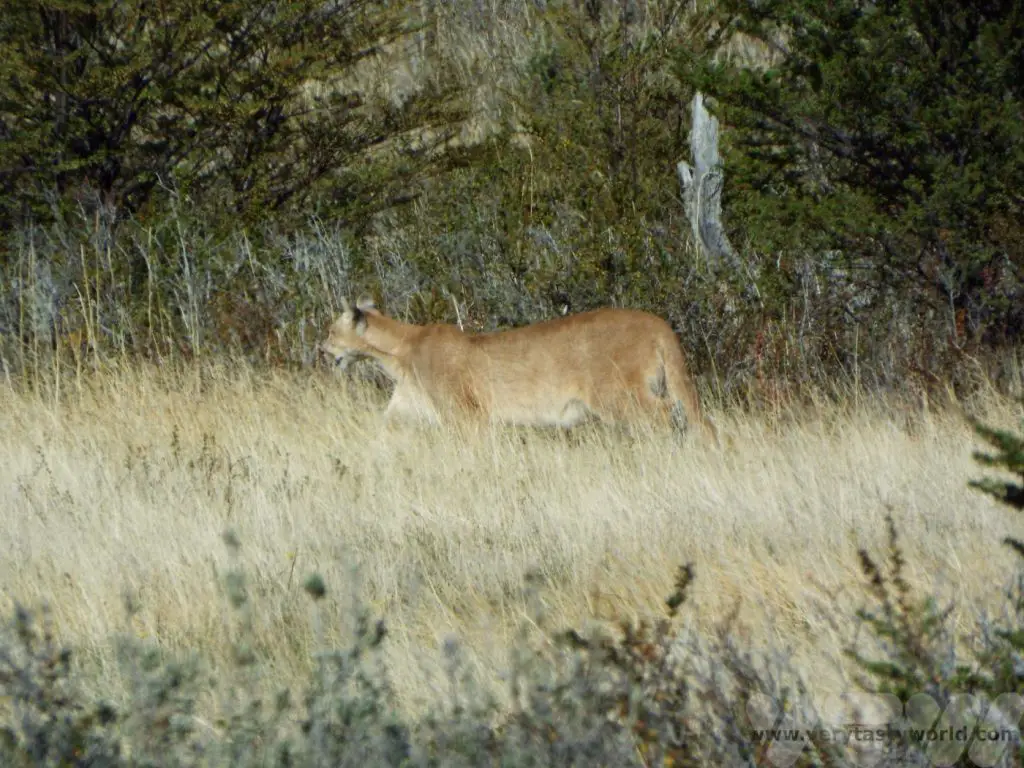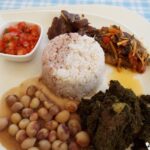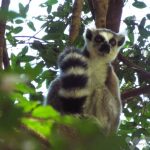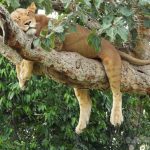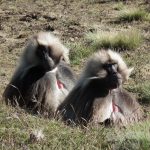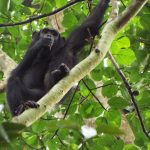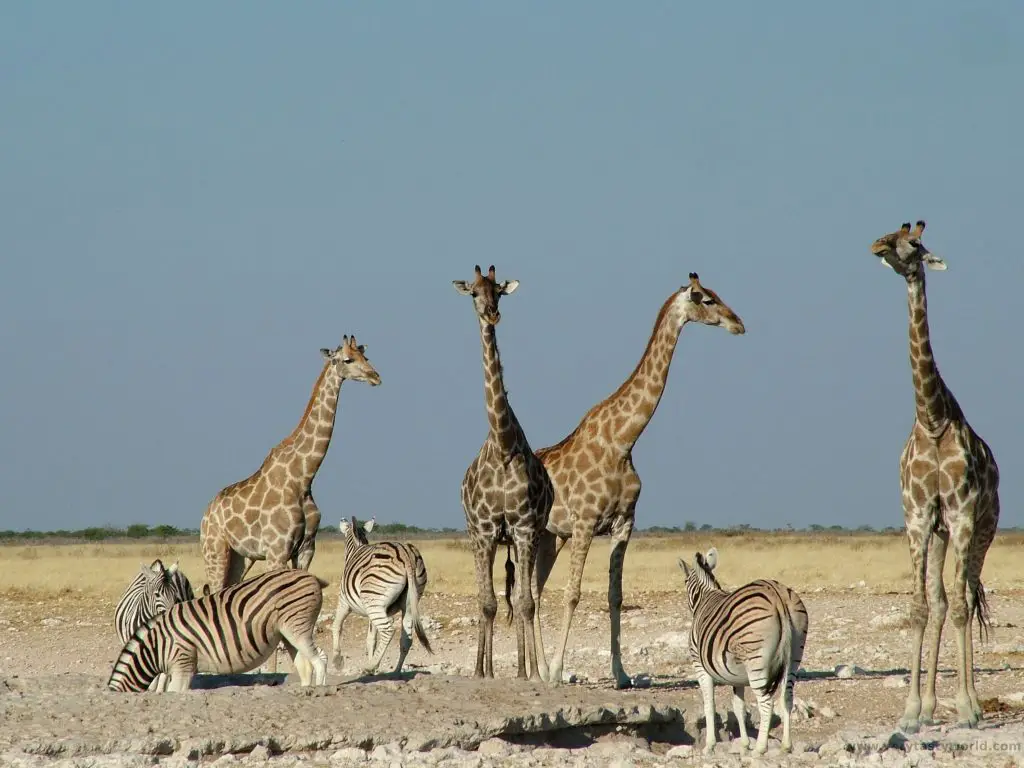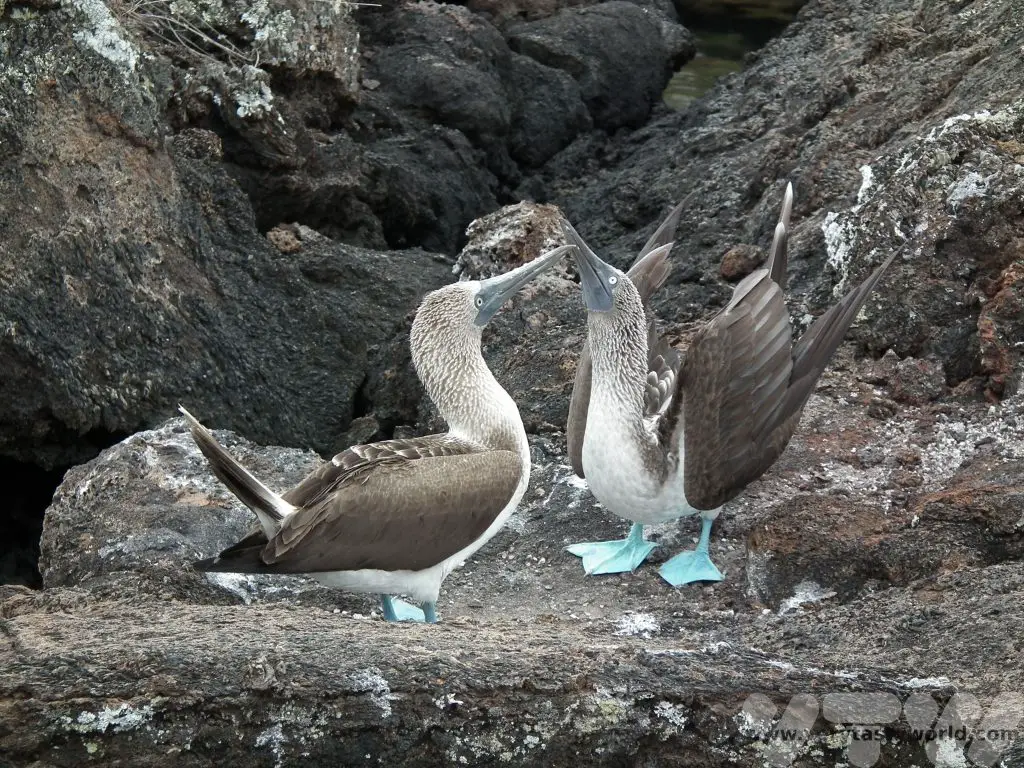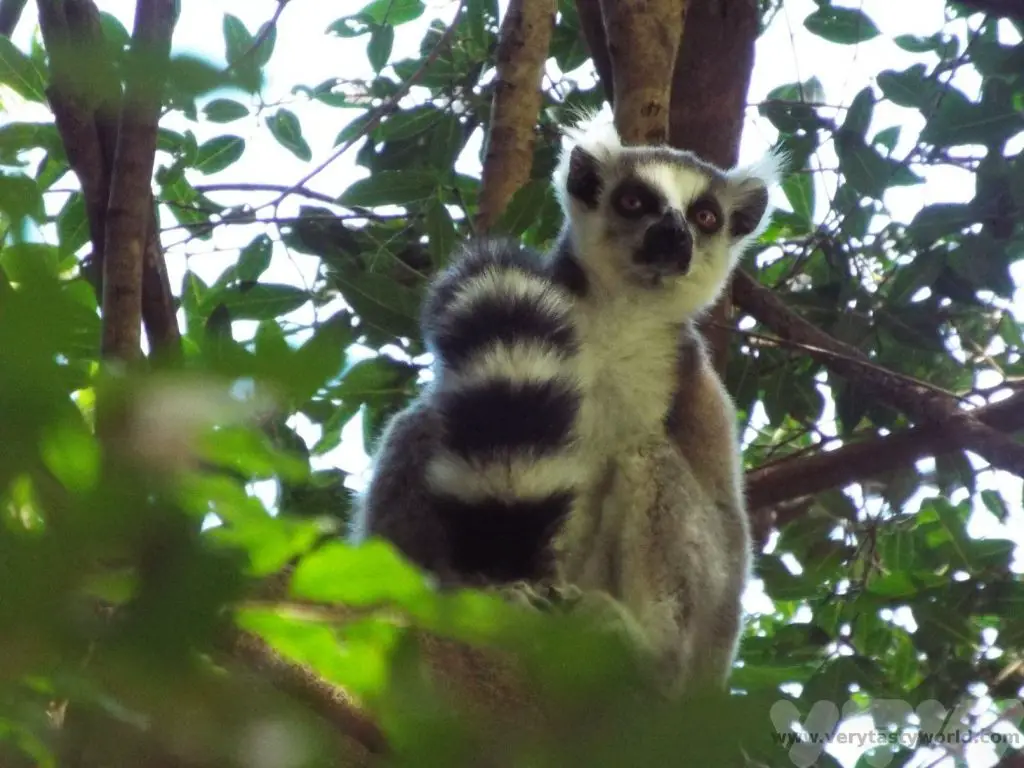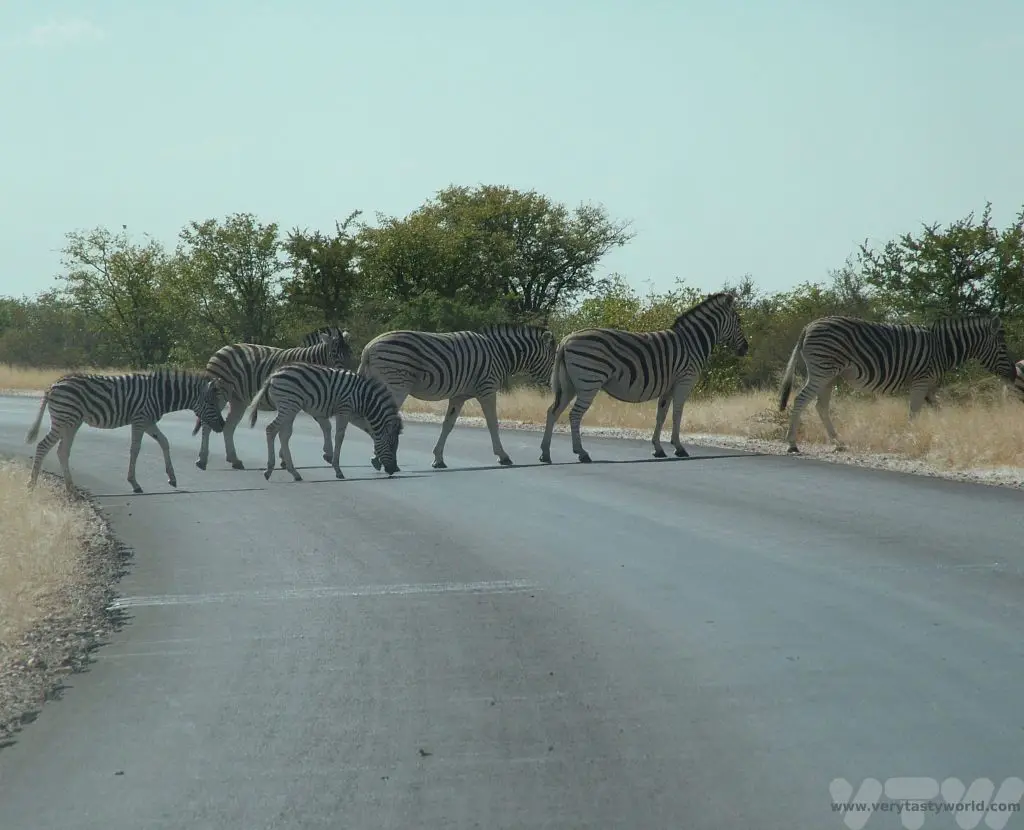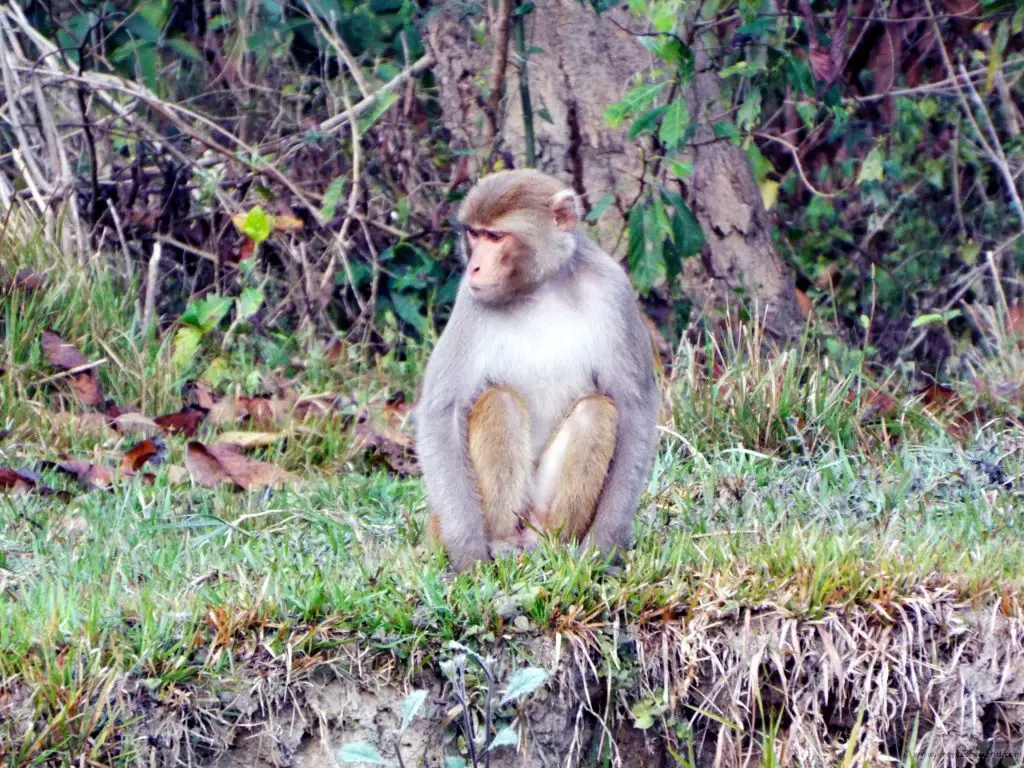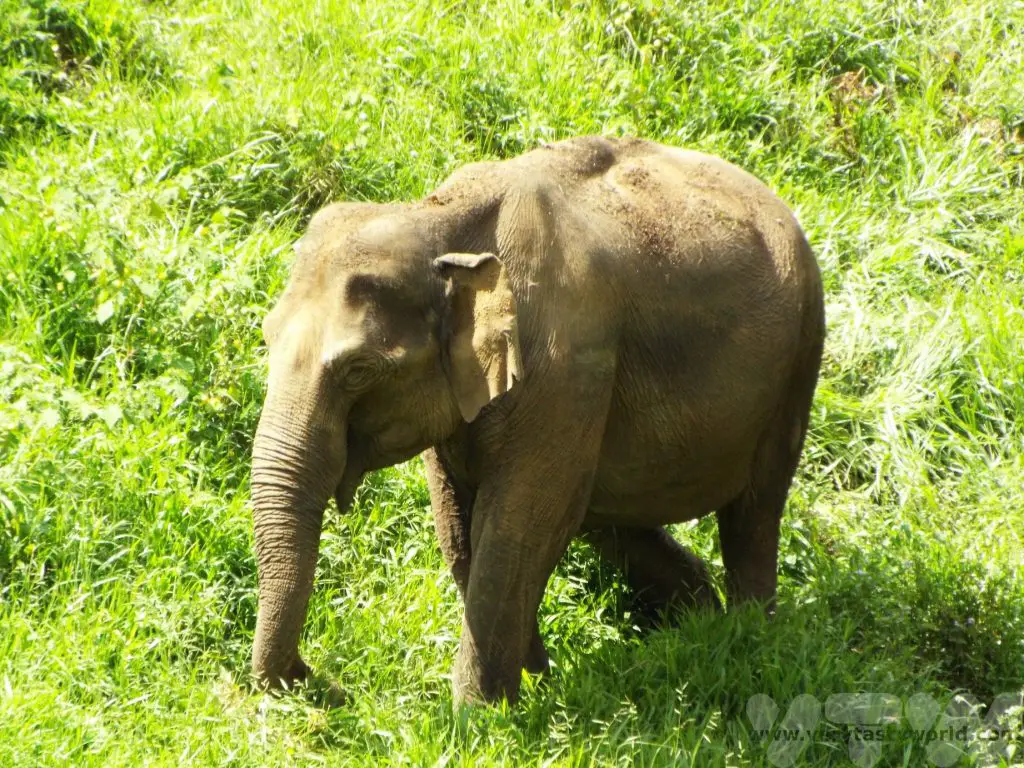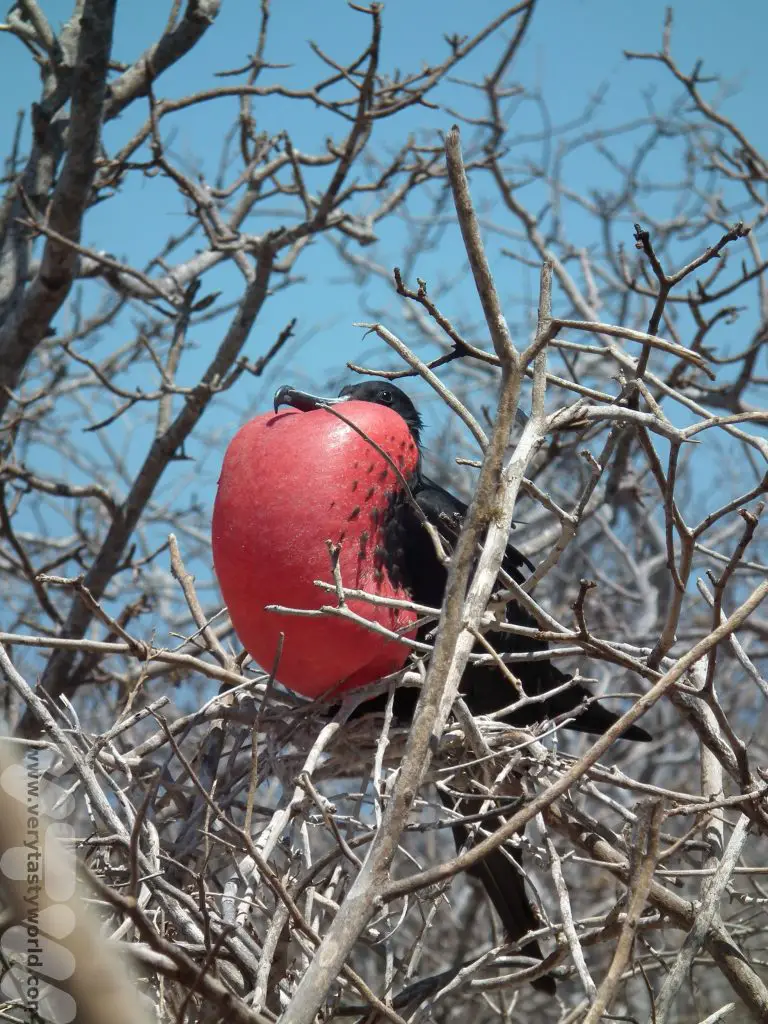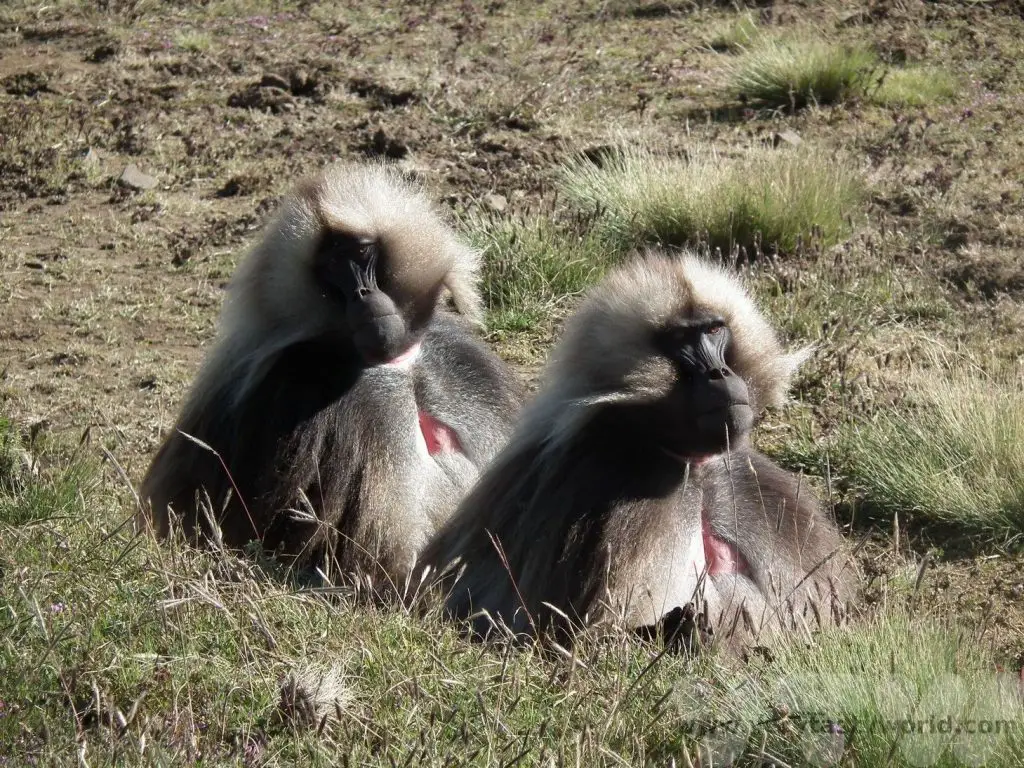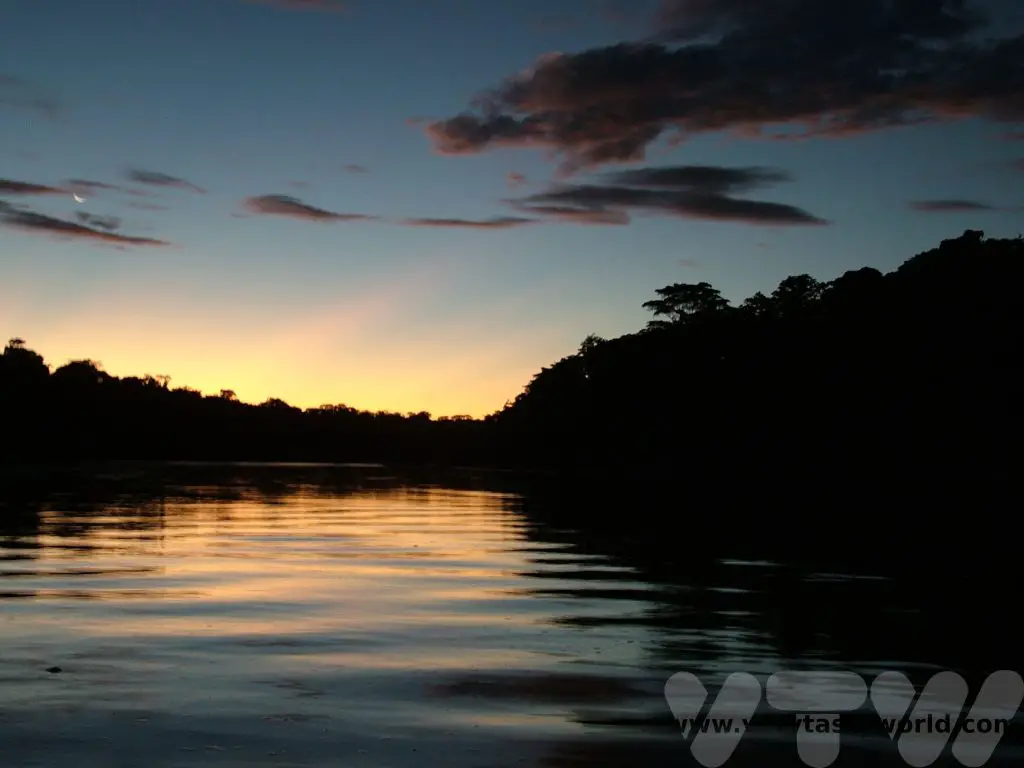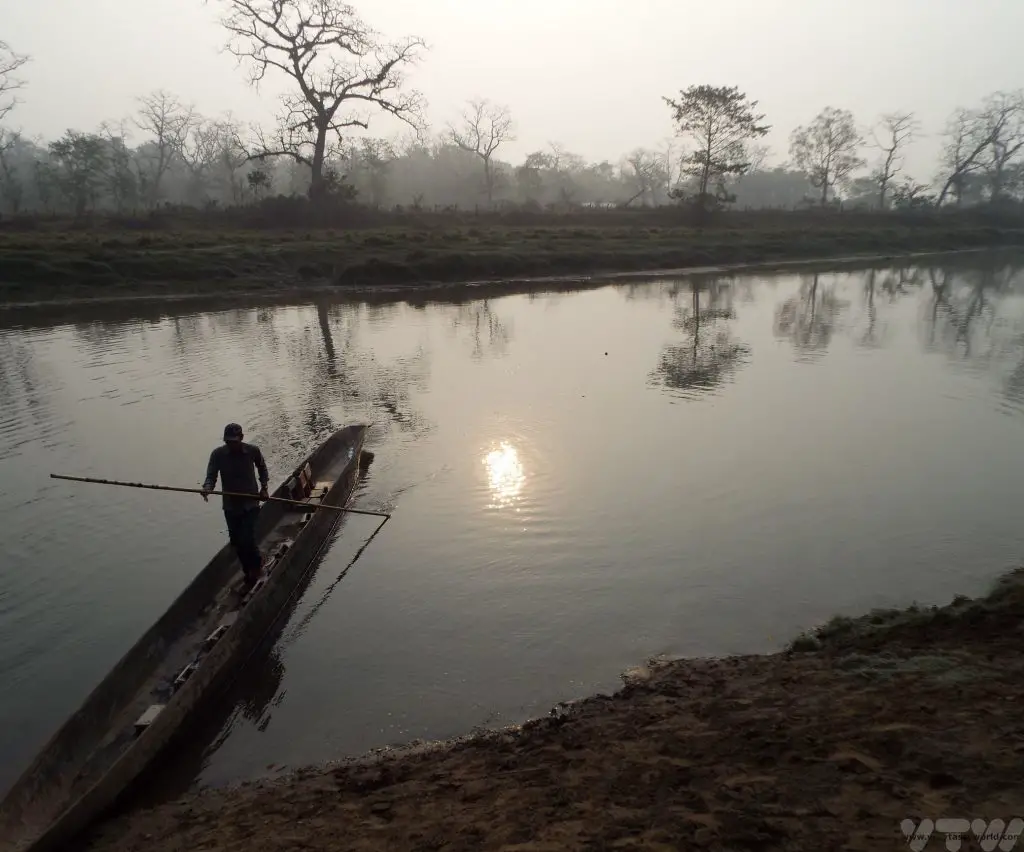World’s Best Breakfasts -Breakfast of Champions!
Some years ago we were excitedly choosing all sorts of delicacies at the breakfast buffet at our hotel in Yerevan, Armenia, when another guest glanced at our plates, shrivelled their noses very patronisingly and bellowed, “Ugh! Salad? For breakfast?” It’s widely considered to be the most important meal of the day but so many people seem to be set in their ways when it comes to eating a hearty breakfast. And many hotels seem to cook the same type of food for their guests: Western visitors are often offered bacon, sausage and eggs with breads and pastries, and Eastern visitors can usually select rice or noodle dishes. All these foods are familiar to the tourist but they often don’t reflect the traditional breakfasts of the country they are visiting. Here are some of the world’s best breakfasts.
Maybe people don’t feel so adventurous first thing in the morning, and that’s fair enough, but the thing is, we’re British and can have bacon and eggs any time we like. (Although, to be honest, we haven’t cooked a fry-up for years as it’s quite a lot of effort.) We’d much rather eat a typical breakfast from the country that we are visiting, especially if they are using local ingredients.
An Abundance of Diverse Dishes
Some countries have a typical breakfast that is simple, others have a variety of foods that make up the morning meal.
Japan
Japan is well known for its fabulous cuisine and also offers one of the world’s best breakfasts. A Japanese brekkie often comprises grilled fish, vegetables and pickles, maybe with tofu, dumpling and an omelette.

These are accompanied with a bowl of rice, into which you could crack a raw egg mixed with shoyu (soy sauce) – the egg sort of cooks in the heat of the rice – or that famous smelly fermented soybean concoction, natto, maybe with some sliced negi (similar to spring onion). Just grab a slice of nori (dried seaweed), place it over the rice, then using a pincer movement with your chopsticks grab a portion of rice with the nori. Scrumptious. (It’s worth noting that if you are at a breakfast buffet in Japan the eggs on offer may well be raw – be careful when cracking them.)


India
A dosa for breakfast in South India is an absolute joy. This is a pancake traditionally made from rice and dal (lentils) which are ground to form a batter and then fermented. The batter is cooked on a hot plate to form a large pancake and served with chutney – coriander, coconut and tomato are particularly popular.

In Kerala, this breakfast comprised vada, which is a doughnut made from fermented pulses and a puffy bread puri served with sambar, a delicious stew made from lentils, vegetables and spices. Multiple chutneys feature as well to provide a variety of flavours that soak into the vada and puri.

It’s Often Okay to Go Off-Menu
It’s quite common for hotels to ask their guests to pre-order breakfast. It makes sense: the hotel staff know what to order in beforehand and this can help minimise food waste. There is usually a form with tick boxes and you can choose from a variety of typical breakfast offerings. But if you do want to eat like a local, we’ve learned that many hotel restaurants are really happy to cook you a regional breakfast.
Uganda
It all started in Uganda when we breakfasted at a lodge with a local guide. We were eating standard fare but our curiosity was piqued when something entirely different was brought out for him. On asking, we learned that it was a rolex – a chapati with a layer of omelette on top, then rolled into a spiral cylinder, perfect for munching on. So the next day we asked the lodge staff if it would be possible for us to have a rolex for brekkie and they were happy to oblige. It’s great – tasty and filling – a good start to the day.

Nepal
In Nepal we were given a standard pre-order form to complete (eggs, bacon, sausage, toast…) to pre-order breakfast for the following morning. We politely asked whether it was possible to have a local breakfast instead. We didn’t specify any dish – just asked for local food. They were delighted. The following morning we were served a marsala omelette accompanied by a joyous curry and roti with home-made yoghurt. It was delicious.

Madagascar
Madagascar is famous for its amazing landscapes and unique flora and fauna and isn’t really known at all for its cuisine. But its breakfasts are great – really hearty and filling. If you want to try a local breakfast, it is best to request it the night before because it takes some time to cook. Rice is the staple in Madagascar, so a typical breakfast includes vary sosoa, or rice porridge. Sometimes it is served with zebu (a kind of cattle) steak for a very rich and decadent breakfast.
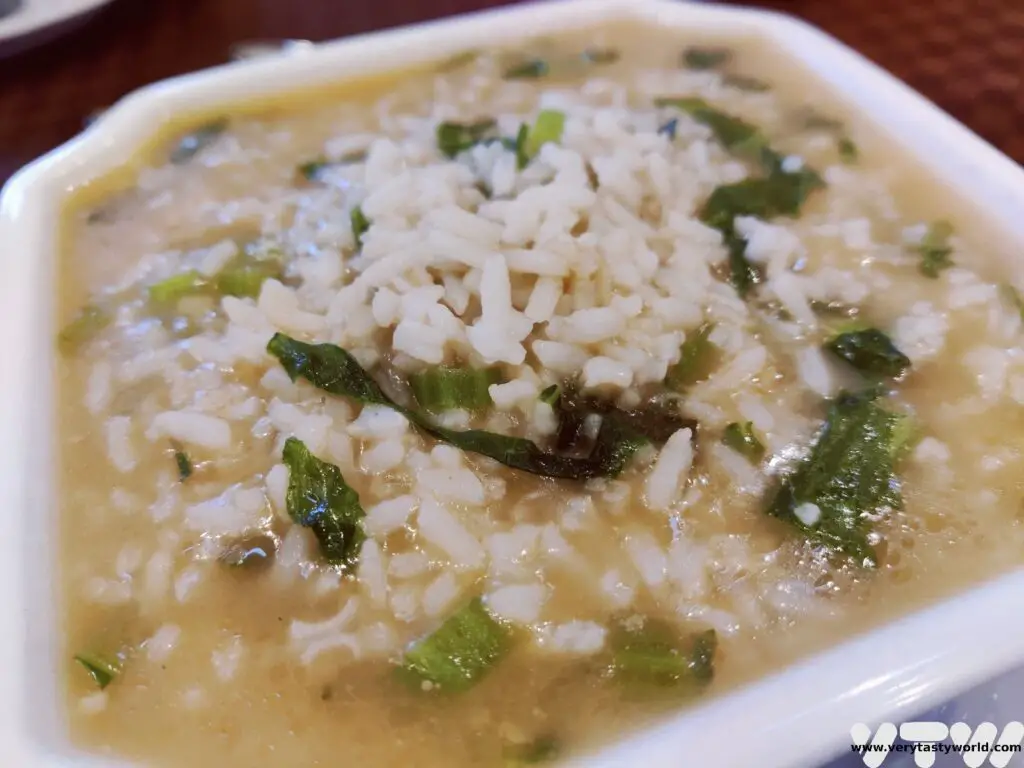
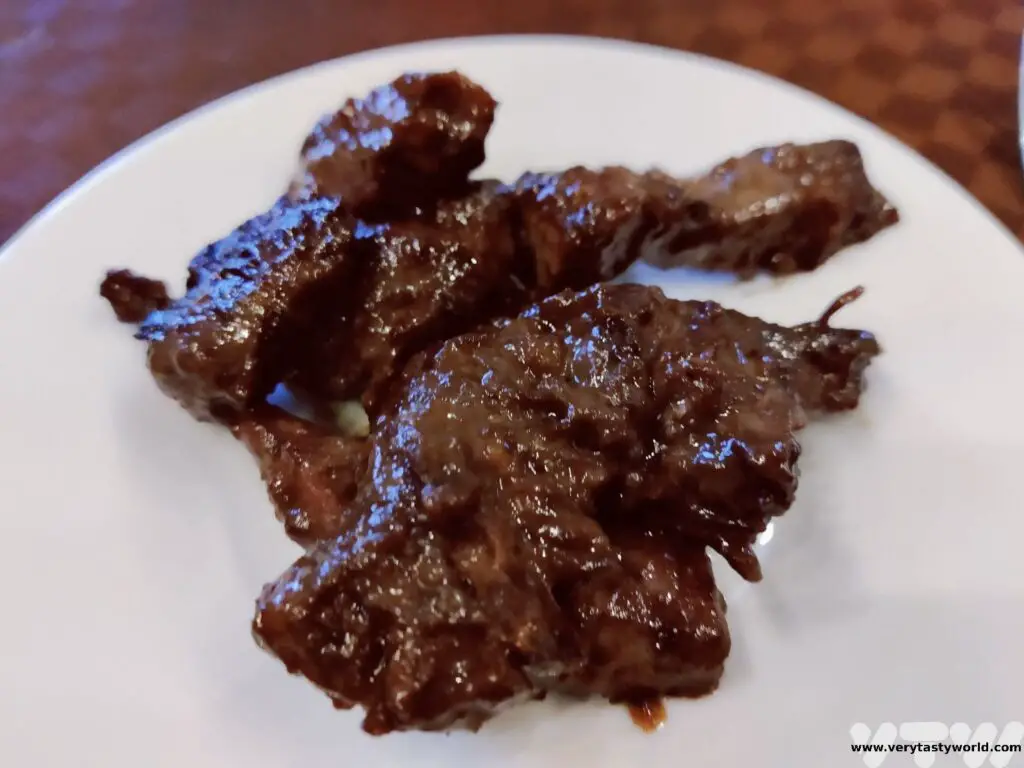
Mofo baoline are fried doughballs. They are very fluffy and filling and will really set you up for the day.
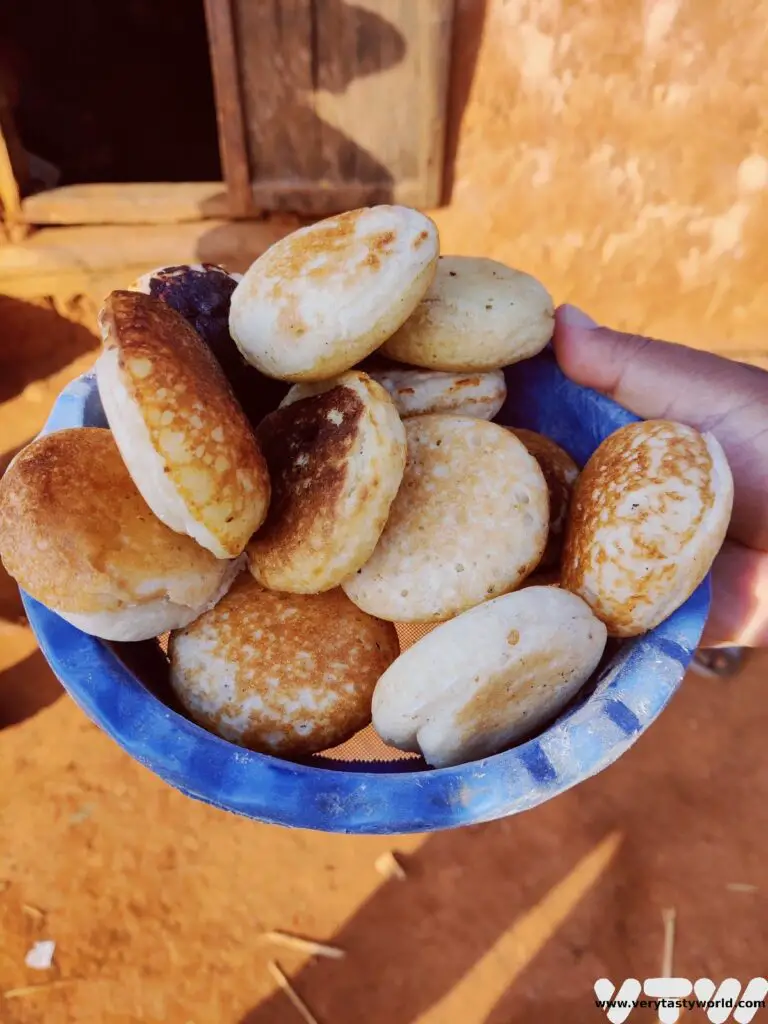
Breakfast, Lunch, Dinner and Breakfast Again
Many countries offer breakfasts that aren’t necessarily only eaten in the morning. When the food is this good, why restrict the dish to the morning?
Costa Rica
One of the world’s best breakfasts is gallo pinto from Costa Rica. It’s so popular it is often eaten for lunch and dinner as well. Which is just as well because it tastes great and is also really healthy. It comprises rice and beans and is usually accompanied by a fried egg at breakfast. Other accompaniments to start the morning include sausage, fried potatoes and some salad.
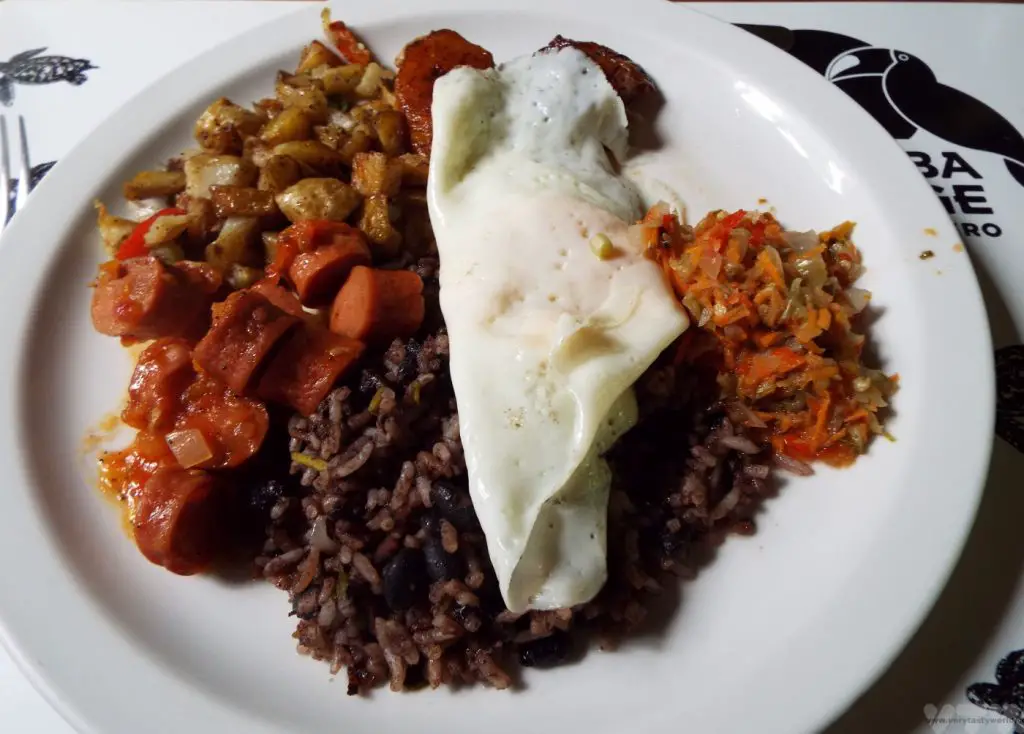
Vietnam
In Vietnam breakfast usually took a buffet form but often there were chefs on-hand to cook some food to order. We were always offered Pho – a tangle of noodles, freshly cooked and served in a yummy broth, topped with meat and vegetables. You pick up a side plate and add herbs, chilli, limes and other delicious items so that you can create your own personalised taste sensation. The liquid of the broth also ensured that we were thoroughly hydrated for the day ahead.
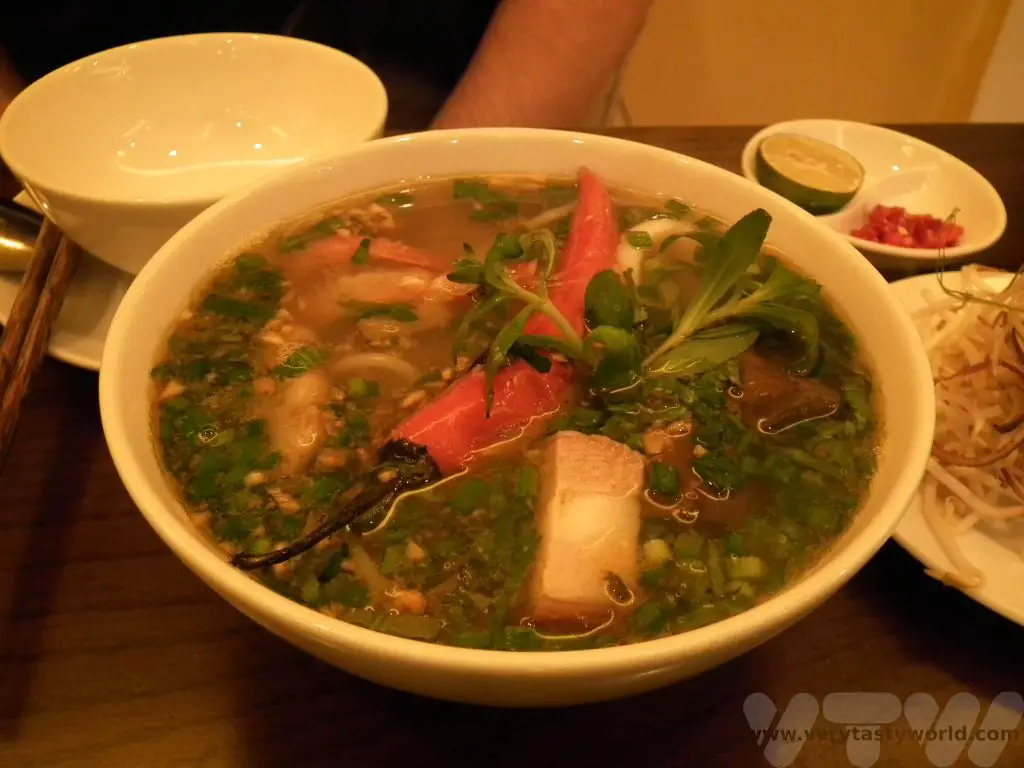
Mexico
We’ve said it before and we’ll say it again: with Mexican cuisine more is always more. There are so many dishes on offer, we didn’t have the same breakfast twice throughout our trip. Tacos with all the trimmings were just as fantastic to eat at breakfast as they were at lunch or dinner (or even for a mid-excursion snack). You can never have too many tacos.

Chuilaquiles are basically tortillas (often leftovers) which form a carb base. Then they are covered in red or green salsa and other ingredients such as shredded chicken, cheese or refried beans.


Tortilla with mole (pronounced molay) makes for a sophisticated breakfast. Mole is famous as the savoury sauce which contains chocolate but it’s so much more than chocolate sauce. It’s actually a very complex sauce, which contains a vast number of ingredients and takes a long time to make. Hotels in Mexico will often provide a sweet, glossy mole but the best ones can be found at the local market.
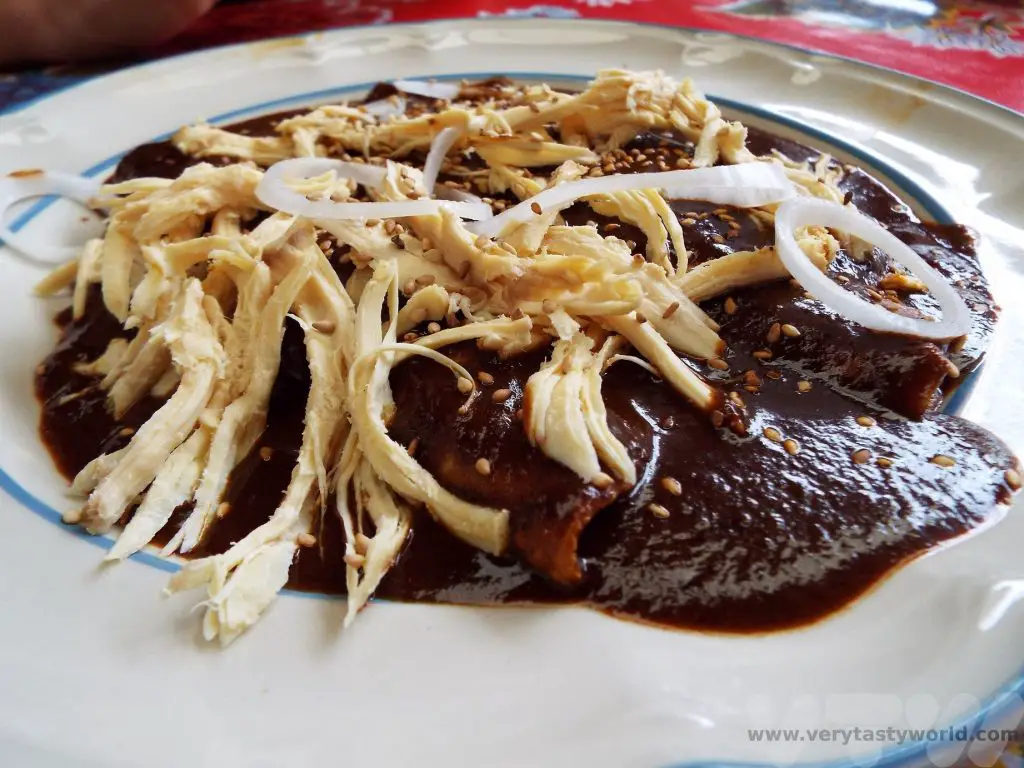
Huevas chiopanecas (below left) are eggs with red sauce and pork tamales (corn dough steamed inside a husk). And huevos coletos (below right) are fried eggs over tortillas with beans and pork sausage, which sounds western enough, until it’s adorned with spicy red sauce.


These dishes are also the sort of food that will be eaten through the day. And quite right too – they are all delicious, so you wouldn’t want to restrict yourself to just the first meal of the day.
South Korea
Like in Mexico, Korean people eat a wide variety of dishes in the morning and many of these aren’t solely for breakfast. Stew, known as jigae, accompanied by rice and side dishes, known as banchan, are popular.


Kimchi also features, as it does with pretty much every Korean meal. It is a spicy fermented cabbage dish and is so popular that most Korean people have two refrigerators – a normal one and a kimchi one. We make our own – you can find our kimchi recipe here.
World’s Best Breakfasts: Minimal Preparation, Maximum Flavour
And there are some brekkies that are surprisingly simple and make full use of great ingredients.
Spain
Andalucia is known as the breadbasket of Spain, and is a region that has more than its fair share of delicious produce. Alongside wonderfully fresh fruits and vegetables, it is the region of Iberico ham, sourced from the black pigs that forage for acorns in the mountains. And in nearby La Mancha, Manchego cheese is a hard cheese made from sheep milk which has a strong, nutty flavour. Sometimes simplicity is the key to a fantastic breakfast.
Pan con tomate is a thick slice of toasted bread, rubbed with olive oil and sometimes garlic, topped with a salsa of crushed ripe tomatoes and just a sprinkling of salt. such a simple dish but it is so delicious. It’s proof that quality ingredients speak for themselves.


Germany
A German breakfast is clever because it really needs minimal preparation in the morning. the perfect way to start the day is to get up and eat.
Key to its deliciousness is the bread. There are over 3000 types of bread in Germany, both breakfast and evening breads. There are so many varieties of tasty Brot (breads) and Brötchen (rolls) for brekkie – white breads, rye breads, whole-grain, wheat-rye and many, many more. There are so many variations, sometimes they are seeded or nutty, all are hearty, filling and a perfect vessel for sweet or savoury delights.
So what can you put on your bread: a variety of meats, cheeses and smoked fish or, if you have a sweet tooth, jams and honey. Honeycomb, dripping with sweetness, slathered over a slice of buttered bread, is a thing of joy. And how can you not love the fact that every September 25 Germans celebrate Butterbrot Day – a day of bread and butter?

Scandinavia
A Norwegian breakfast is savoury. Local seafood is amazing so fish features heavily in the first meal of the day. This may be smoked salmon or pickled herring in a variety of marinades. Bread with pålegg – a spread – is common.
Norway also offers some unusual cheese – brown cheese, called Brunost. This is one of the strangest cheeses we’ve tried because it uses what is normally considered to be the waste product from cheese-making – the whey. Whey boiled with cream results in caramelisation which gives the cheese its distinctive brown colour. A slice of cheese atop a slice of bread is an important part of a typical breakfast.
And you are always guaranteed a great cup of coffee – or three – when visiting Scandinavia. Coffee is an essential part of breakfast.

World’s Best Breakfasts – Back At Home
And, of course, whenever we are staying away from home in the UK, we’ll always have an honest-to-goodness fry-up. Sausage, bacon, egg (usually fried, poached or scrambled), black pudding, mushroom, tomato, beans and sometime a hash brown are the usual components.
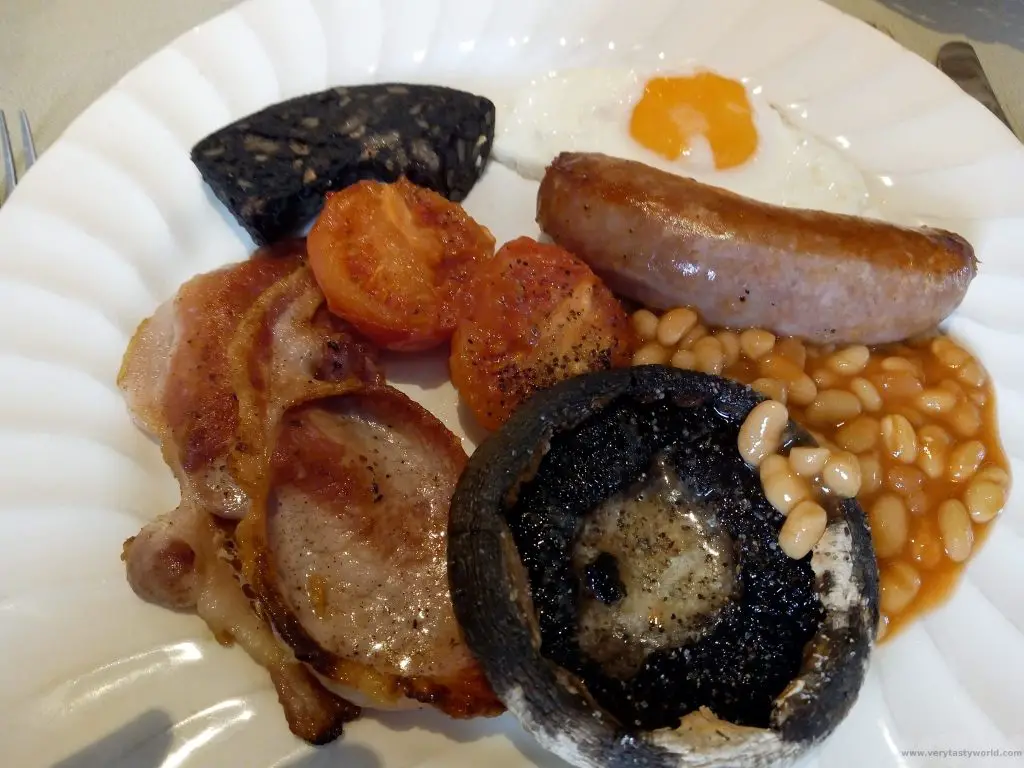
We recently discovered that the best possible place for a full English breakfast that we’ve ever eaten is actually in our home town. While many top breakfast establishments boast locally sourced food (which is, of course, delicious) some go one step further to cure their own bacon and make their own sausages and black pudding. And that’s just the start: The hash brown (never the most fabulous component of a British breakfast) is a home-made bubble and squeak, a glorious blend of fried potato and cabbage. The beans have never seen a tin – they are home-made baked beans in a rich tomato sauce. There is even rich and tangy brown sauce to accompany the feast.
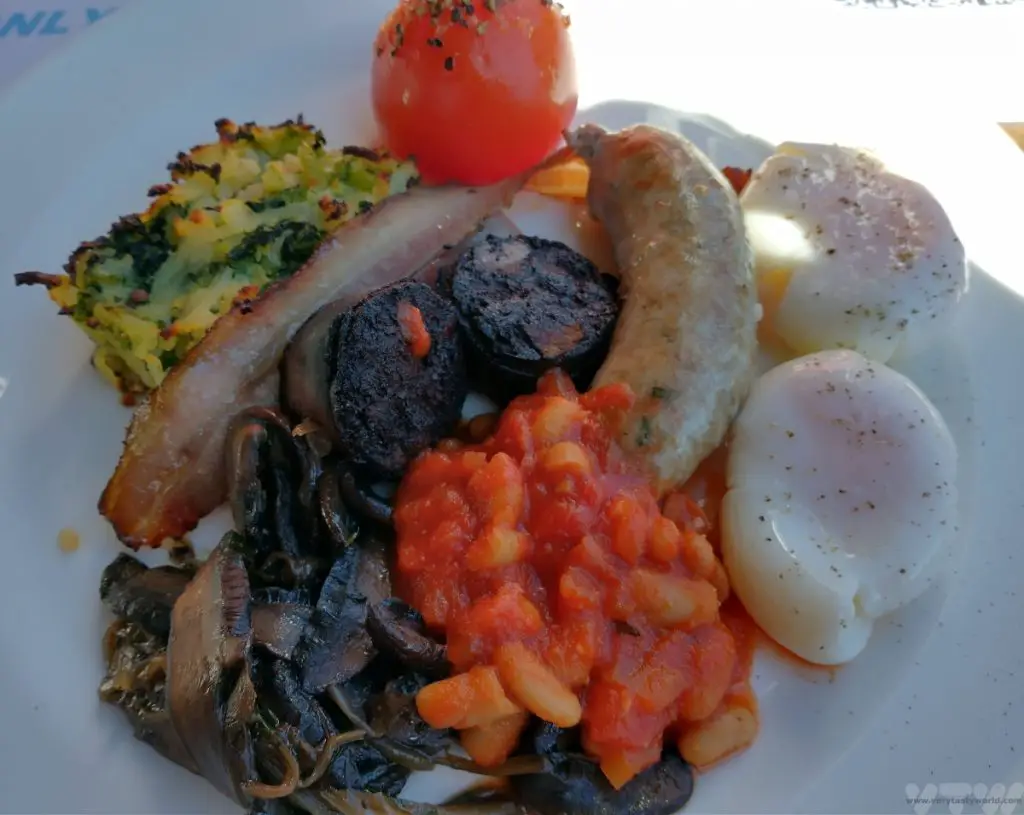
These are our favourite breakfasts from around the world. Do you have a favourite? Let us know!
Related Posts You May Enjoy

- RECIPE: How To Make Elderflower Champagne
- RECIPE Oyakodon Donburi
- Zero Waste Recipes Before Your Holiday
- RECIPE: Vegetable Biryani Tamil Nadu Style
- RECIPE: Vegan Wild Garlic Pesto
- Recipe: Venetian Pasta Sauce
- RECIPE: Biryani Raita Recipe
- RECIPE: How to Make Costa Rica’s Gallo Pinto
- Recipe: Japanese Simmered Pork Belly – Buta no Kakuni

- World’s Best Breakfasts -Breakfast of Champions!
- A One Day Hanoi Itinerary
- Mekong Meanderings
- A Chiang Rai Temple and A Country Retreat
- A Chiang Mai Tour in Northern Thailand
- Sunrise at Angkor Wat & Other Temples To Explore

- World’s Best Breakfasts -Breakfast of Champions!
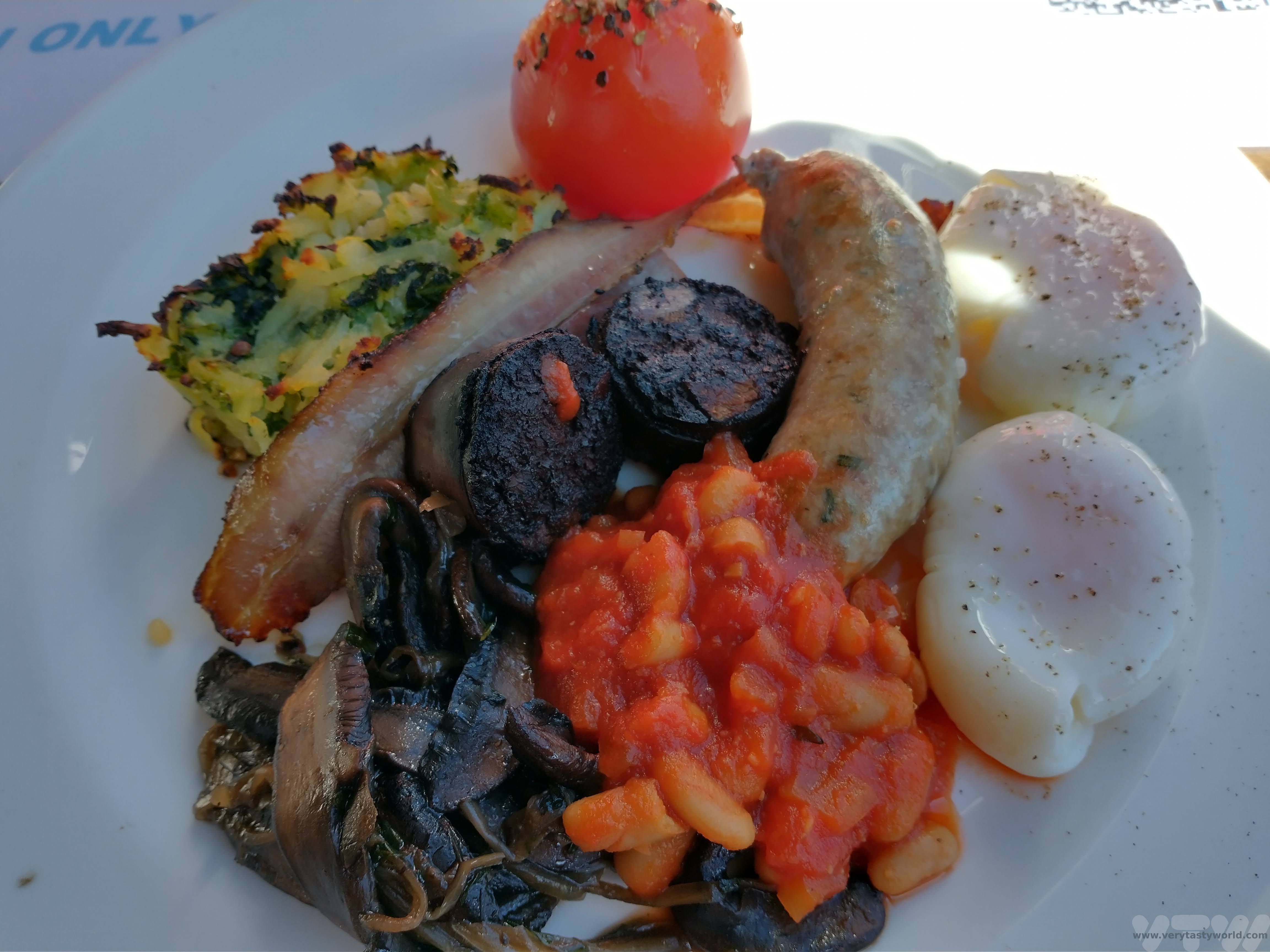
- RECIPE: Vegetable Biryani Tamil Nadu Style

- RECIPE: Biryani Raita Recipe

- The Leh to Manali Highway
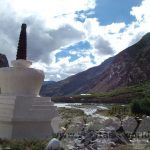
- Places to Visit in Munnar, Kerala
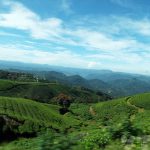
- Kumarakom Houseboats on the Kerala Backwaters
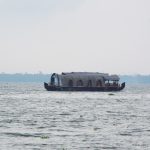

Thanks so much for reading. We hope you enjoyed this article. If you’d like to keep up to date with new posts and recipes, please subscribe to our newsletter or follow us on social media – X, Facebook or Instagram. We always love hearing from you and would be delighted to read your thoughts about this article.
Tree Climbing Lions, Hippo Hordes and Safari Shenanigans in Uganda
Queen Elizabeth National Park is one of the best places to go on safari in Uganda. As well as the Big Five game animals, it also has one of the biggest concentrations of hippos on the planet and one of world’s only two prides of tree climbing lions.
About the Queen Elizabeth National Park
Queen Elizabeth National Park is conveniently located between Kibale to the north, where you can trek with chimpanzees and Bwindi Impenetrable to the south, where you can trek to see the critically endangered mountain gorillas. On our way we stopped at the equator. It is possible to reach QENP from Kampala – it is located around 400km west of Uganda’s capital and it would take around 8 hours to drive there.

QENP was founded as a National Park in 1952 and is nearly 2000 square kilometres in size. It was originally named the Kazinga park but renamed after Queen Elizabeth II visited in 1954. QENP’s range extends from Lake Edward in the southwest to Lake George in the northeast. Both lakes are connected via the Kazinga channel. The park largely comprises savannah and grassland.
The best time to visit is during the dry season (January – February and June – September) but we visited in late October. The reason for this is that we were on a budget and timed our visit to take advantage of cheaper gorilla trekking passes later in our trip. October is officially rainy season but it doesn’t rain all the time and usually not all day. In fact we got really lucky with the weather for most of our trip and managed to see a huge variety of wildlife.
Entering Queen Elizabeth National Park
We enjoyed a couple of days on safari in this incredible park. We arrived from Kibale in the afternoon, crossing the equator. As with all national parks, you need a permit to enter and you are signed in and out. The Uganda Wildlife Authority website has information about the park, including entrance fees. We toured Uganda with a local company and they had pre-arranged the permits for us.
There is a small visitor’s centre which has some info about the park as well as a café which serves locally produced food and has a good wi-fi connection. It’s also possible to buy gorilla coffee there – the profits go towards the conservation of these marvellous and critically endangered primates, which share around 98% of our DNA.
En route to our camp at QENP we received notification of a sighting. A pair of lions which had been, ahem, mating in the afternoon and, if you’ll forgive the expression, were all shagged out.
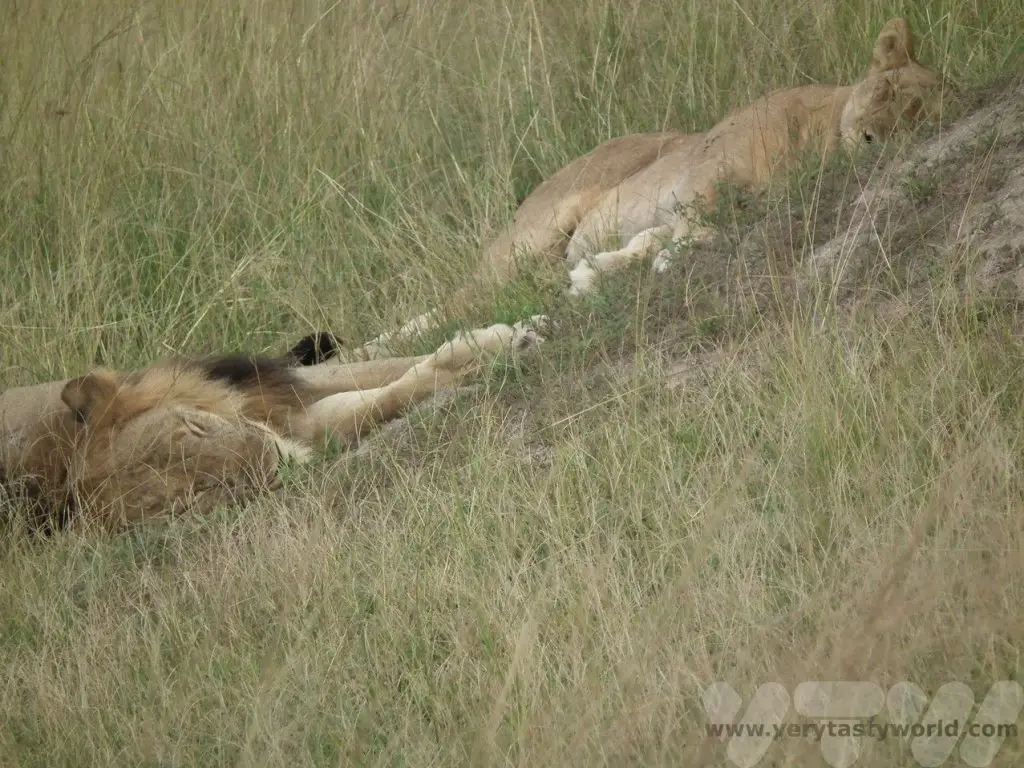
We stayed at the Kasenyi Safari Camp, located near Lake Bunyampaka. We had a large, tented room on a platform with a private bathroom. It was surprisingly luxurious and really didn’t feel as though we were under canvas. The lodge has a large, thatched communal area where everyone comes together to dine in the evening.
Because the camp is located right within the park the animals frequent the area, so we had to be accompanied by a gun-bearing ranger every time we wanted to walk between the main camp and our tent so that we didn’t end up being a very tasty snack for the lions. We could go out safely onto the tent’s decks to view the animals at night.
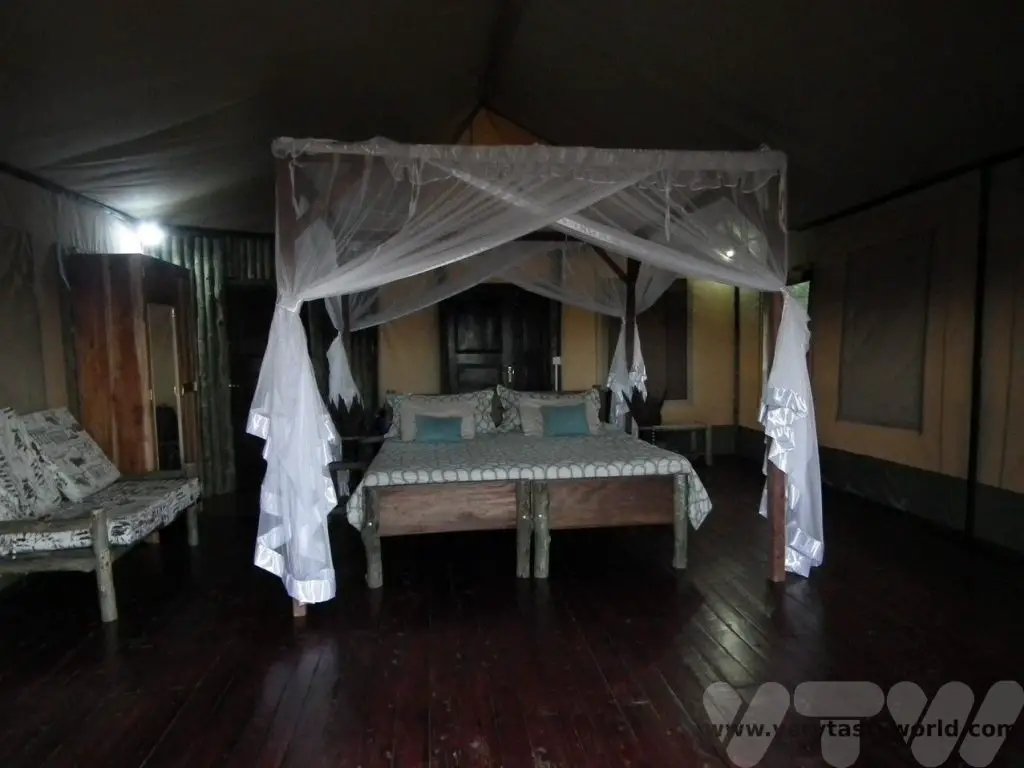
And catch the sunset over the lake.
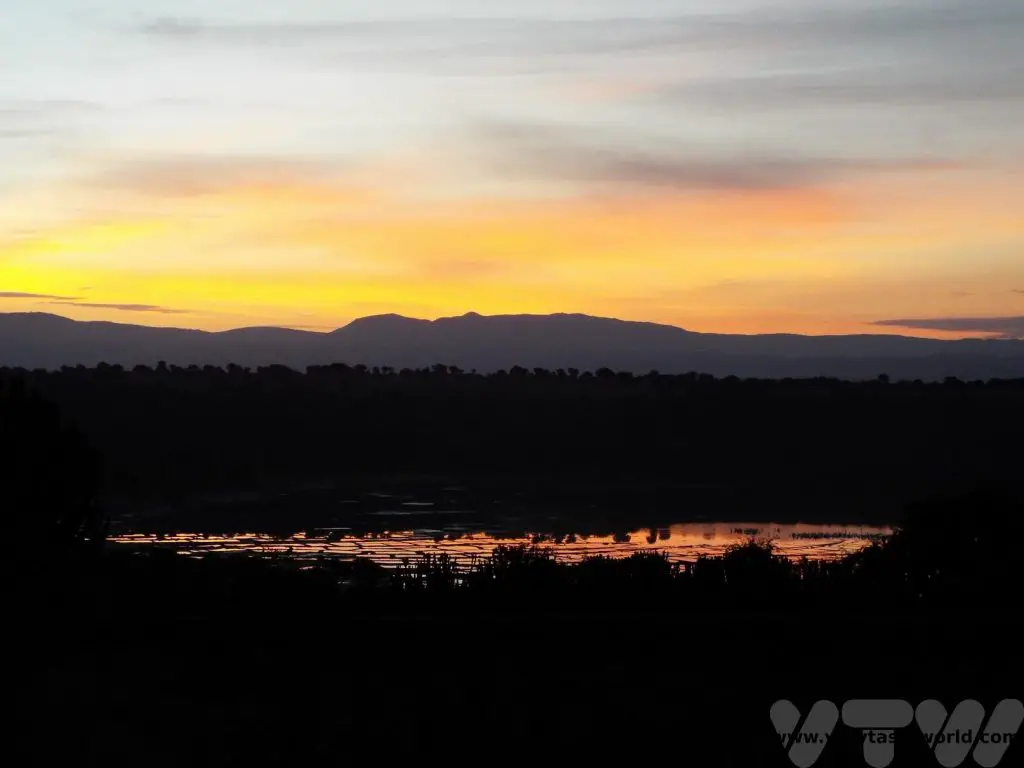
On Safari in QENP
It was an early start to get out into the park on the game drive. These drives tend to take place in the early morning and late afternoon as the wildlife is more active at those times. The animals tend to take a nap during the heat of the day. So for a morning drive before breakfast, take a couple of snacks to keep you going until you get back to camp.
Our first encounter was with an elephant strolling majestically in the morning sunlight.
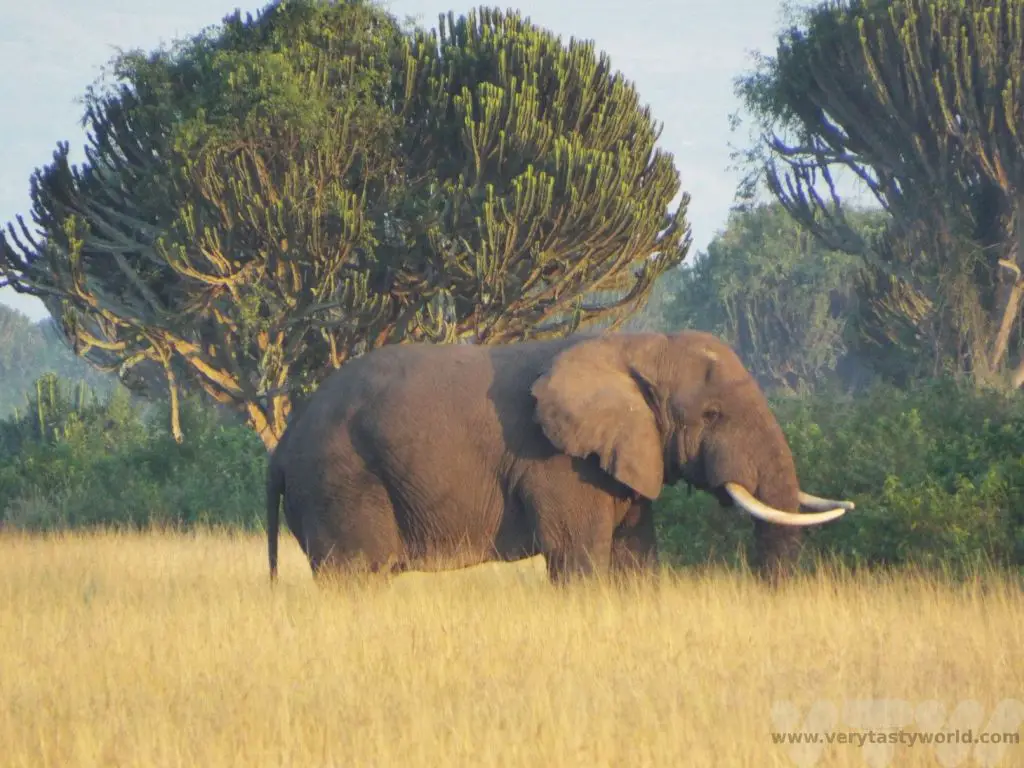
Another elephant decided that what he really needed was an early morning scratch on a rock.
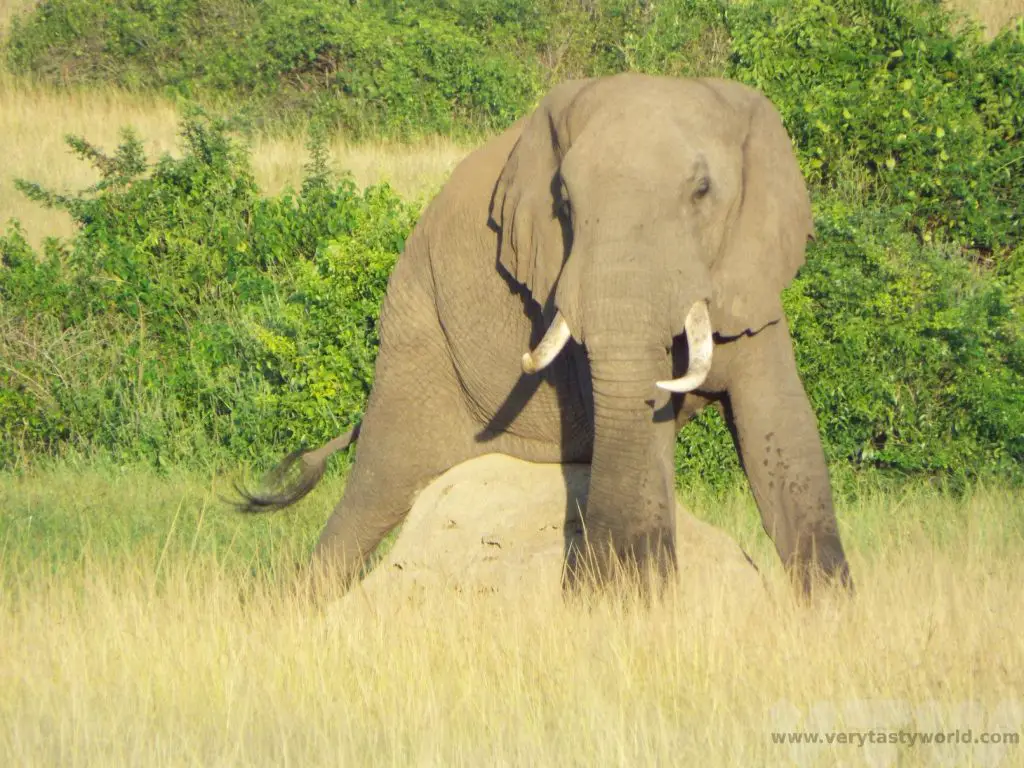
We also encountered buffalo…
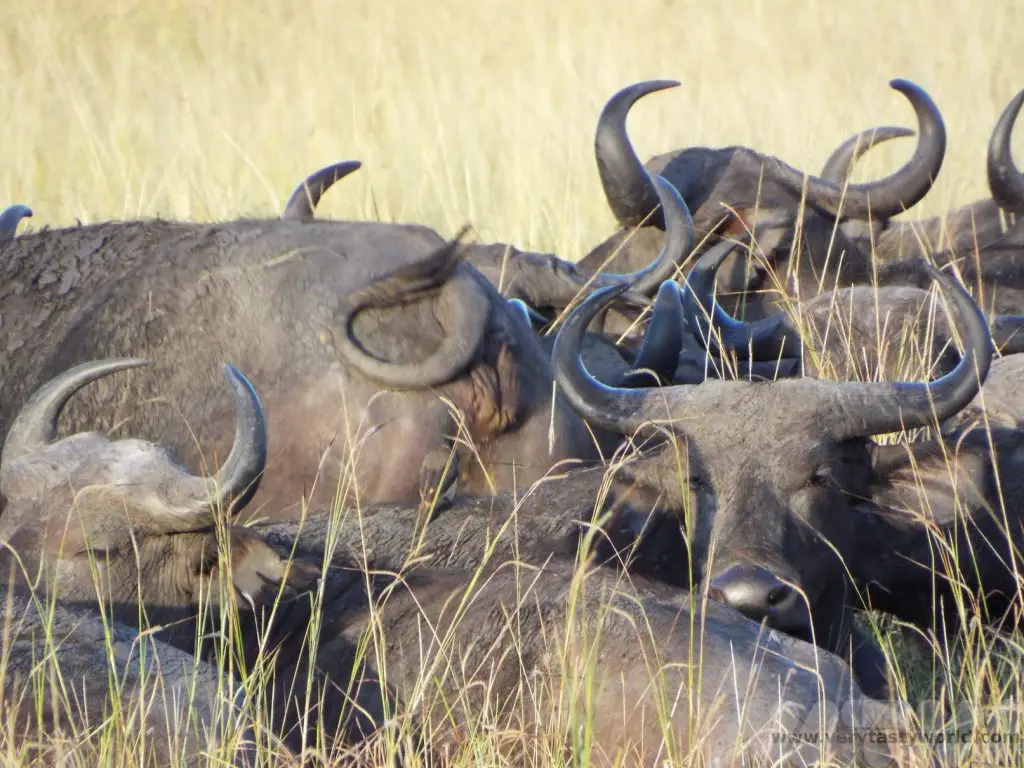
…a defassa waterbuck…
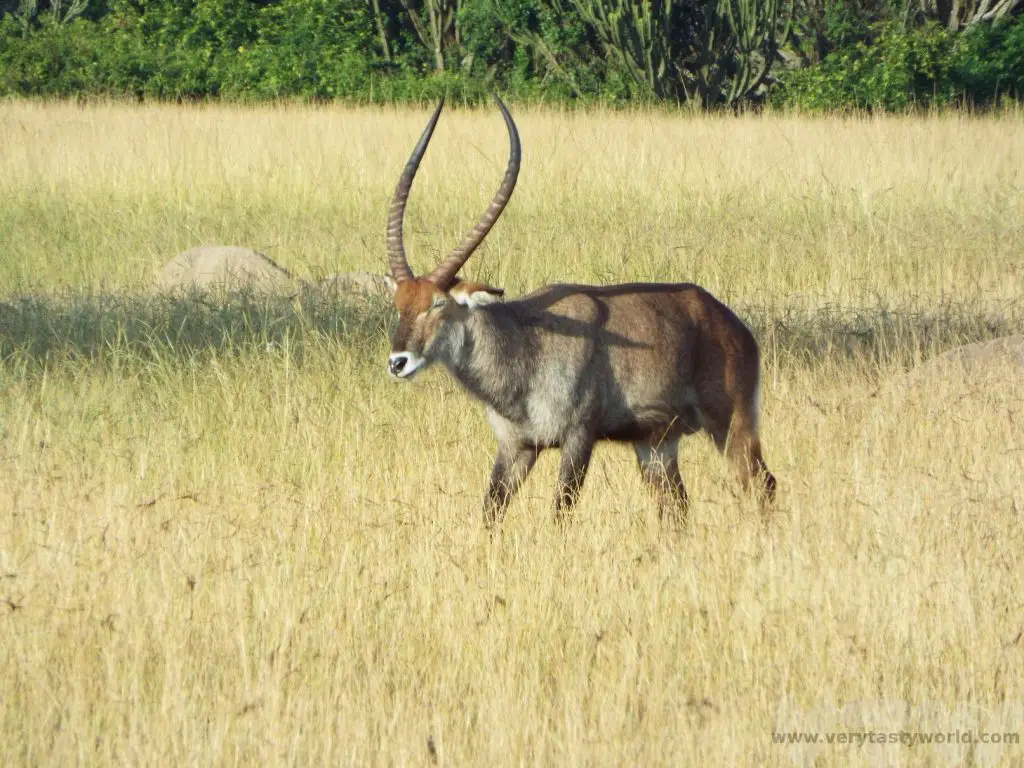
… and a couple of common duikers having a bit of a battle.
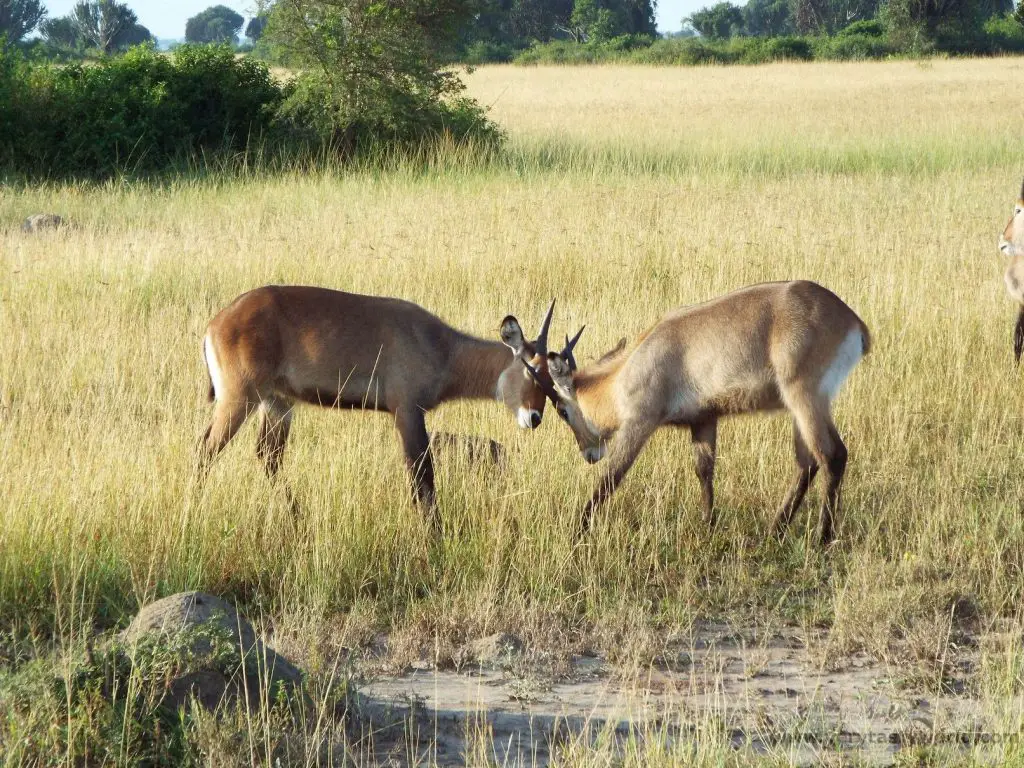
Many of the safari guides know each other, even if they work for different companies, and they all co-operate to let everyone know about animal sightings. If you are lucky, you will get there first and have the prime position for taking photos from your vehicle, at other times you may have to wait a while as vehicles wait for others to move on.
Then it was back to camp for breakfast. It was here that we discovered that we could go off-menu and ask for a local breakfast, and discovered the joys of a Ugandan rolex – an omelette rolled up inside a chapati. Delicious!

Kazinga Channel Boat Trip
Our afternoon didn’t involve hanging around the lodge waiting for all the wildlife to come out and play in the evening, we had a boat trip planned.
The Kazinga Channel is a waterway that links Lake Edward and Lake George in the park. It has one of the highest concentrations of hippos in the world. A boat trip along the channel is a fantastic way to spend a couple of hours.
Top tip: When boarding the boat, ask which side to sit on – the boat will travel a set route and the ideal position for optimum wildlife viewing is that side that skirts the shoreline. We sat on the left side, but the route may have changed in the intervening time since our visit. That said, it’s okay to move around the boat, in order to take photos, during the trip. We saw many, many hippos.
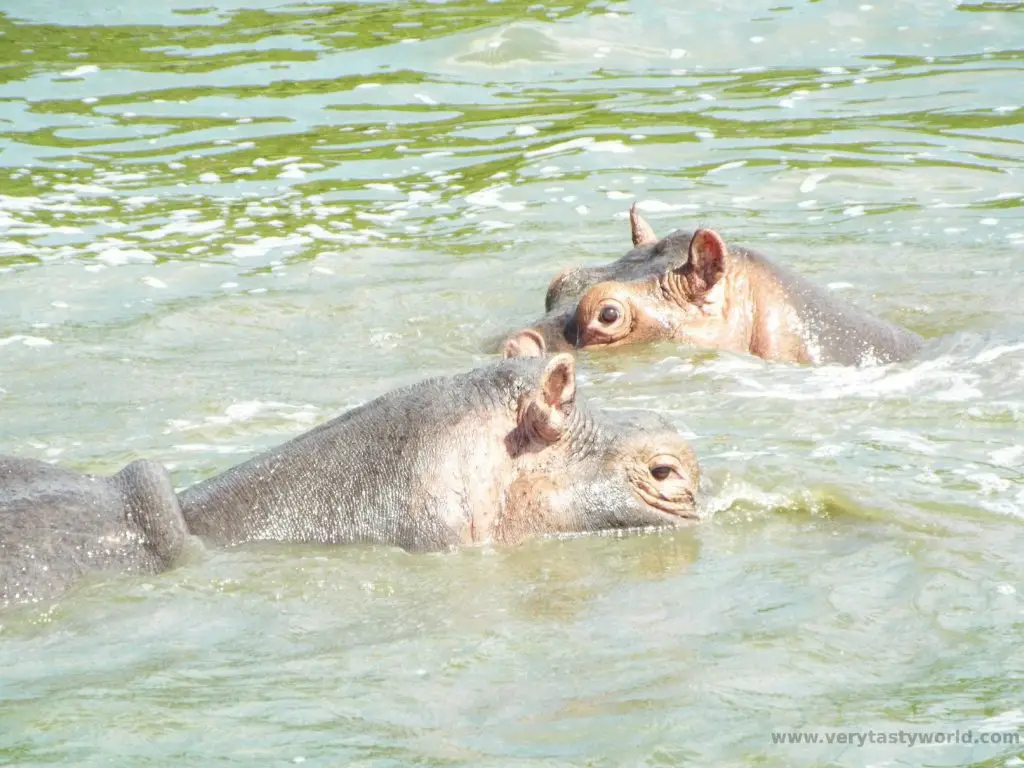
The bird life was fascinating as well.
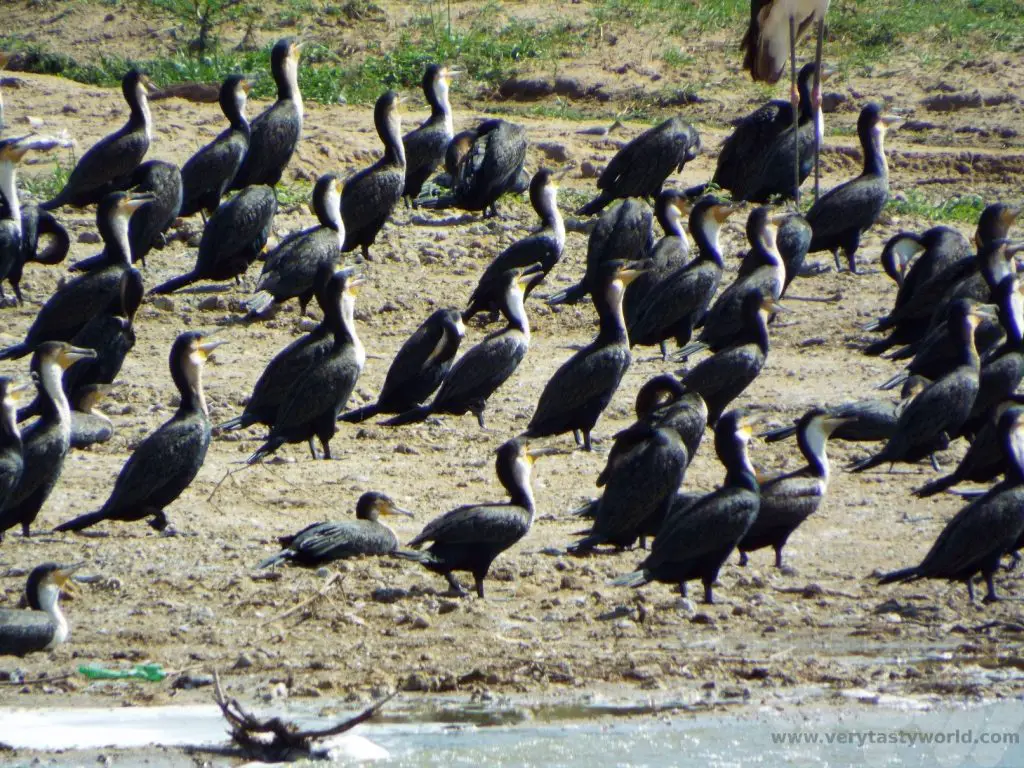

Beautiful kingfishers, so different to the turquoise kingfishers from home, were waiting patiently or hovering in the air looking for fish in the water below.
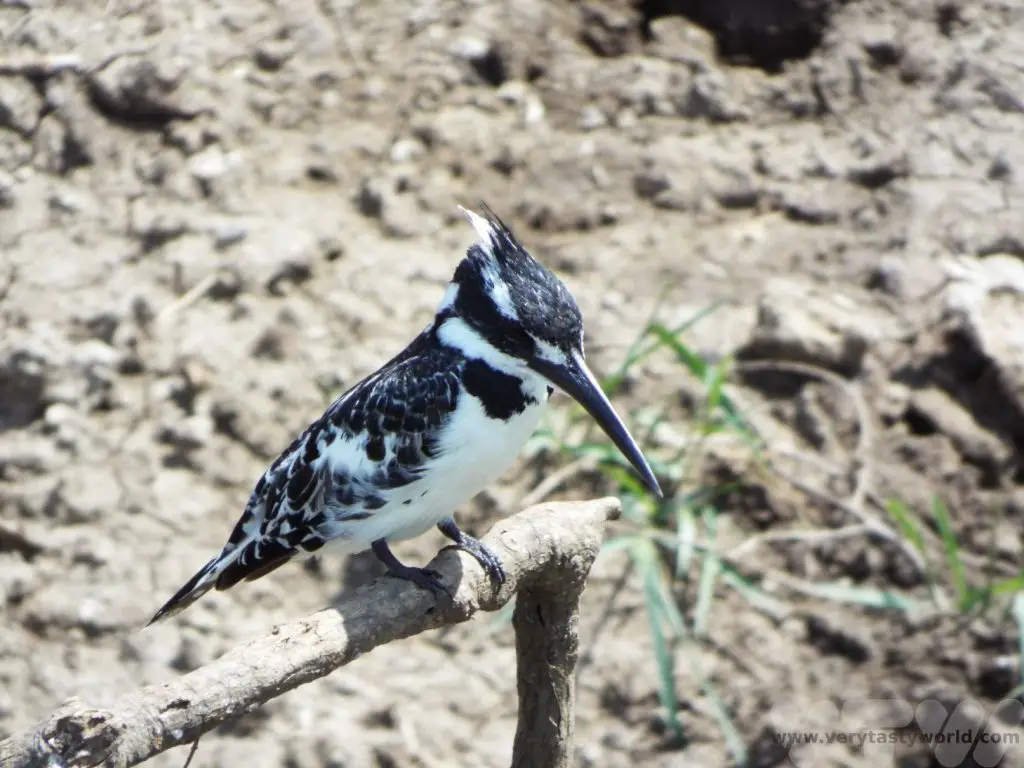
And, just as we headed back to the dock, we saw a baby hippo. Altogether now, aaah.
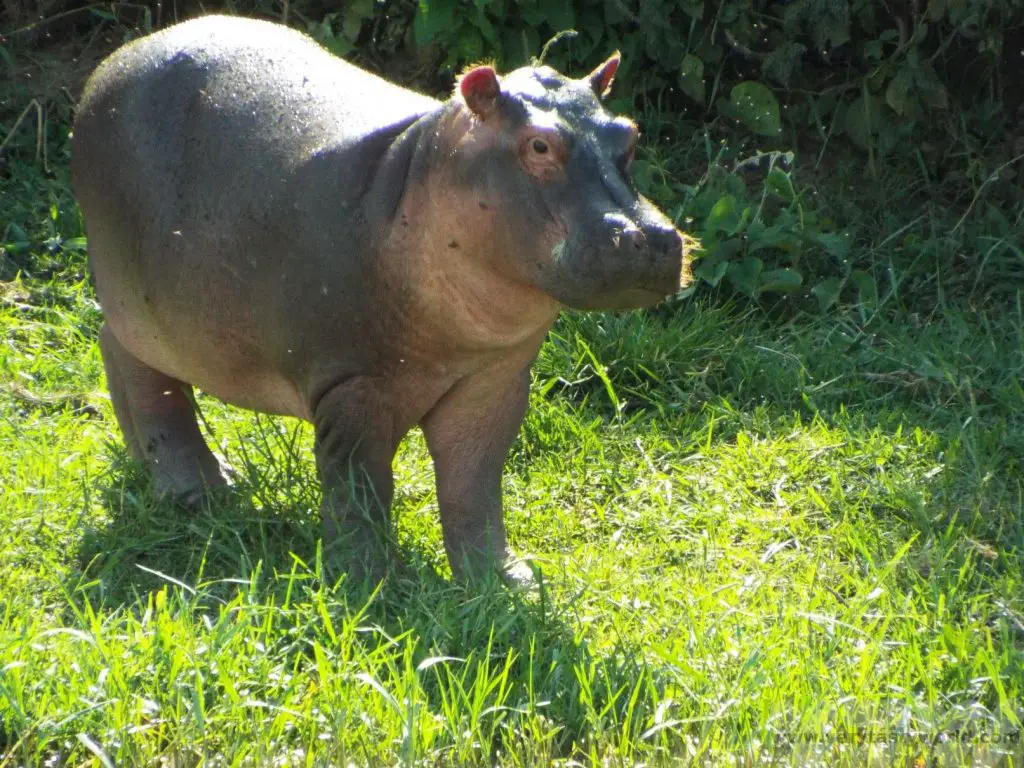
The Tree Climbing Lions of Ishasha
The following day we headed out towards the Ishasha sector located to the south of the QENP. This is a very special place. It is one of only two locations in Africa where the local lions climb trees! (The other place is Lake Manyara Park in Tanzania.)
We headed directly to our lodge and stopped to see some lions on the way.
Can you see them?
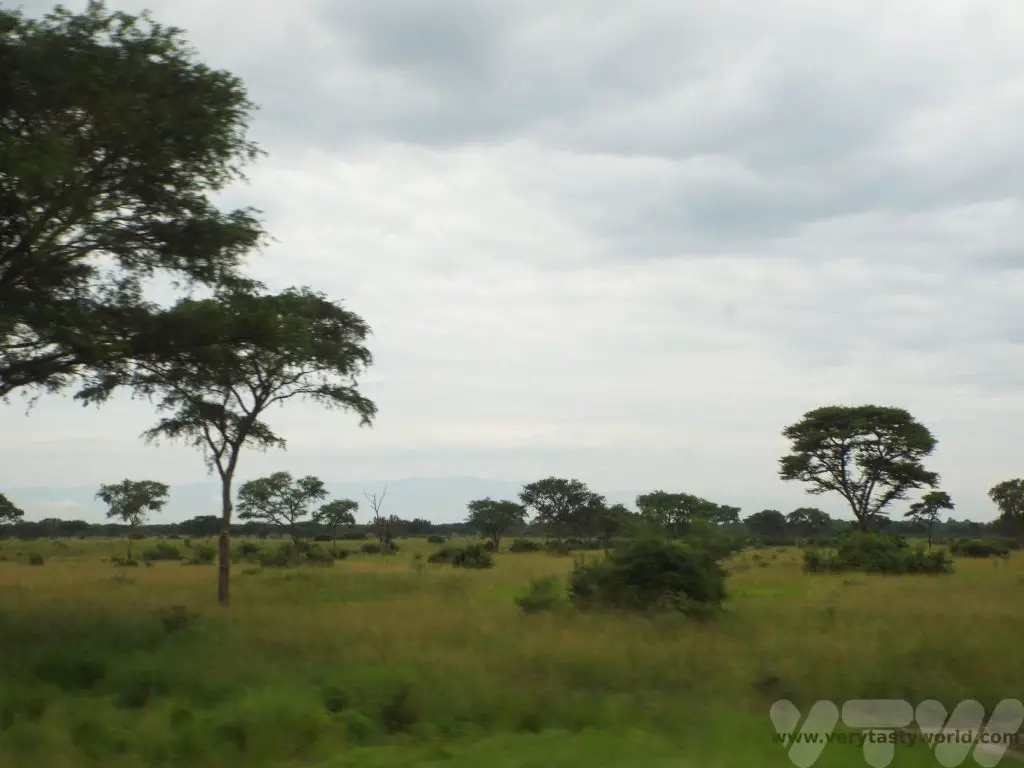
Fortunately, our cheap little bridge camera had a pretty good zoom.
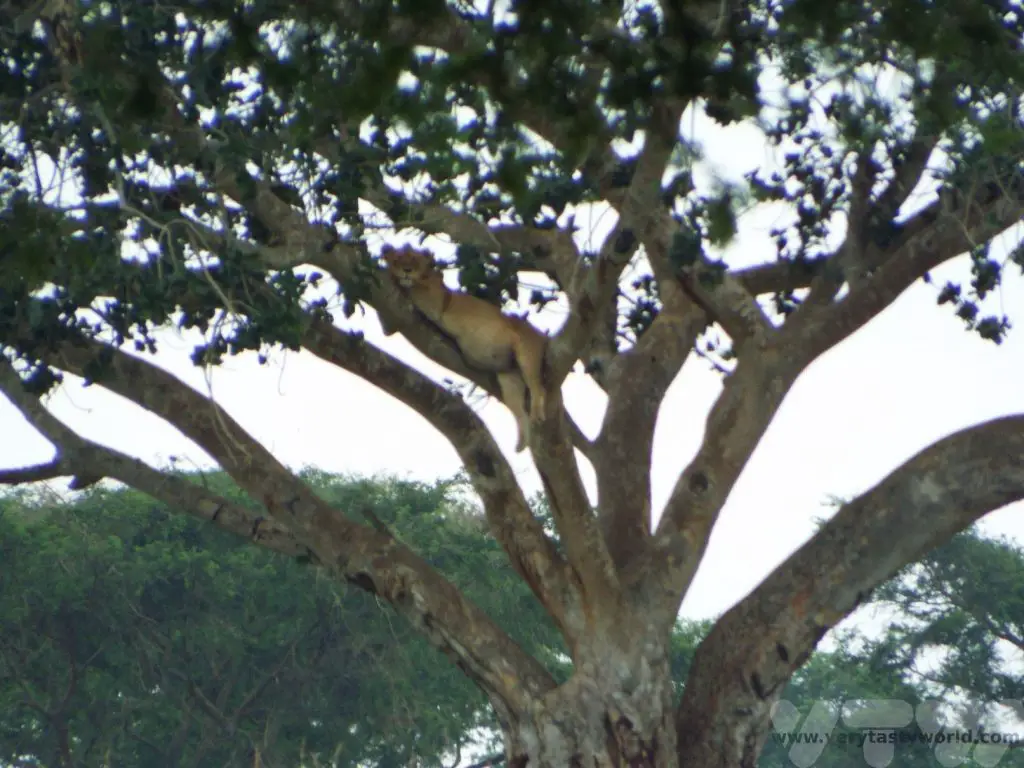
Unlike some big cats (and some little cats) lions aren’t natural climbers. It is thought that they have learned this behaviour in this very localised area. No one is really sure why – there are some theories that the lions climb off the ground to avoid insects or to enjoy a cool breeze during the heat of the day. Apparently it takes some time for them to master the art of climbing and they have to teach their cubs how to do it.
We were thrilled that we had seen the lions and trundled off to our lodge, the Ishasha Jungle Lodge, to have an afternoon rest before the evening game drive.
The lodge was lovely. Outside the entrance was a tree frequented by little yellow weaver birds. We spent ages watching these fascinating creatures. The males try to impress their mates by building the best possible nest in the tree. They spend a long time making them as structurally sound and cosy as possible. But if the female doesn’t consider it to meet her high standards she tears it apart. There’s nothing quite so disconsolate as a male weaver bird whose hard labour has been destroyed.
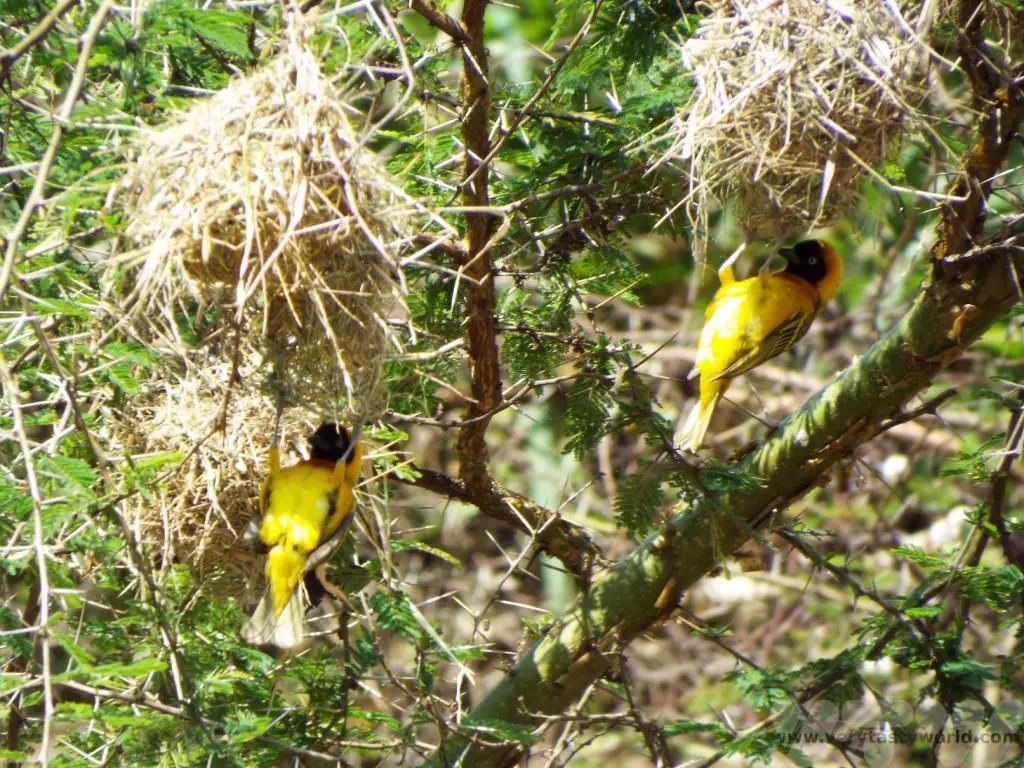
Just as we were about to have a little snooze, our guide got in touch and said that we should go out immediately. He’d received notification of a tree where some lionesses were having an afternoon nap themselves.
We rushed out and, sure enough, there were four tree climbing lions, lazing in the branches.
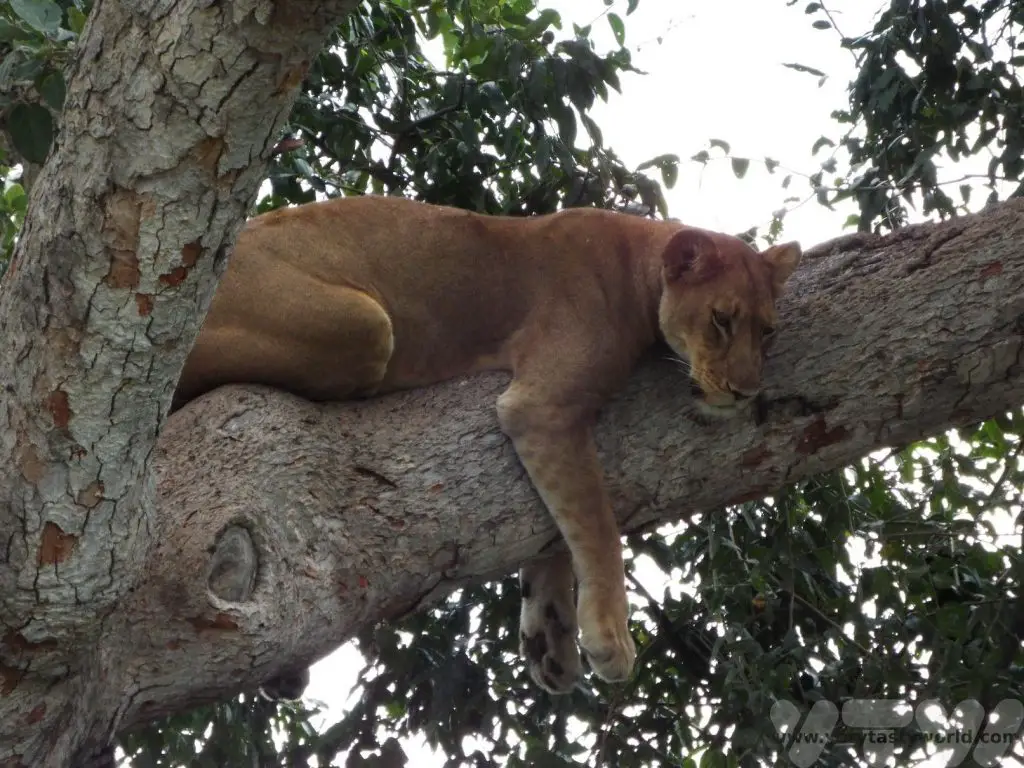
It was so exciting to get so close – just a few metres away from the tree. (Safely within our vehicle, I might add. We were excited but not stupid.)
One of the lionesses was looking extremely pregnant. It wouldn’t be long before some more cubs appear.
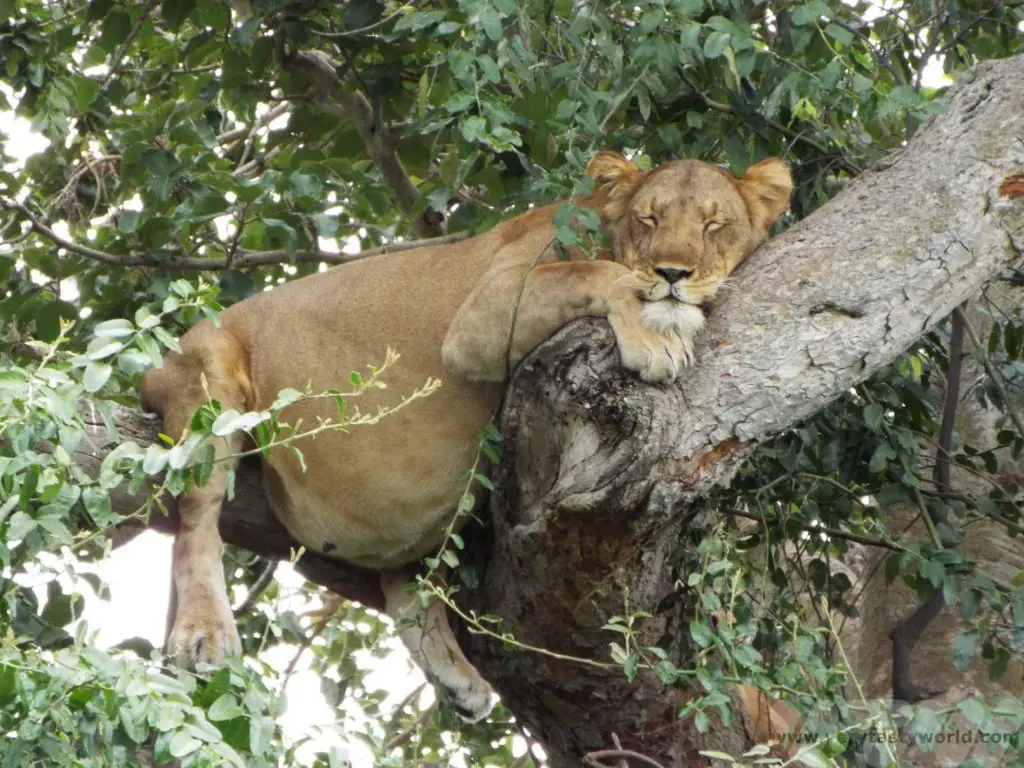
They looked so peaceful, they deserved their own simile: As relaxed as a lion in a tree, right?
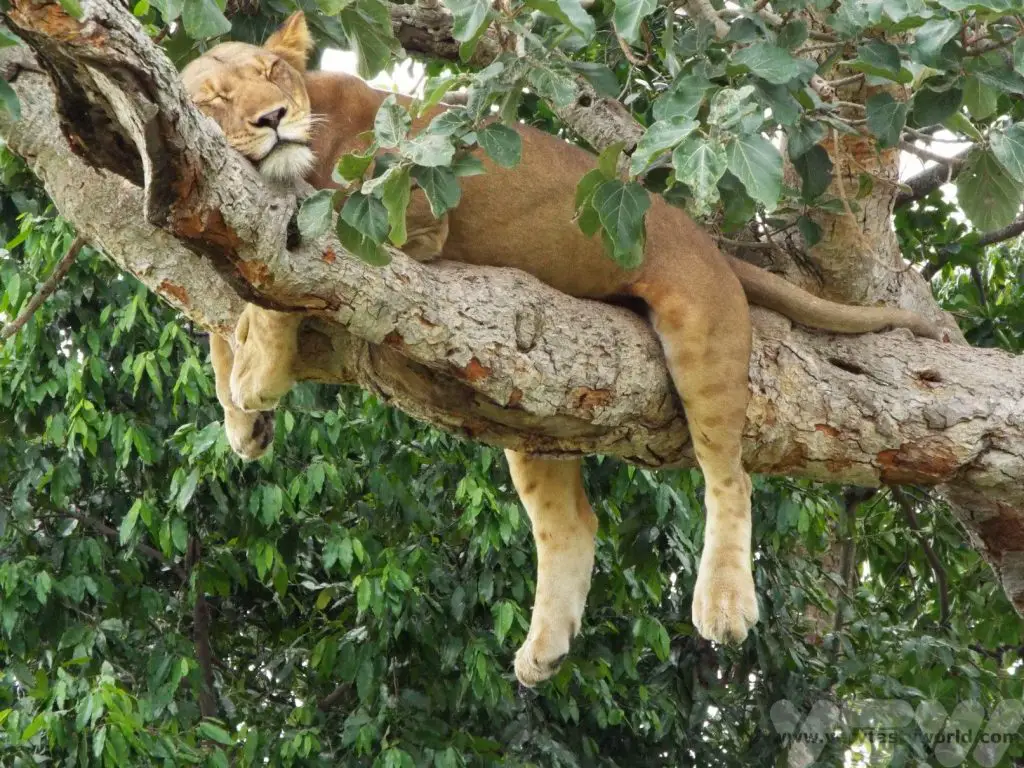
We spent ages just watching them. A really magical encounter. We were extremely lucky – they are not always there, sometimes they are a touch elusive, doing more typical lion activities like hunting.
It is easy to understand why QENP is one of the most popular parks in Uganda. While sightings can’t be guaranteed there is a good chance of seeing some remarkable wildlife.
Related Posts You May Enjoy

Uganda Chimpanzee Trekking in Kibale
Uganda is one of the best places in the world to view wildlife. From the Murchison Falls park, through Kibale National Park, the Queen Elizabeth Park, and into Bwindi Impenetrable, where the extremely endangered mountain gorillas reside, there are opportunities to get really close to all sorts of amazing wildlife all over the country. While it’s very possible to encounter all the ‘big five’ game animals Uganda is also an exceptional location for encounters with large primates. Uganda’s chimpanzee trekking is a wonderful experience and well worth undertaking. Here’s what to expect.
Kibale National Park is one of the best places to go chimpanzee trekking. Kibale is located in western Uganda, around 340 km from Kampala. It would take around 5-6 hours to drive there, depending on road conditions.
You need a permit to enter the park – the tariffs are published on the Uganda Wildlife Authority website.
Uganda Chimpanzee Trekking – The Briefing At Kibale
On arrival at the park you receive a briefing and are then split into small groups. Each group comprises six people who are accompanied by two guides. The chimps are wild but habituated, that is, they are comfortable in the presence of humans. It is a privilege to be able to track them, so it is important to pay close attention to the briefing and to follow the guides’ instructions at all times.
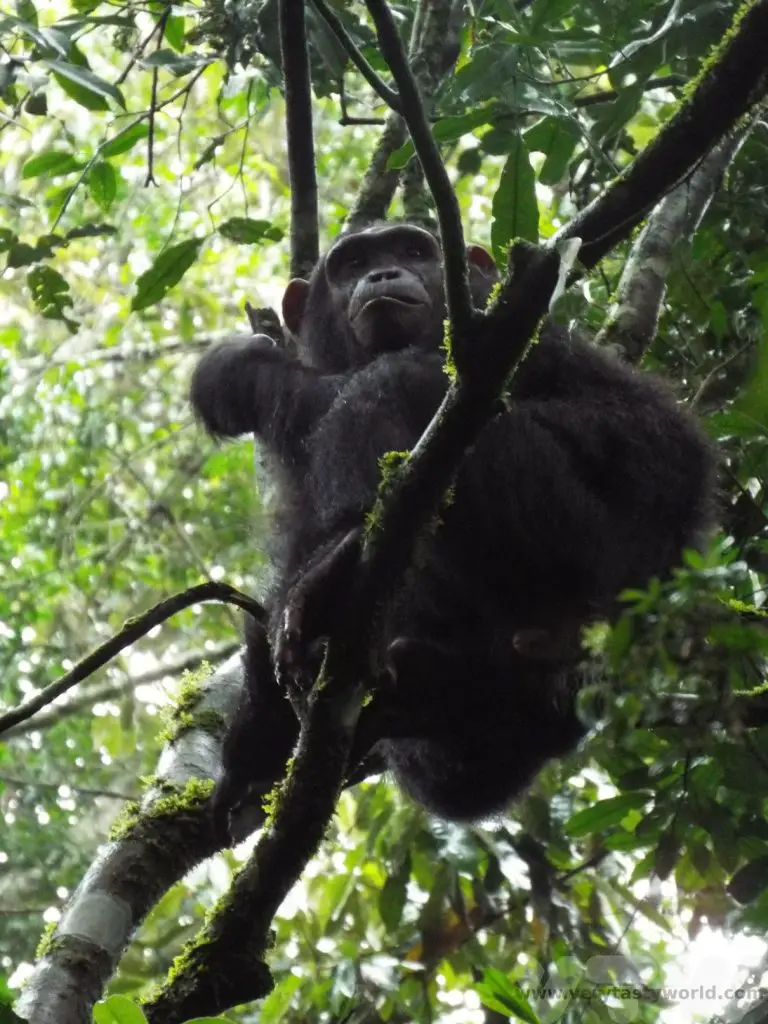
It is essential not to visit if you are feeling unwell. We share about 98% of our DNA with these amazing primates so passing on a virus or disease could wipe out the population.
There are a number of rules to abide by to ensure the safety and welfare of both the chimps and the humans while tracking: these include staying with the guide, keeping your distance from the chimps (unless they decide to walk past you) and – our favourite – don’t imitate the chimps’ vocal sounds – you don’t know what you might be saying!
Chimpanzee Trekking
We arrived in the morning and many of the chimps had yet to wake up. So the first part of the trek involved looking up. Sure enough, the chimpanzees were in the trees. They were eating breakfast – their diet mainly consists of fruit, supplemented by insects such as termites and leaves. The forest in Kibale has an abundance of fig trees so figs are usually the breakfast of choice.
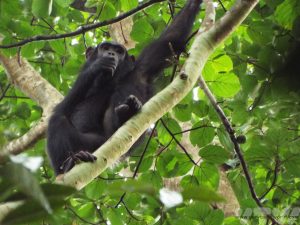
Walking though the forest is relatively easy – unlike Bwindi Impenetrable, the terrain is pretty flat and the paths through the forest easy to navigate. Sturdy shoes are recommended and waterproof gear is useful if you are trekking during the rainy season.
Each group tracks the chimps through the park, following the guides’ instructions in order to keep both the chimps and the visitors safe. It’s advisable to be reasonably fit as you may need to move pretty quickly to follow the chimps.
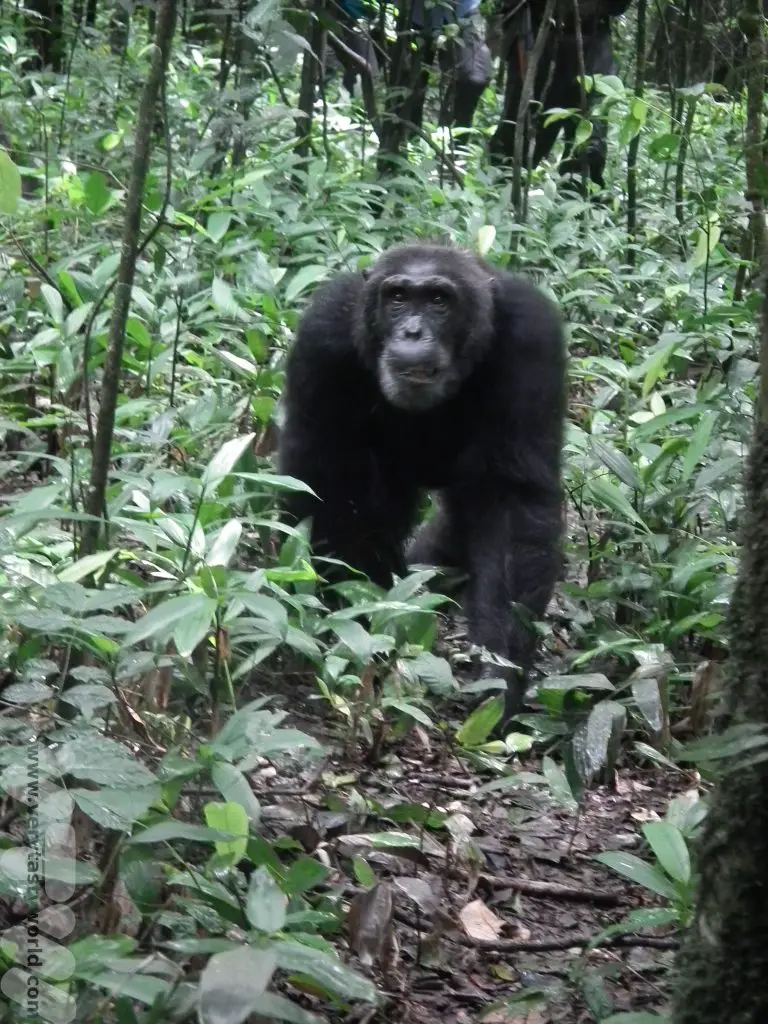
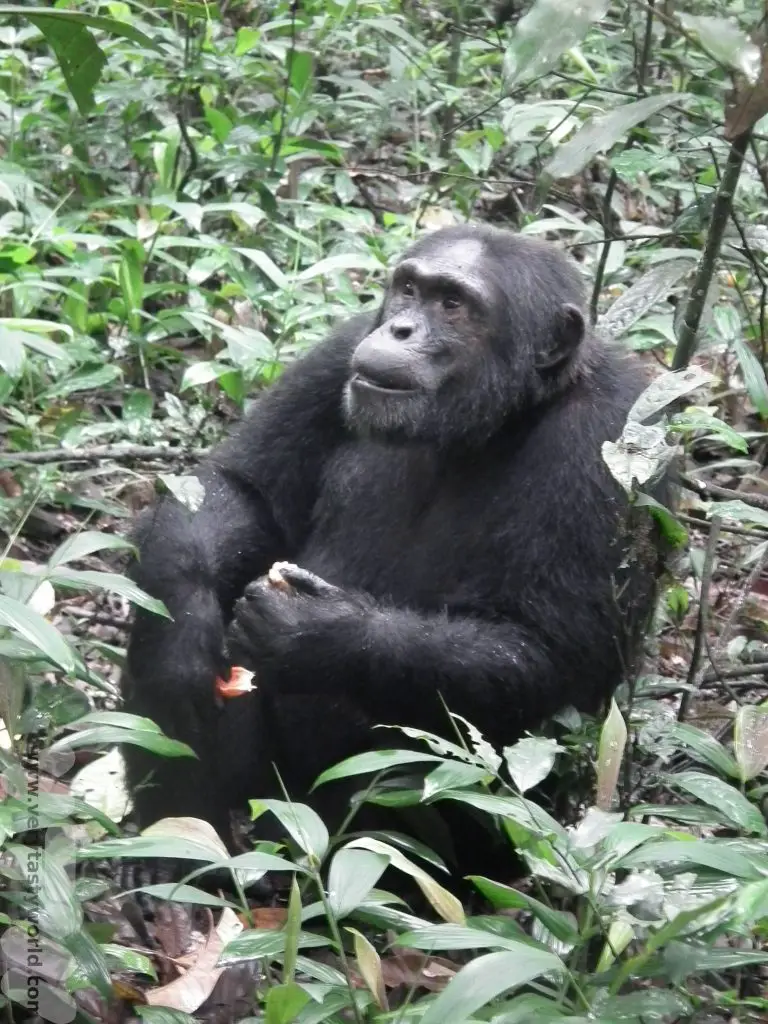
As the day progresses some of the chimps will come down from the trees and wander through the forest. It’s okay to follow them – just stay with the guide and keep a respectful distance.
One chimp climbed down from his tree and decided that he was going for a walk. He just strolled by. The rangers told us that you are lucky if you get within 10 metres of a chimp. This chimp passed by within 10 centimetres! He was totally nonchalant as he walked on. I could barely contain my excitement!
Other Activities In Kibale National Park
While in Kibale, it’s also possible to visit the local communities. The Bigodi community offer the chance to see how the local people live and work. We visited various craftspeople, including a brewer who made his own banana beer, weavers, a local shaman and a coffee maker .
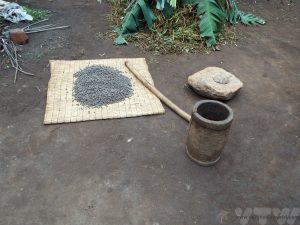
The local coffee maker makes a very fine brew. The coffee berries have been dried in the sun…
… they are then pounded to remove the husks
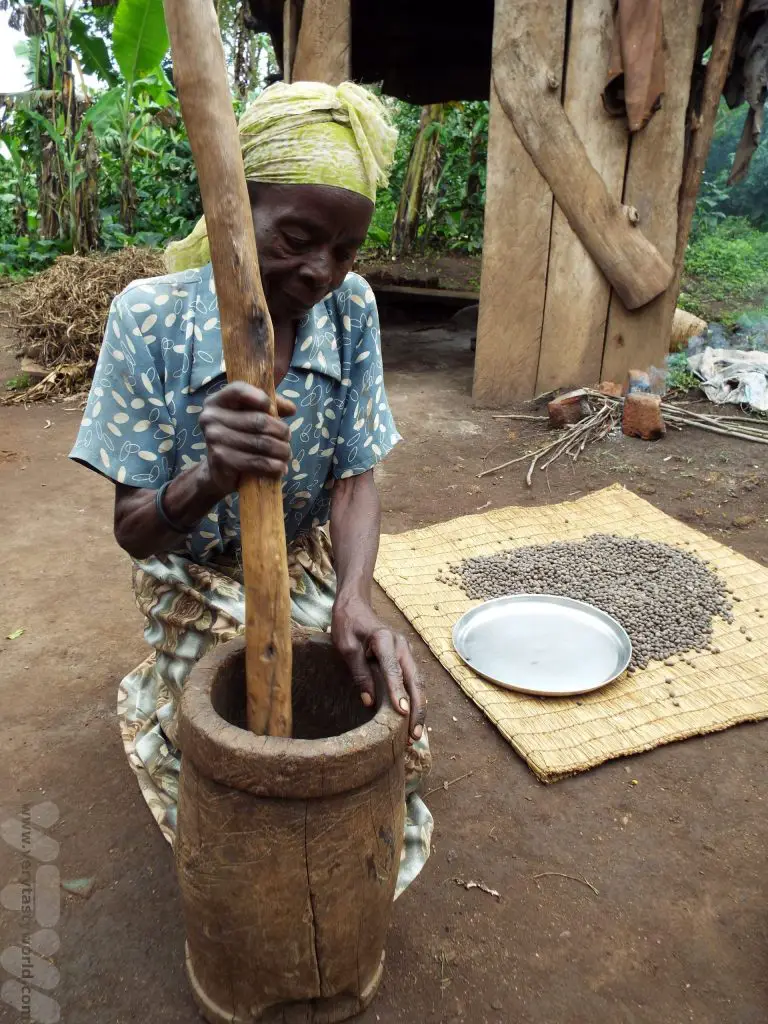
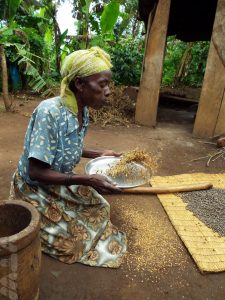
It’s a fine art to blow away the husks from the beans.
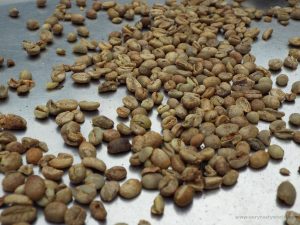
Then it’s time to light the fire and roast the beans .
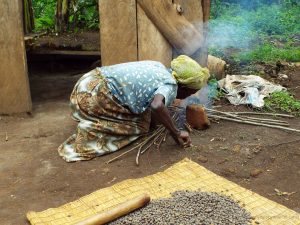
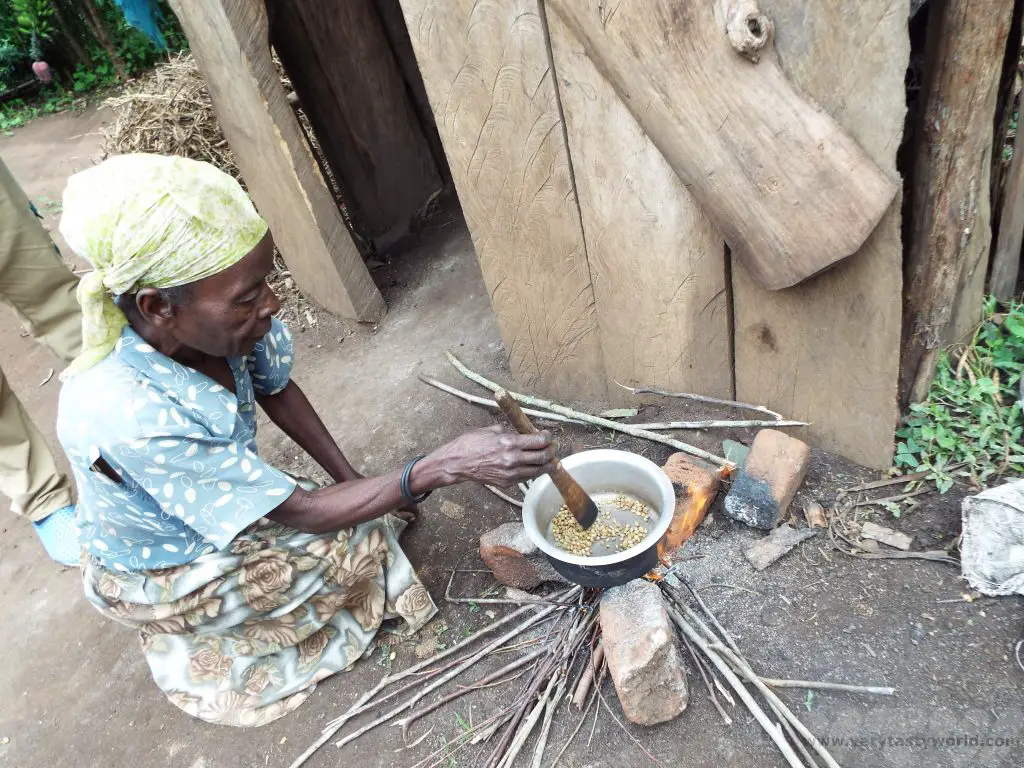
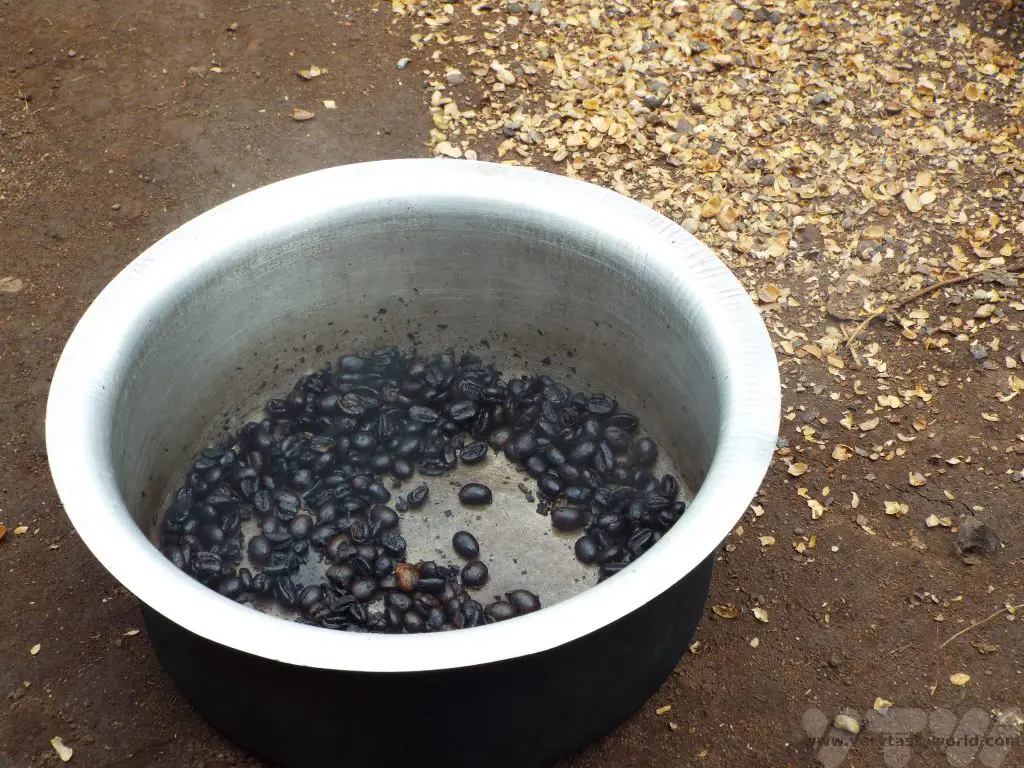
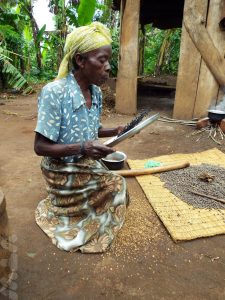
They are cooled off before grinding.
The final step is to brew with water for a damn fine cup of coffee.
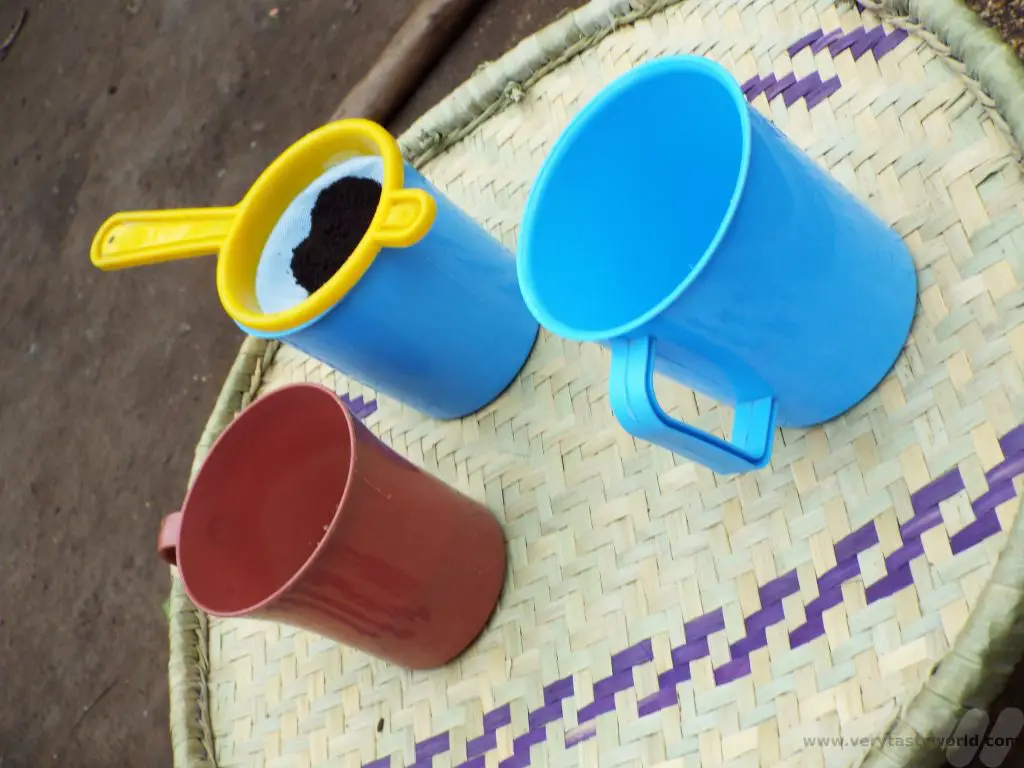
From bean to cup in half an hour. Cheers!
We also met the banana brewer. He stores large bunches of bananas in a wooden shed on stilts. A fire is lit underneath to ripen the bananas. The fruit needs to be ripe but not over-ripe. The bananas have a natural sweetness and the sugars are perfect for fermentation.
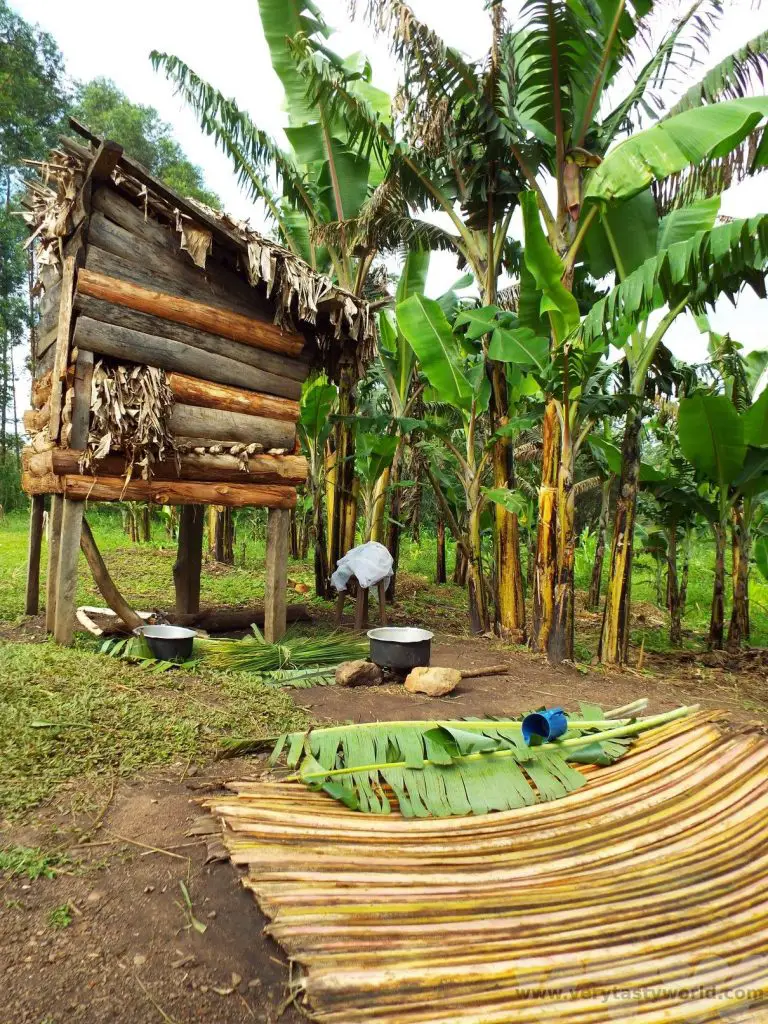
The bananas are peeled, mashed and mixed with leaves to extract the juice. The mash is filtered to separate the juice from the pulp. The resulting liquid is fermented for a day or so then bottled to produce a tasty and refreshing banana beer.
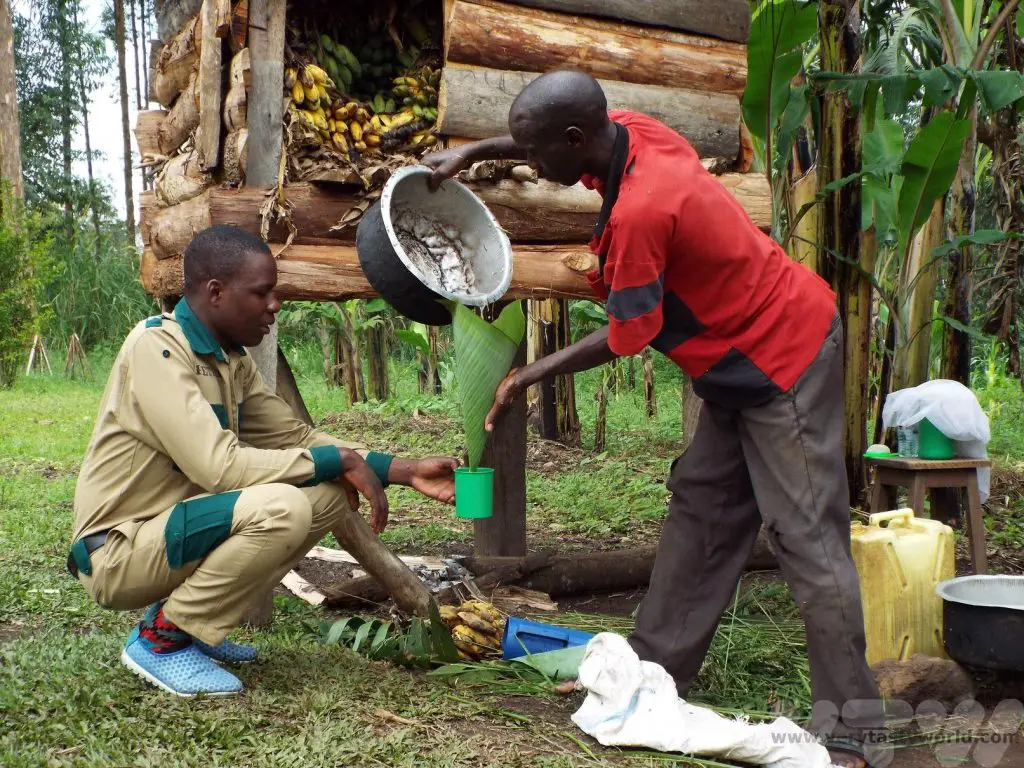
Some of the beer is distilled into a banana spirit which packs a punch!
A local shaman taught us about the medicinal uses of plants in the area and demonstrated some of the healing rituals he performs within the community.
We also met some weavers who showed us how to weave baskets using reeds from the area.
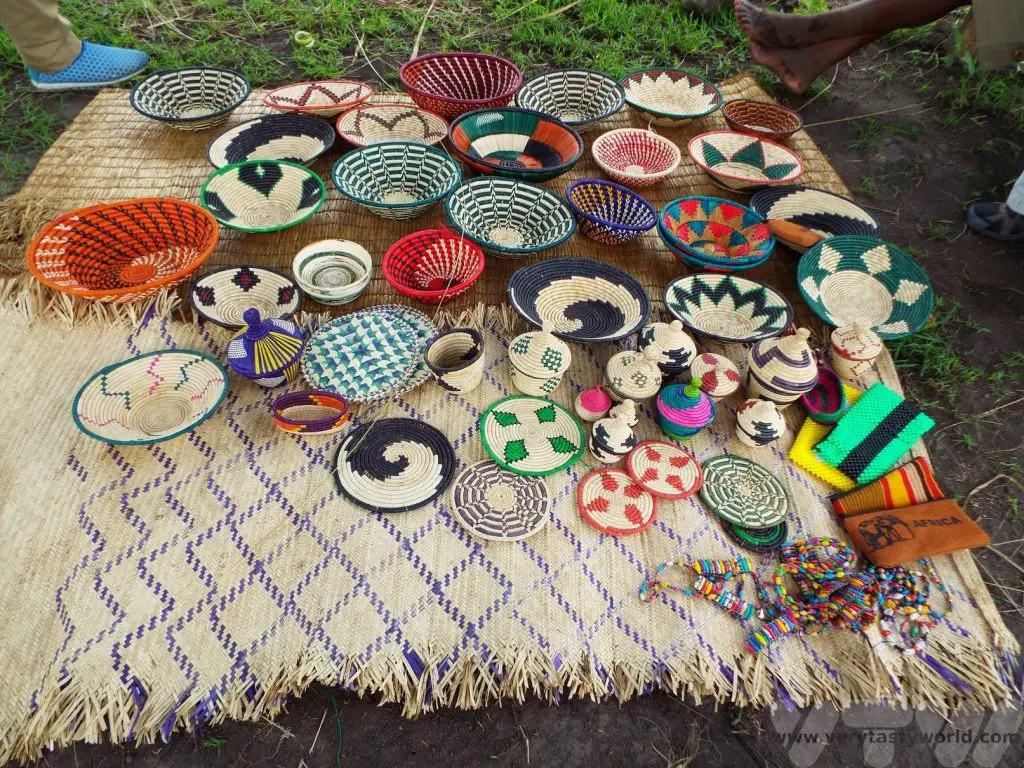
It required a lot of dexterity – they made it look so easy!
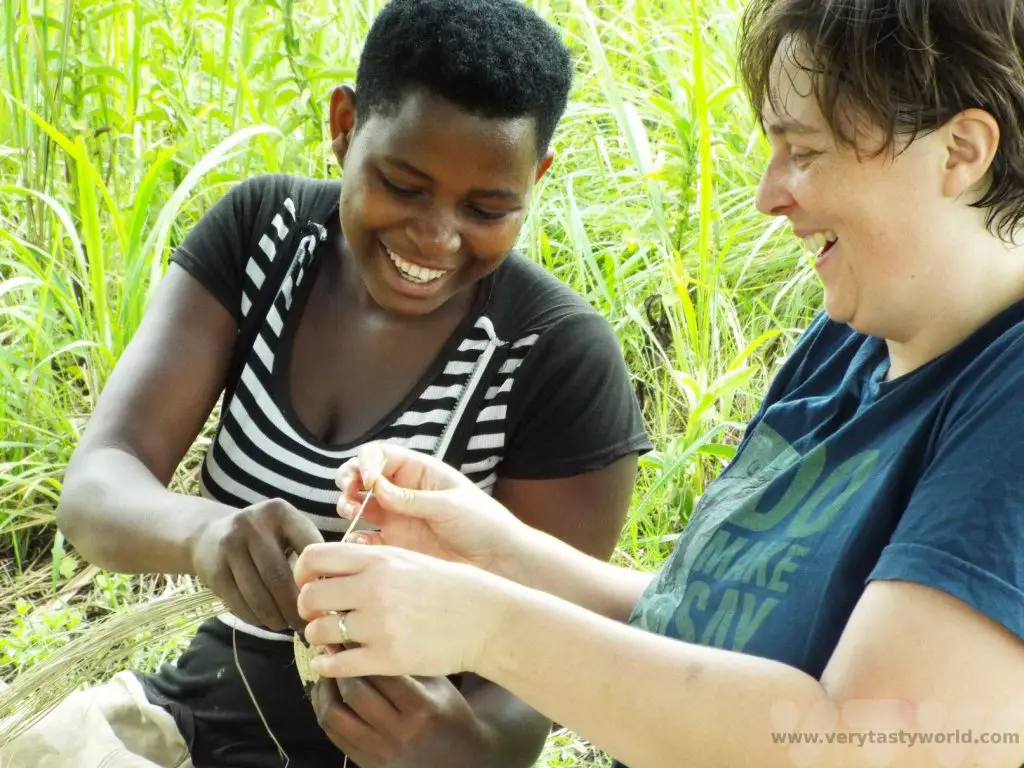
Related Posts You May Enjoy

Ziwa Rhino Sanctuary Uganda
Uganda is known as the ‘Pearl of Africa’ and is a fantastic place to visit to see wildlife. The Ziwa Rhino Sanctuary is located in Nakasongola around 170km from Uganda’s capital Kampala and it takes around 3.5 hours to reach it on the Gulu highway. It’s possible to stop to admire the Nile en route (the source of the Nile is in Jinja, around 70km from Kampala) and meet a few baboons by the roadside – carefully and from a distance.
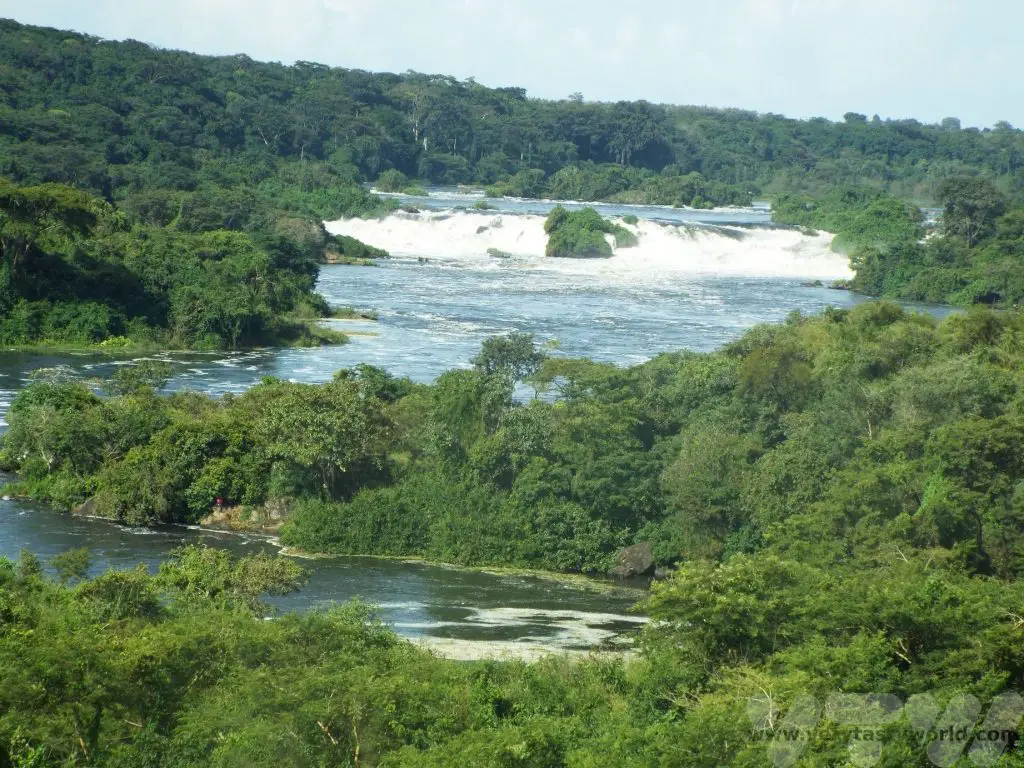
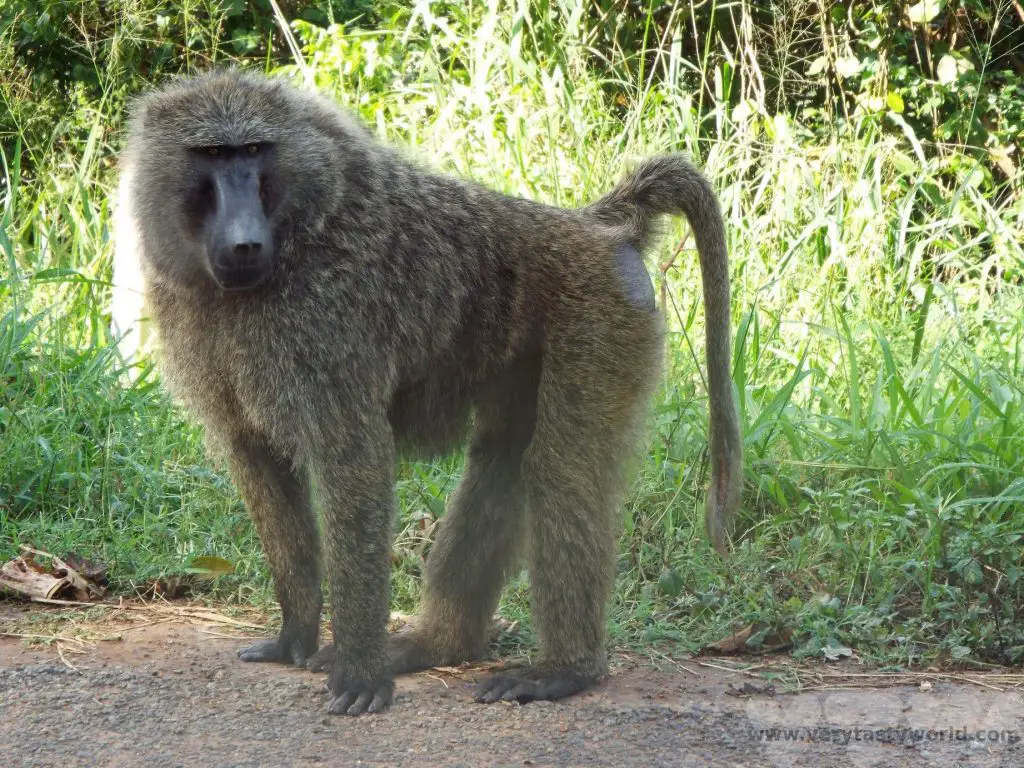
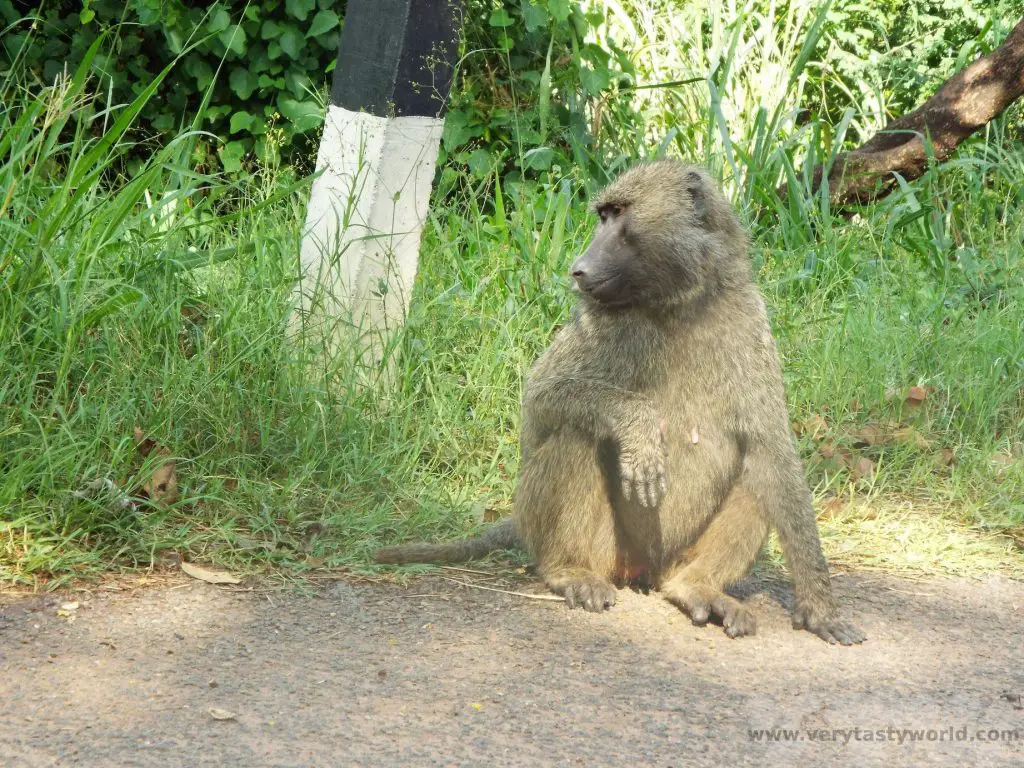
We visited Ziwa on our way to the Murchison Falls National Park. The park itself is the largest in Uganda and four of the so-called Big Five game animals can be found there. All except rhinoceros.
The southern white rhino population of Uganda used to be vast but they were poached virtually to extinction, the rhino horn sadly being considered to be a rare and valuable medicine in other countries. Six rhinos were reintroduced to Ziwa between 2001 and 2006 and they have managed to breed in the intervening time so that there are now over 30 rhinos.
There are a number of differences between black rhinos and white rhinos. The most obvious is in the shape of their mouths. There isn’t really any difference in their colourings or markings, all rhinos are grey, but it is thought that the name ‘white’ might have derived from the Afrikaans term ‘weidt’, which means ‘wide’, a reference to the rhino’s mouth, which is flat and broad in shape, compared with the black rhino, which has a hooked lip. White rhino also have a longer front horn. White rhino tend to feed on grass whereas their black counterparts eat bushes and leaves. And white rhino are generally thought to be less aggressive and inquisitive than black, which was good to know as we those were the ones we would be tracking.
When visiting Ziwa you wouldn’t know you are in a sanctuary – at 70 square kilometres the area of the land that the rhinos can roam through is vast. It is nothing like a zoo or even a safari park, it feels like savannah wilderness.
What was very lovely was being able to do a walking safari. In Queen Elizabeth National Park we weren’t even allowed to walk from our bedroom tent to the main lodge at the camp, without being accompanied by a gun-bearing ranger just in case any of the local lions were feeling peckish.
The Rhino Ranch and the Briefing
Rhino tracking is available from 7am until 5pm daily. It currently costs $50 for adults and $30 for children (2023). Payments are cashless these days. The price of entry to the ranch includes the rhino walking safari. Birdwatchers may like to know that there are also birding walks available, particularly looking for shoebills. If you stay overnight at the lodge you can also enjoy a night-time walk.
We travelled out to where the rhinos were located and were given a safety briefing. We were to walk together in small groups and stay downwind from the rhino. Rhinos have a great sense of smell but appalling eyesight. They can move very quickly if they want to. If they charge, you are advised to run away in a zig-zag pattern and try to climb a tree if possible. This was consistent with the briefing when on a walking safari in Chitwan, Nepal (although we weren’t lucky in seeing any rhino on that trip). Looking around the area, there didn’t seem to be too many trees that would be robust enough to support us in the event of us encountering a grumpy rhino, so we made sure we followed our guide’s instructions at all times.
Safari At The Ziwa Rhino Sanctuary
Walking through the bush we spotted signs of other creatures living in the area.
We found a discarded snake skin in the grass, although the snake itself was nowhere to be found. Most snakes in Uganda slither off when they feel the vibration of visitors’ footsteps, the exception being the lazy puff adder, which often suns itself on footpaths and can be quite aggressive. It is responsible for most snake bites in the region. For this reason when we went walking we wore sturdy walking boots and long trousers.
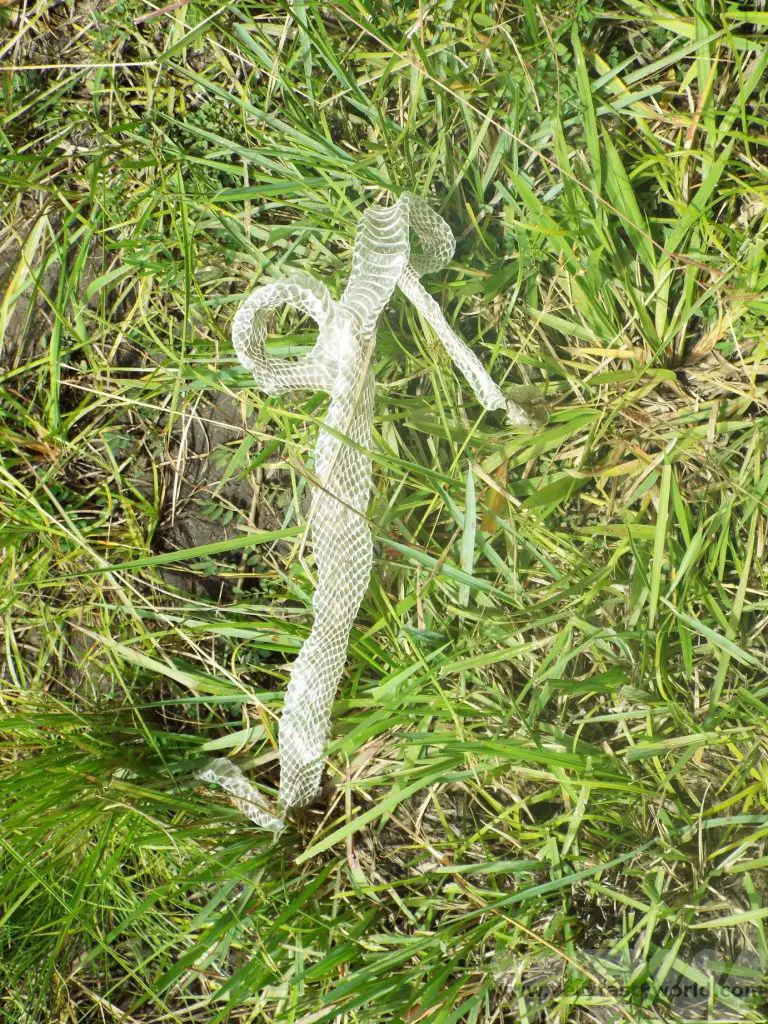
We also came across some Uganda Kob who were frolicking in the grassland. We would see these lovely creatures, a type of antelope, bouncing through the grassland throughout our Uganda trip.
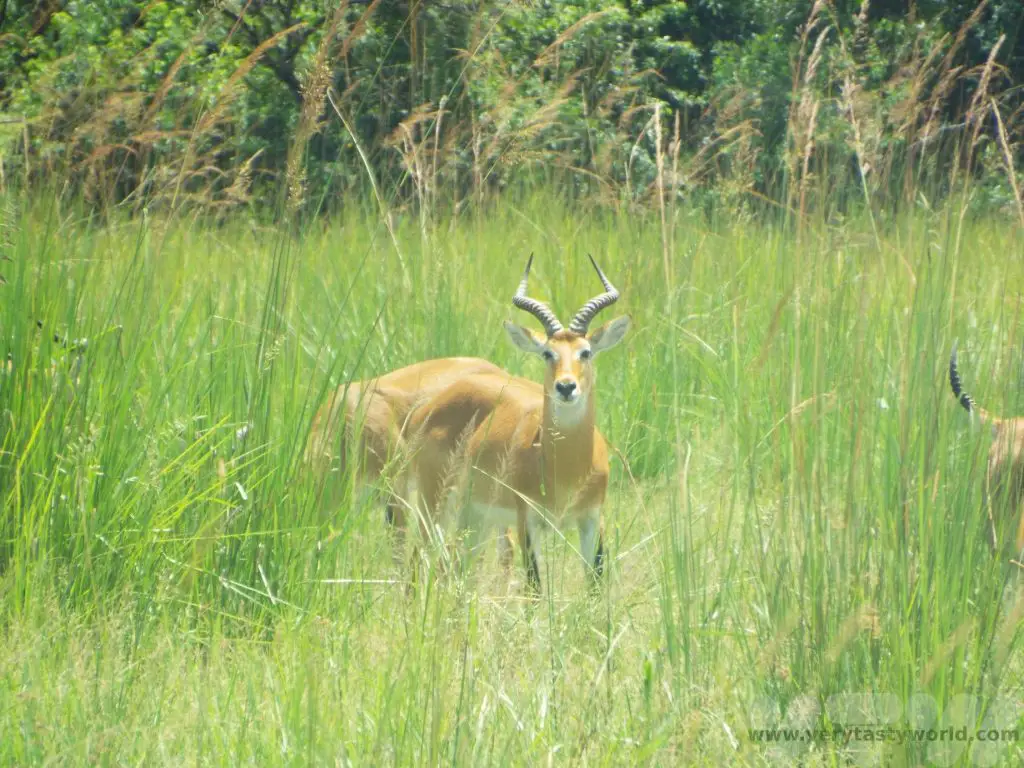
As continued our walk we noticed our guide signalling to a ranger a few hundred metres away. The ranger beckoned us over. We carefully circled a small copse and to our delight saw a mother and her child, quietly grazing together. We managed to get within a few metres of these marvellous – and enormous – creatures.
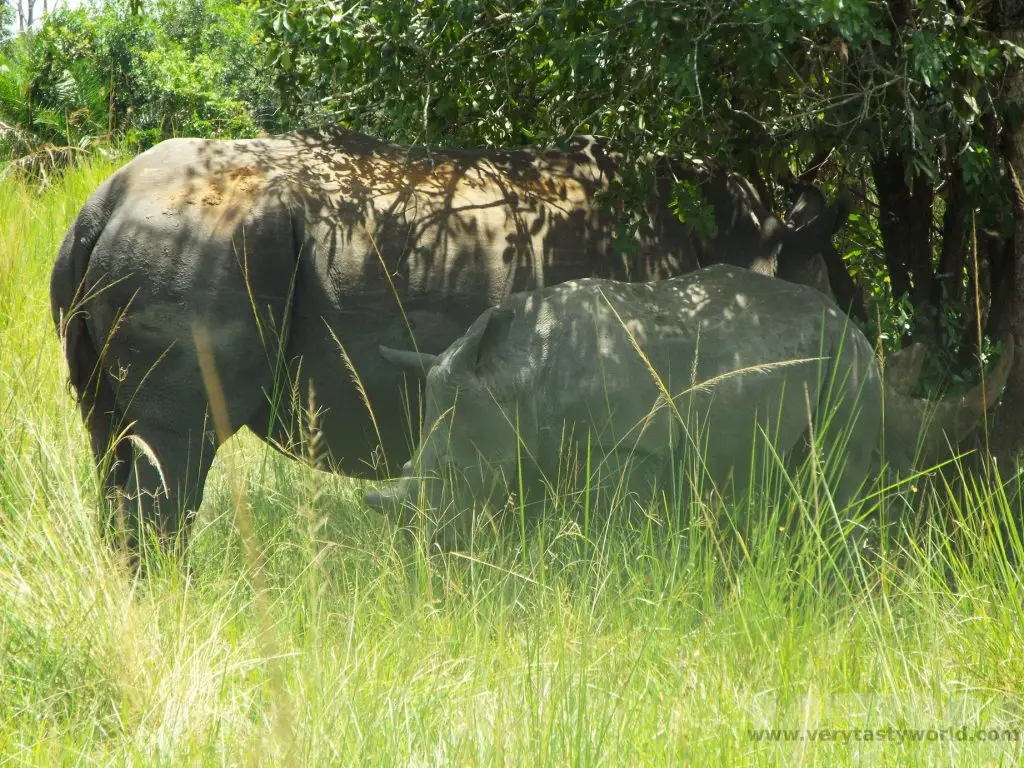
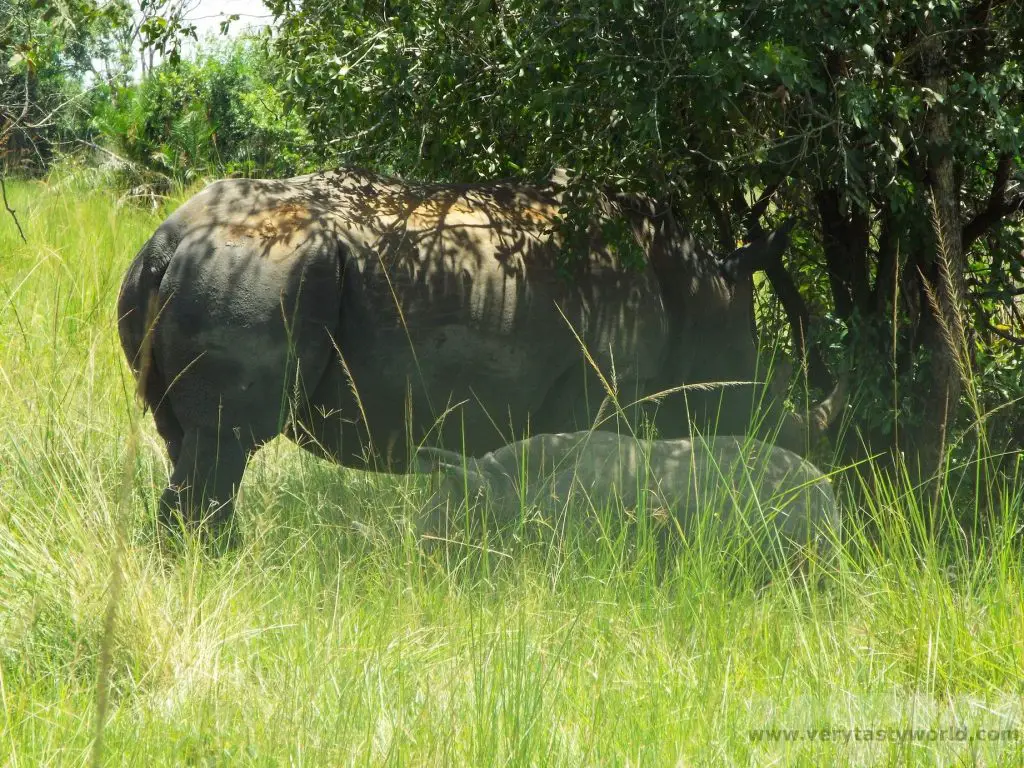
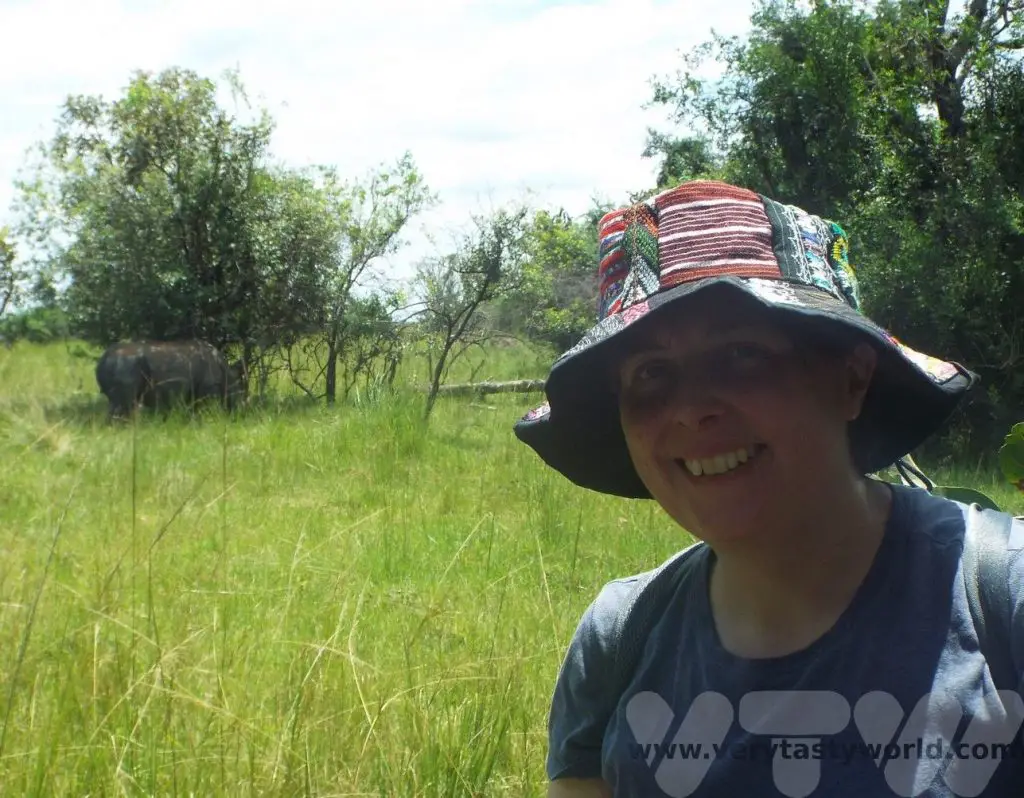
The rangers keep watch on the rhinos 24 hours a day, seven days a week. They are constantly in touch with each other via mobile phone and radio links and they monitor the rhinos in order to protect them from poachers. There used to be a system whereby the rhinos were given radio tracking collars so that they could be monitored remotely, but sadly poachers managed to hack into them with devastating consequences. For this reason, humans are assigned to watch them, which provides much needed protection.
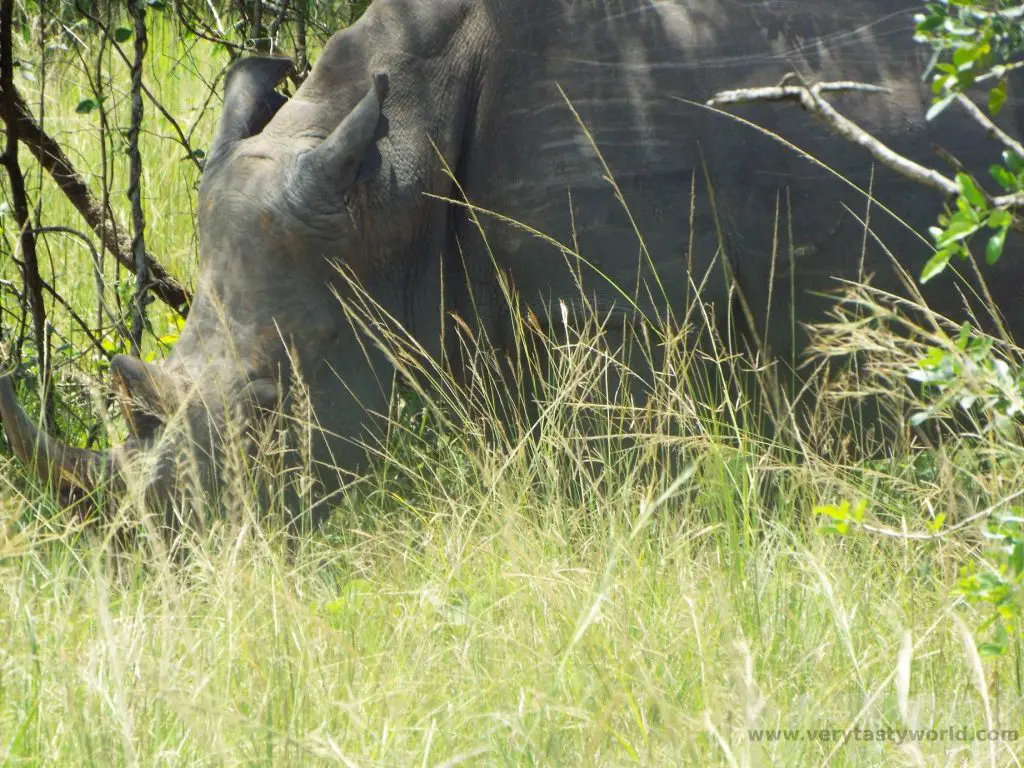
We continued the walk through the grassland and came across another rhino, a male, snoozing in the shade of a tree. He was totally unperturbed by us.
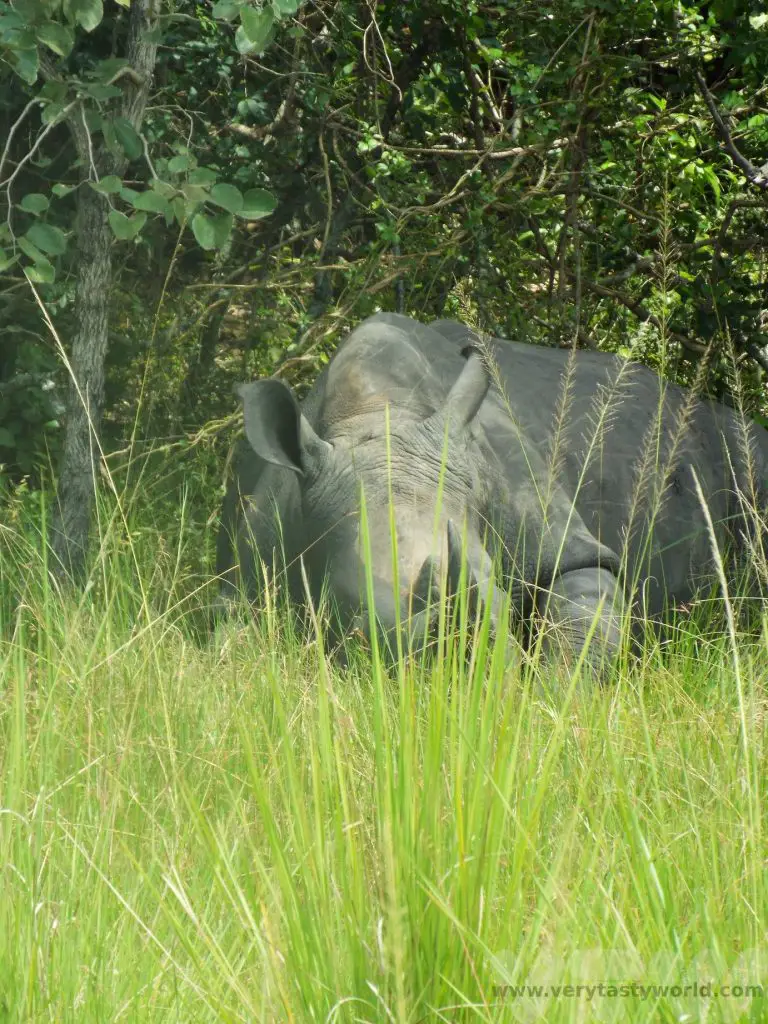
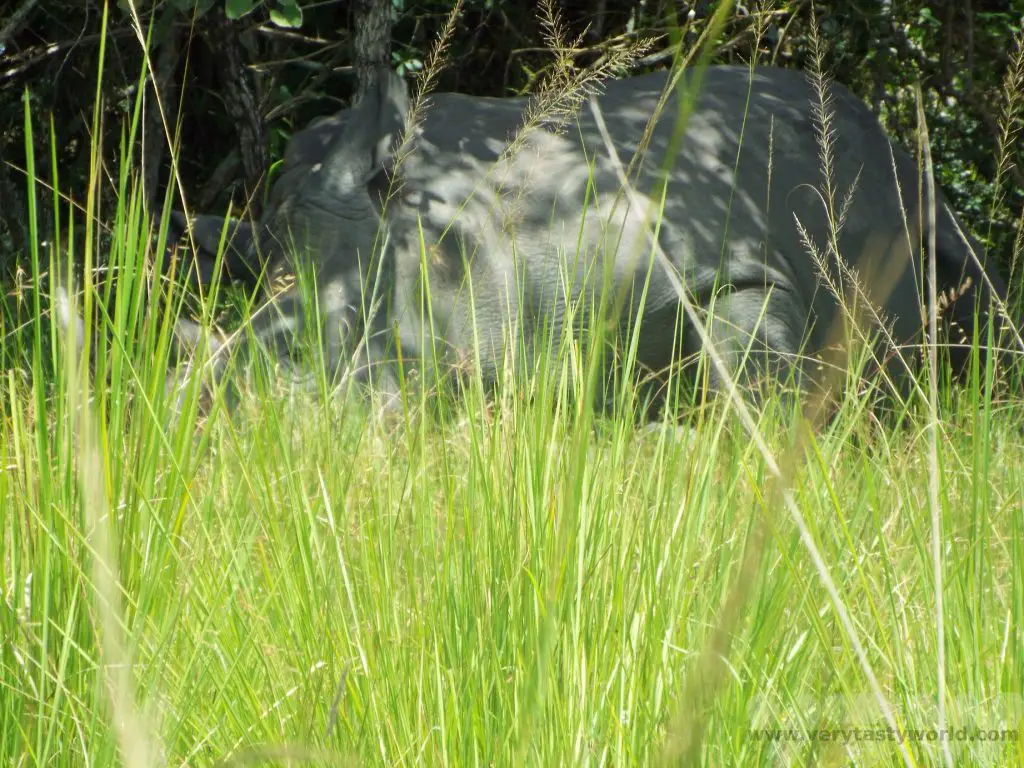
It is possible to stay overnight at Ziwa and enjoy other activities such as a canoe safari or night-time walks but we had to leave in order to reach Murchison Falls before nightfall.
Even though our visit was for just a couple of hours, the trip to the Ziwa Rhino Sanctuary was magical. It was particularly exciting to be able to walk through the savannah and get so close to these magnificent endangered creatures. It was also an ideal stopping point on the way to Murchison Falls from Uganda’s capital Kampala.
Related Posts You May Enjoy

1 Day Gorilla Trekking Uganda
Although it has its fair share of excellent safari locations where you can see the so-called Big Five game animals, Uganda is also well known as a top destination to see primates. We had the opportunity to track chimpanzees in Kibale and mountain gorillas in Bwindi Impenetrable in the south-west region of the country. 1 day gorilla trekking in Uganda is one of the country’s top attractions.
Gorillas in the Mist… And Pouring Rain
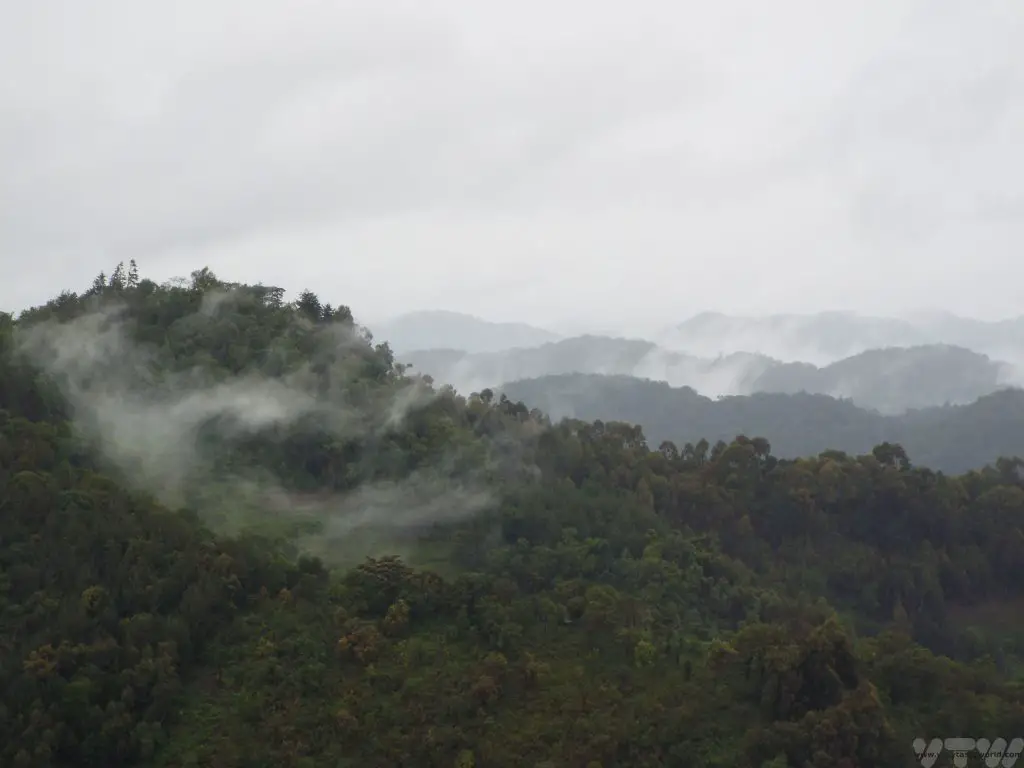
The mountain gorillas are critically endangered – there are only about 900 left in the wild and they can be found in Uganda, Rwanda and the Democratic Republic of Congo. Uganda and Rwanda offer a limited number of gorilla tracking permits each day. We chose to travel in the low season when it is more likely to be rainy, because the cost of the permits is reduced significantly during certain months of the year. It’s worth booking the permits in advance. They are really expensive, even out of season, but the money goes directly towards the conservation of these marvellous creatures. And it is really a once in a lifetime experience.
The Ugandan conservation programme has ensured that half of the gorilla population has been habituated – wild, but comfortable in the presence of humans – and the other half remain completely wild. This is a good strategy. The conservationists’ greatest fear is that the gorillas, which share about 98% DNA with humans, could catch a human disease for which they have no immunity. You are requested not to track the gorillas if you have a cold. Following the start of the pandemic, the area was closed off for a while, Covid presenting risks both from the disease but also an increase in illegal poaching activities, but it has now opened up with extra precautions in place that trekkers need to adhere to in order to protect these magnificent creatures.
Bwindi Gorilla Trekking – The Briefing
The trip starts with a briefing at headquarters. Then you are allocated to a gorilla group – a maximum of eight people join each trek. It can take any time between 30 minutes and 6 hours to reach the gorillas – some parties have returned after nightfall in the past. Additionally, we were tracking at altitude, around 2300m above sea level, which enough to knock the breath out of you going up some of the steeper slopes! We were assigned the Bitakura group in the Ruhija area. One member of our party had mobility issues and was carried on a sedan by a team of four porters (who rotated shift with an additional four porters at regular intervals) who did an amazing job and ensured that she had full access to the gorillas. Our guide called it “the helicopter”. This system can be used if any trekker becomes unwell during their hike.
You wouldn’t have known it was the rainy season for most of our trip – virtually every day was bright and sunny and it had rained for a maximum of 15 minutes on just a couple of the days throughout our trip. Of course, on the day we really wanted it to stay dry the rain absolutely chucked it down. That’s why we packed good walking boots and raincoats.
We were advised to borrow walking sticks and also to employ porters to accompany us on the trek. This was a really good idea. Not only do they carry your backpack (you are advised to take three litres of water and a box lunch because you just don’t know how long it will take to reach the gorillas and you will need the energy) they will also hold your hand to steady you if things get slippery and push/pull you over obstacles if necessary. Importantly, they are local people who can earn a decent living from tourists, so hiring a porter also contributes directly to the community. The porters are available at the starting location and will be allocated if you ask for one.
1 Day Gorilla Trekking Uganda – The Trek
The Uganda Wildlife Authority (UWA – apparently pronounced Oo-er!) have an excellent system in place which ensures that you have practically 100% chance of seeing the gorillas: each morning two trackers head out into the forest to find the troop based on their location the previous day. They then radio to the guide, who will lead the tourists via the best route to see the gorillas. The trackers do an amazing job – they spend all day with the gorillas, even after the tourists have left, so that they know where to trace them to on the following day. We were advised that they would appreciate a personal tip as most tourists don’t recognise the brilliant job they do and we were delighted to do this.
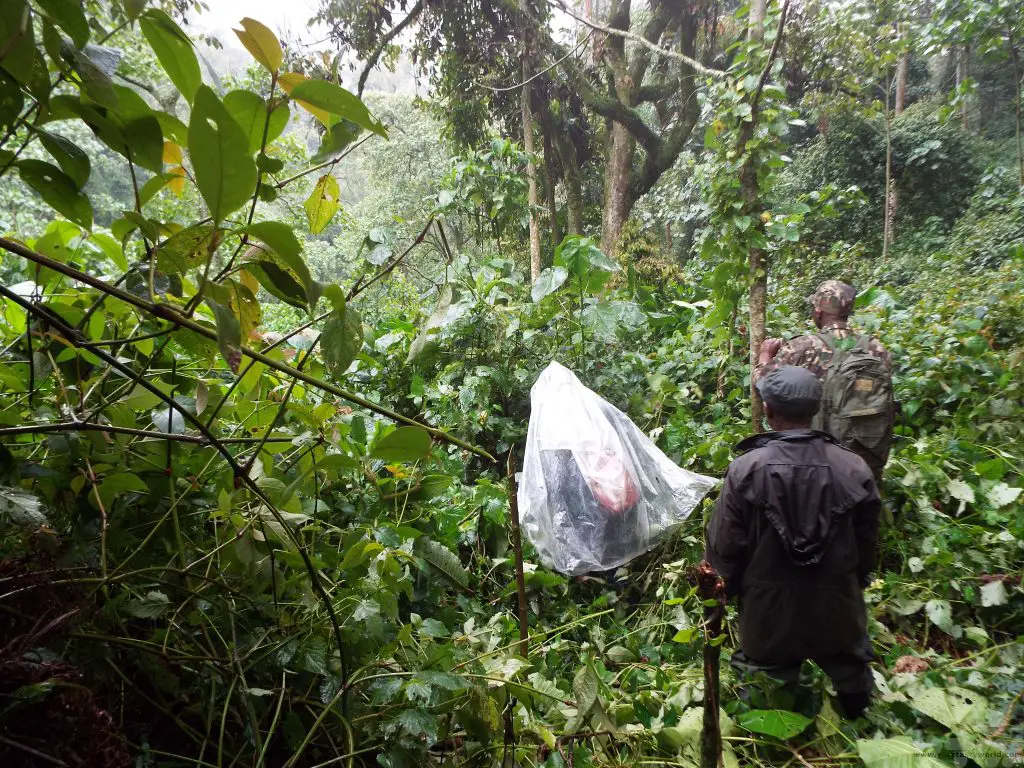
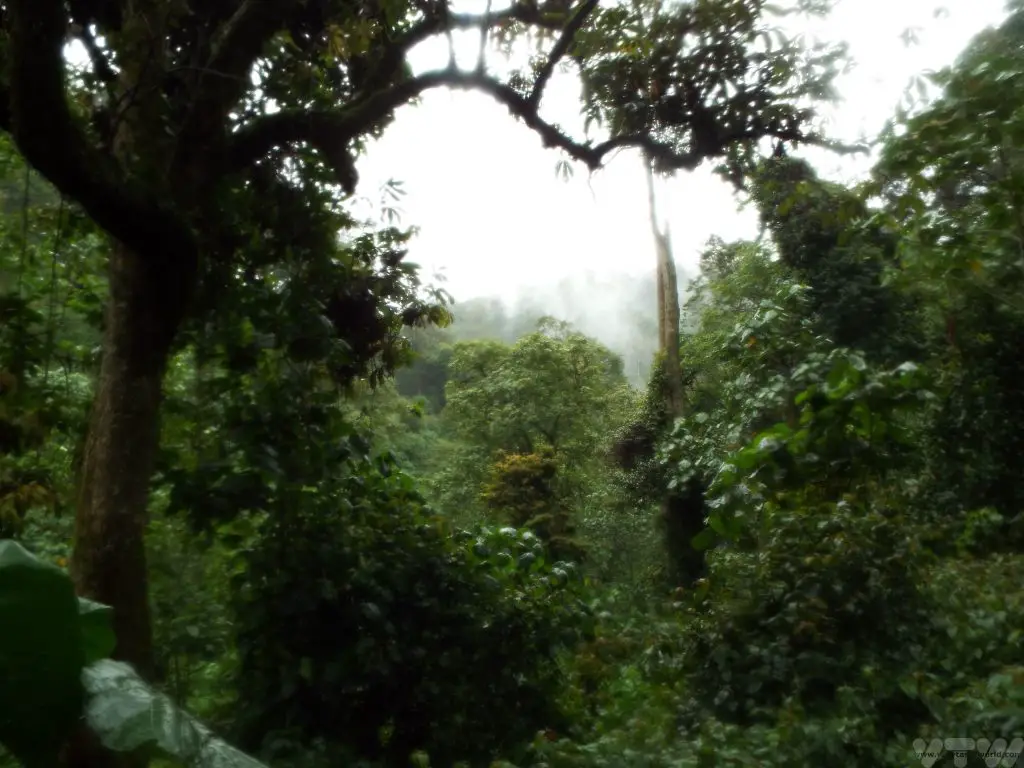
There’s a reason the region is named “Bwindi Impenetrable”. We trekked along a main path – up and down some very steep, muddy and slippery slopes, for a couple of hours. Then our guide indicated that he was close to the trackers. The rangers/trackers cut through the forest with machetes and we followed a newly made path, through dense forest to where the gorillas were located.
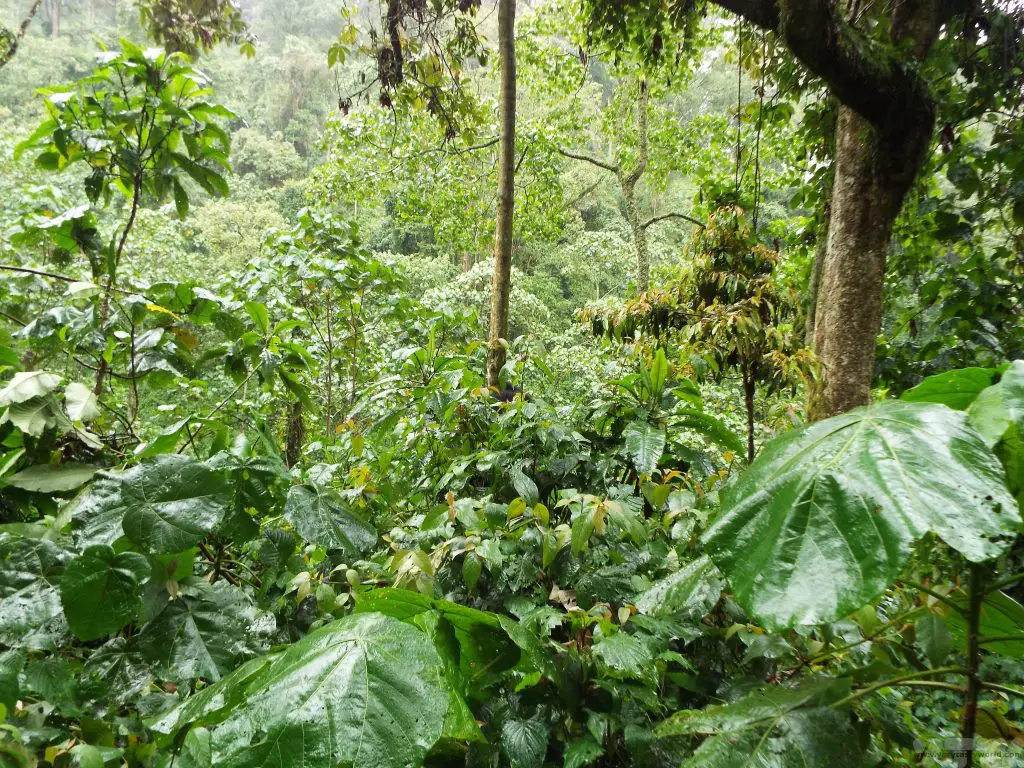
We were soaked through to the skin, muddied, shattered and utterly bedraggled. But nothing beats the sight of wild gorillas just a few metres away from you.
We saw one of the group’s silverbacks…
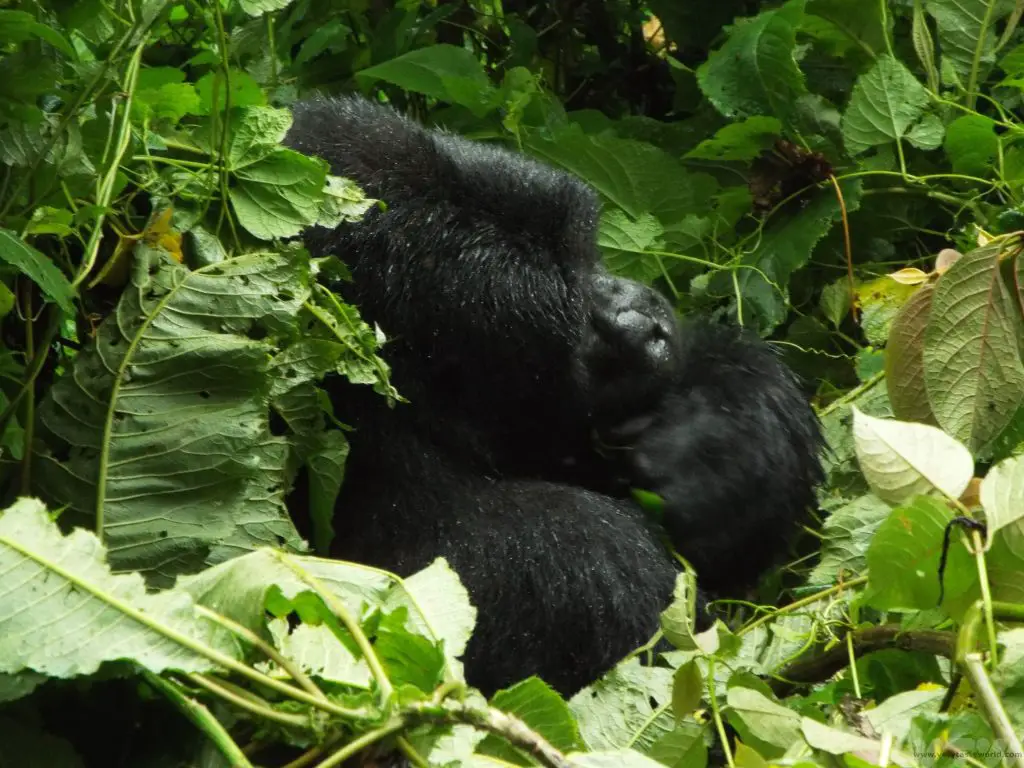
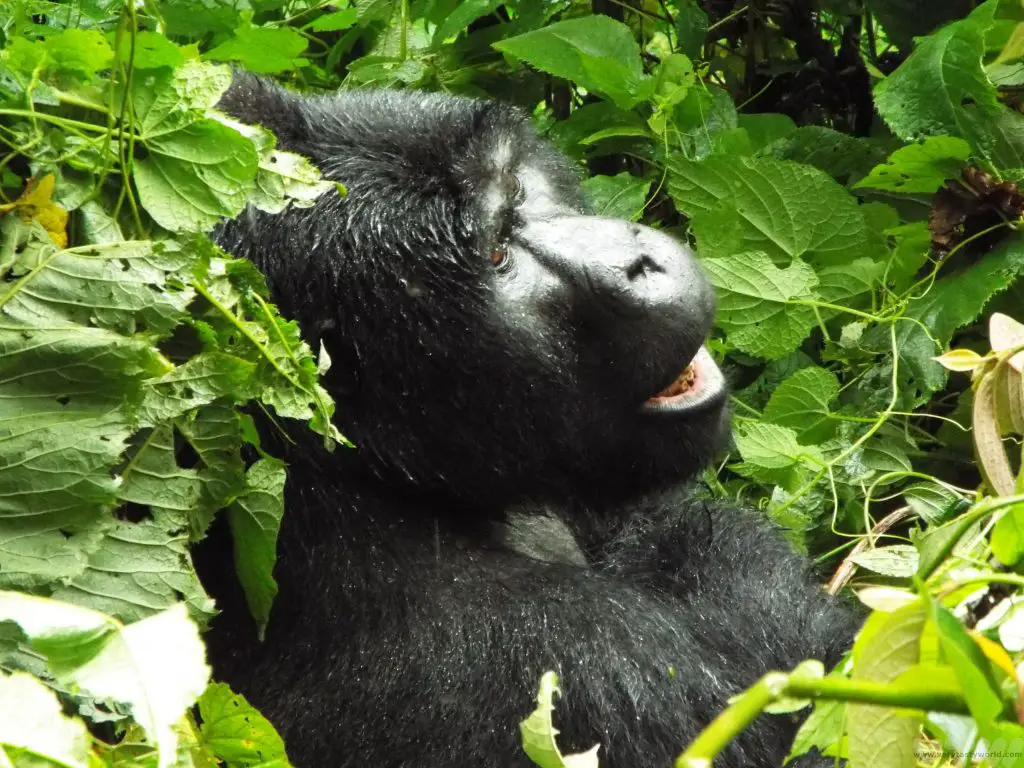
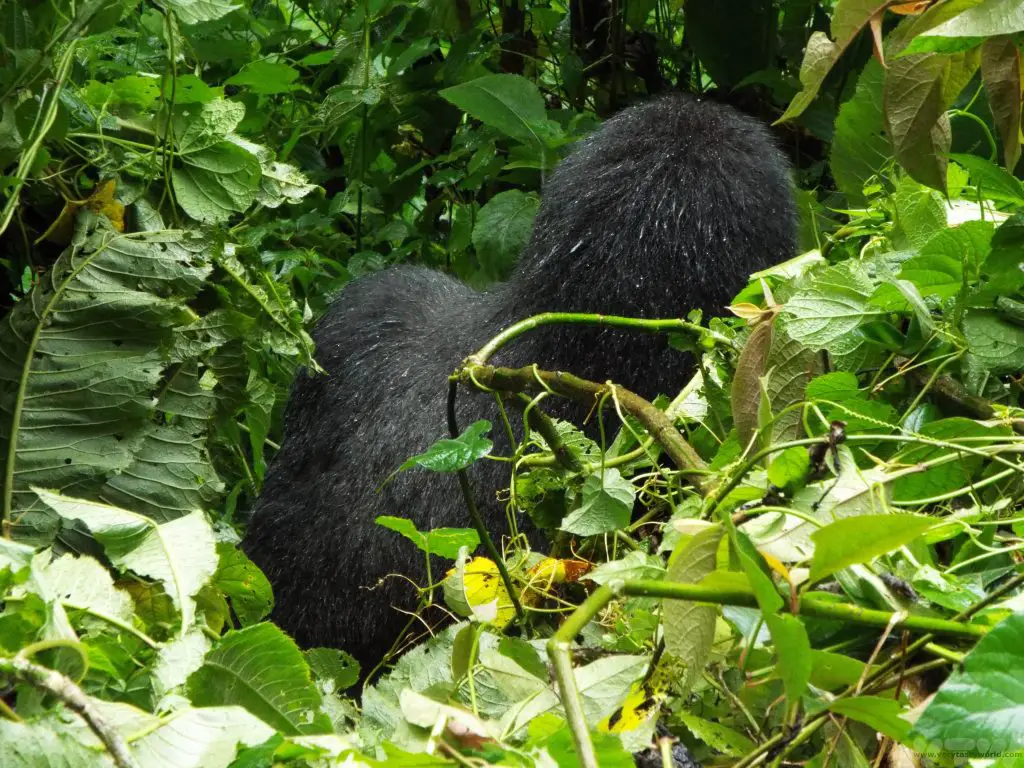
…some younger males…
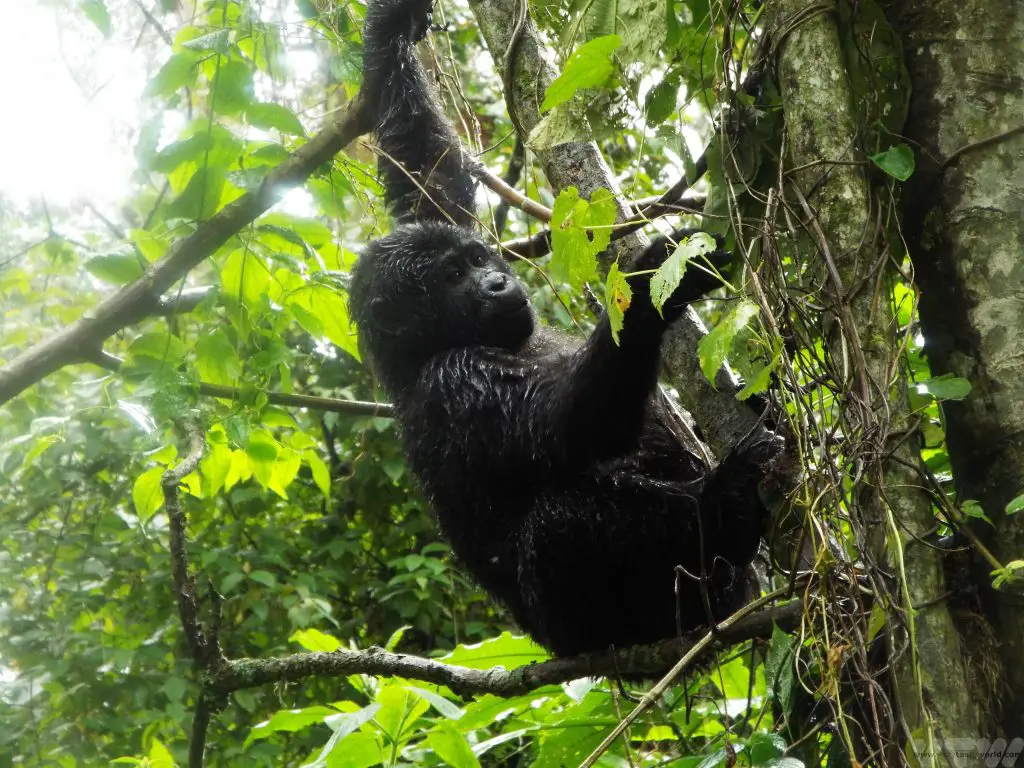
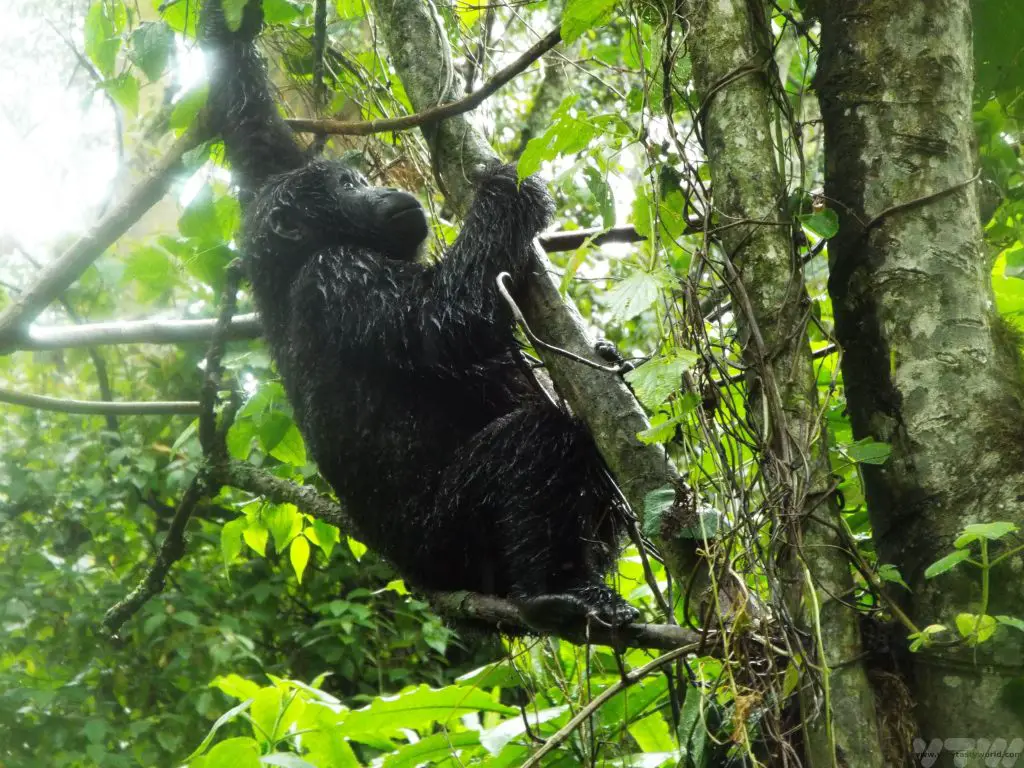
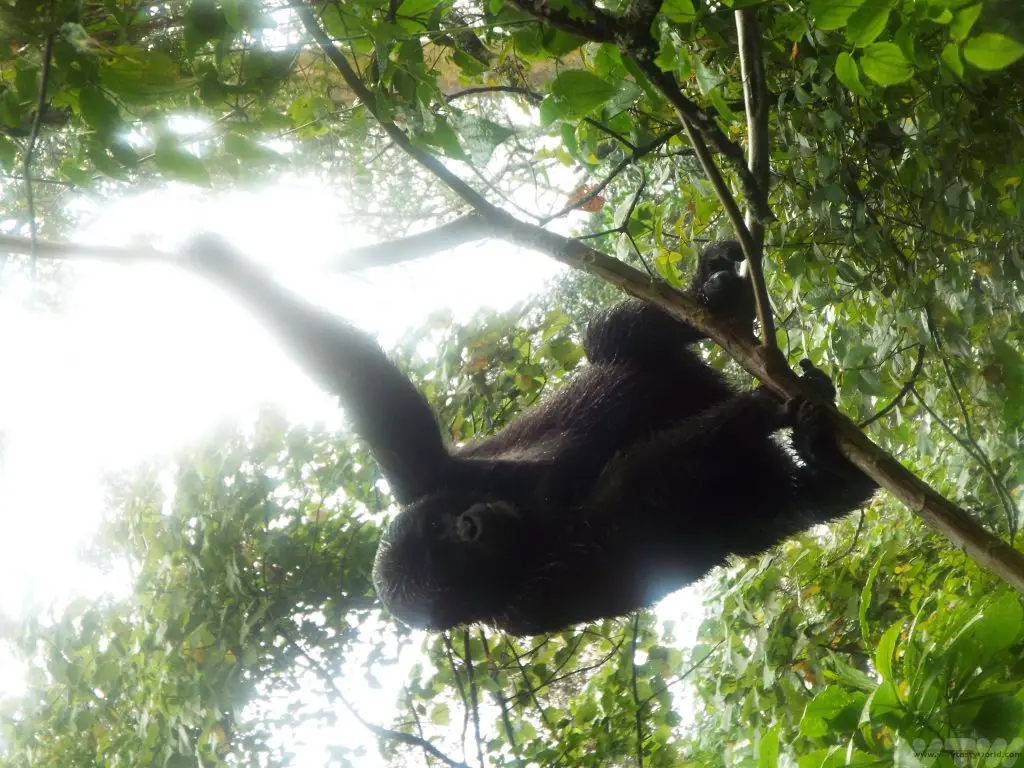
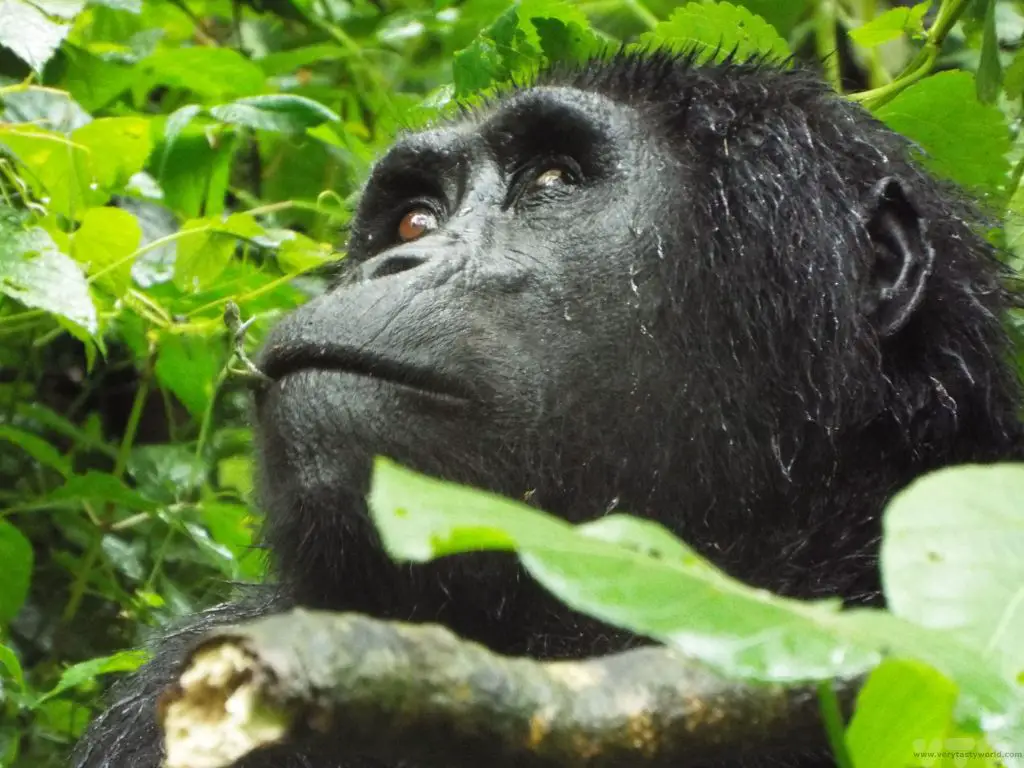
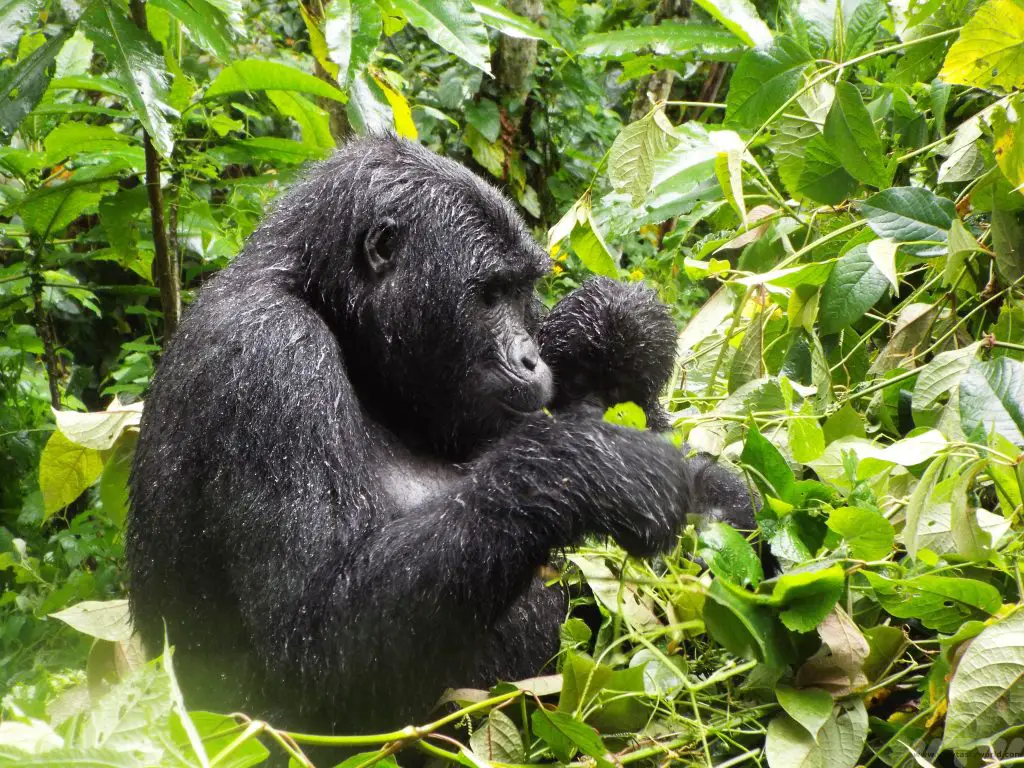
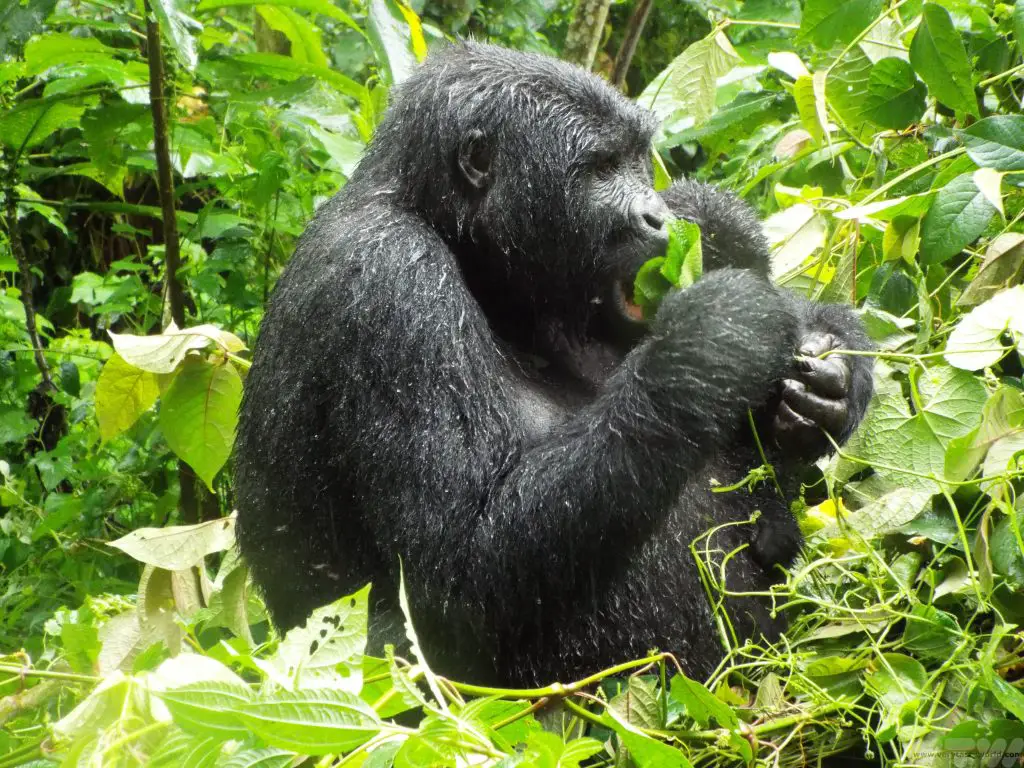
…and a mother and child.
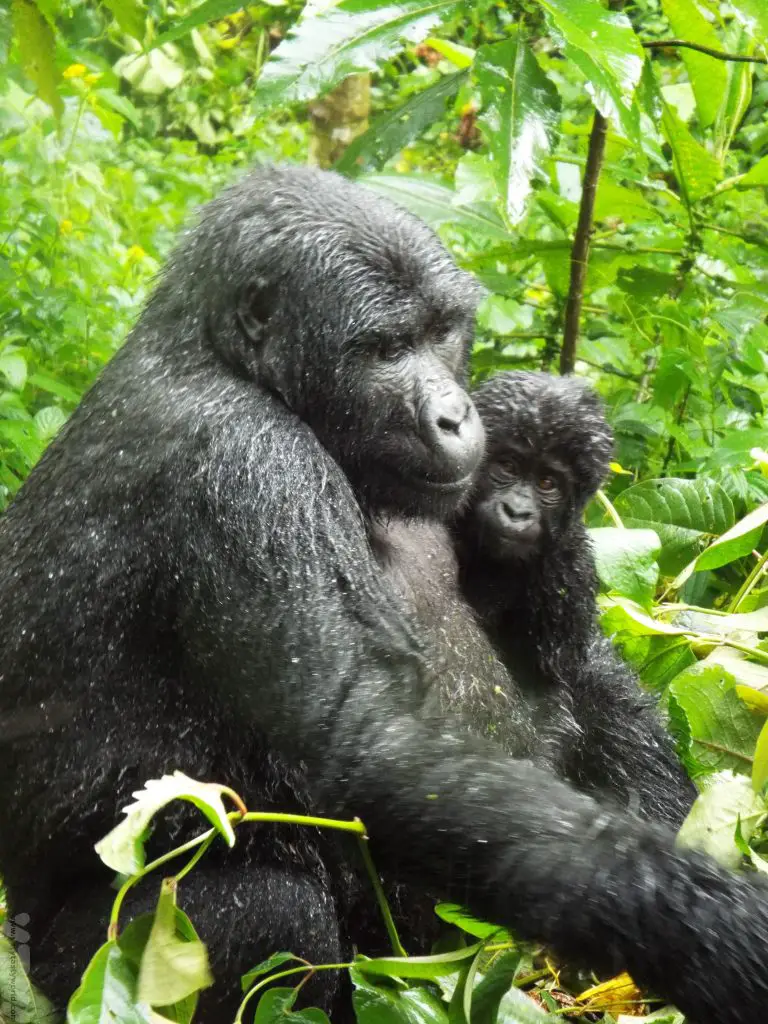
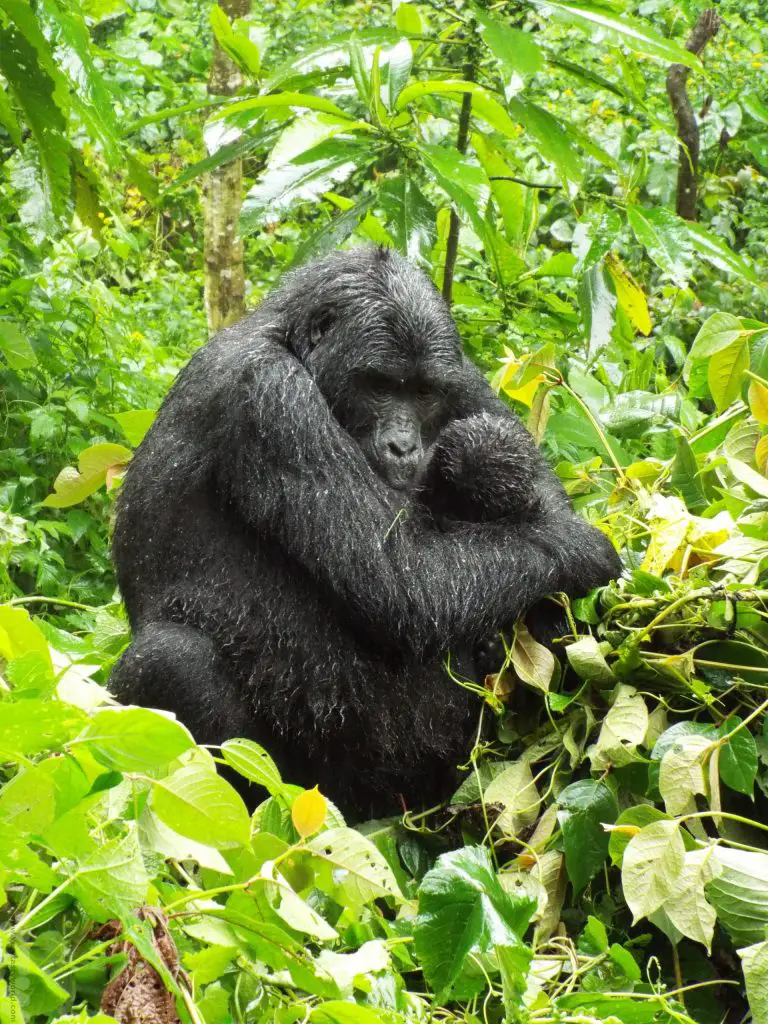
It’s difficult to find the words to describe how magical it was just being in their presence. The rules say that you are allowed one hour with these amazing creatures. It flew by. Then there was the slippery, steep trek back to base. It was a tough climb but we made it without difficulty. Gorilla trekking in Uganda was one of the most amazing things we have done. We were exhausted but elated.
The gorillas were feeling a bit sleepy too.
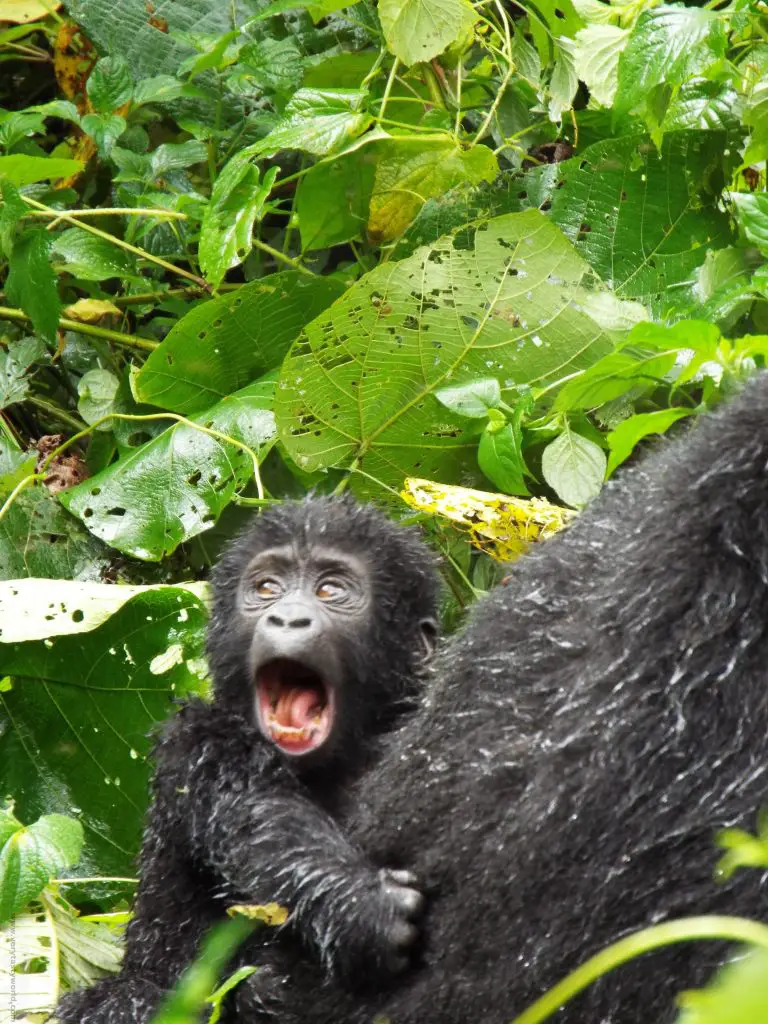
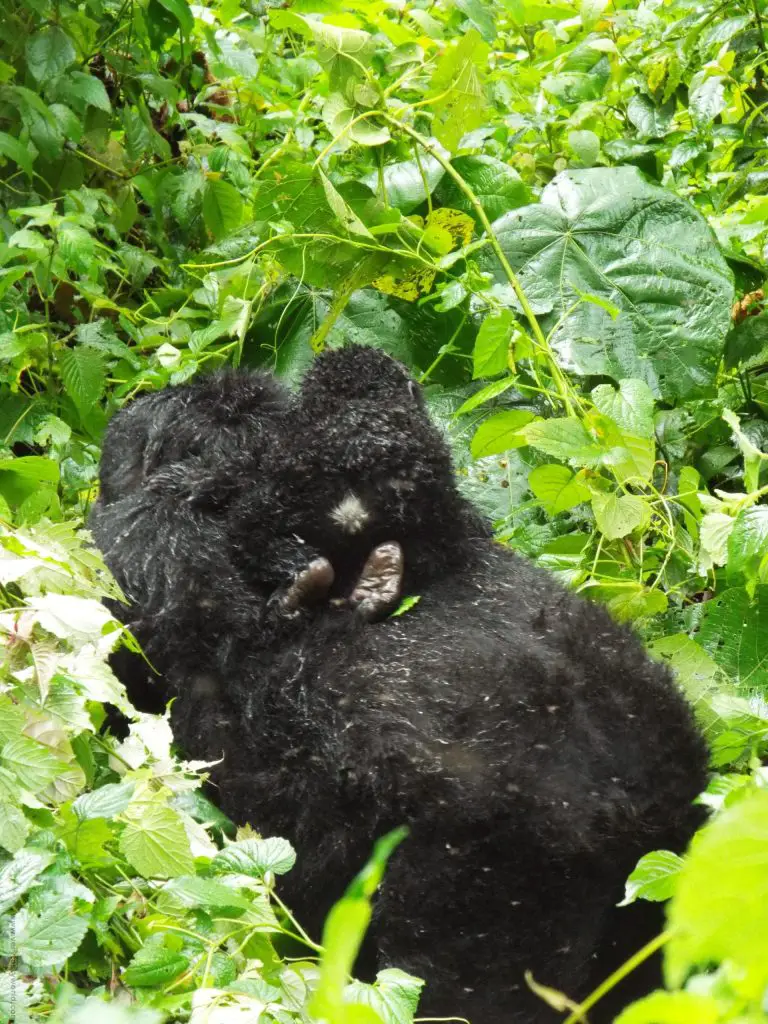
At the Elizabeth National Park we managed to purchase some Gorilla Coffee. Made from arabica beans it is grown, processed and roasted in Uganda, and is delicious. It has a lovely aroma – it smells of sweet, buttery caramel and has a smooth taste with just a touch of distinctive coffee bitterness. Even better, some of the profits from its sales go towards conservation efforts to help the marvellous mountain gorillas.
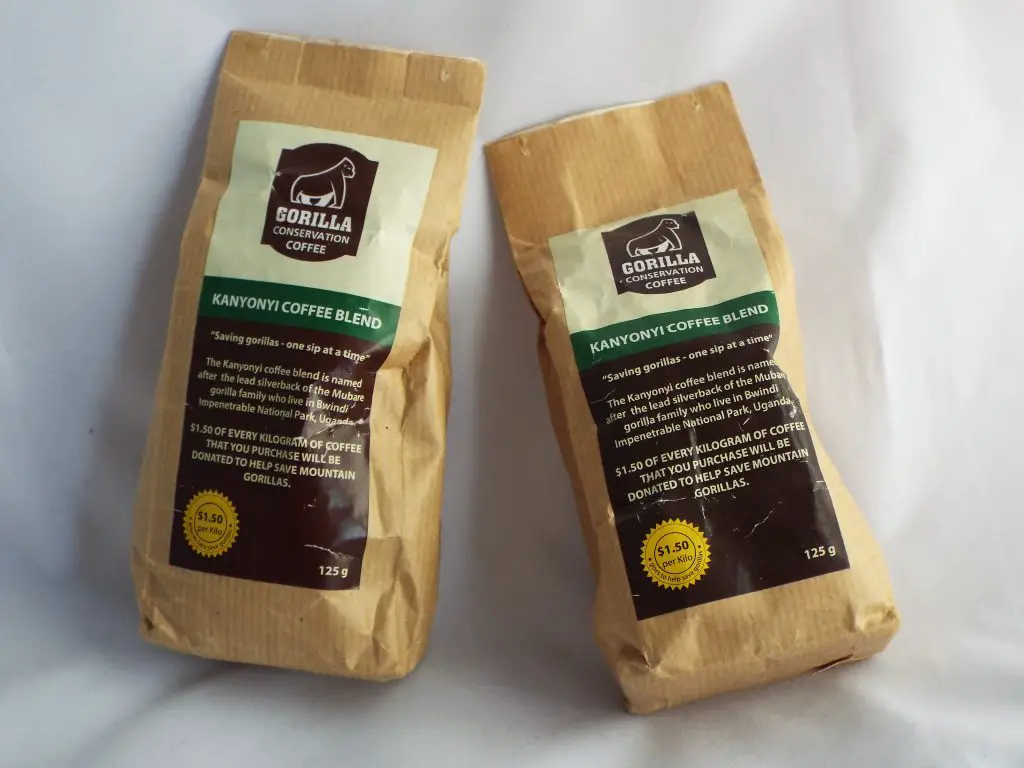
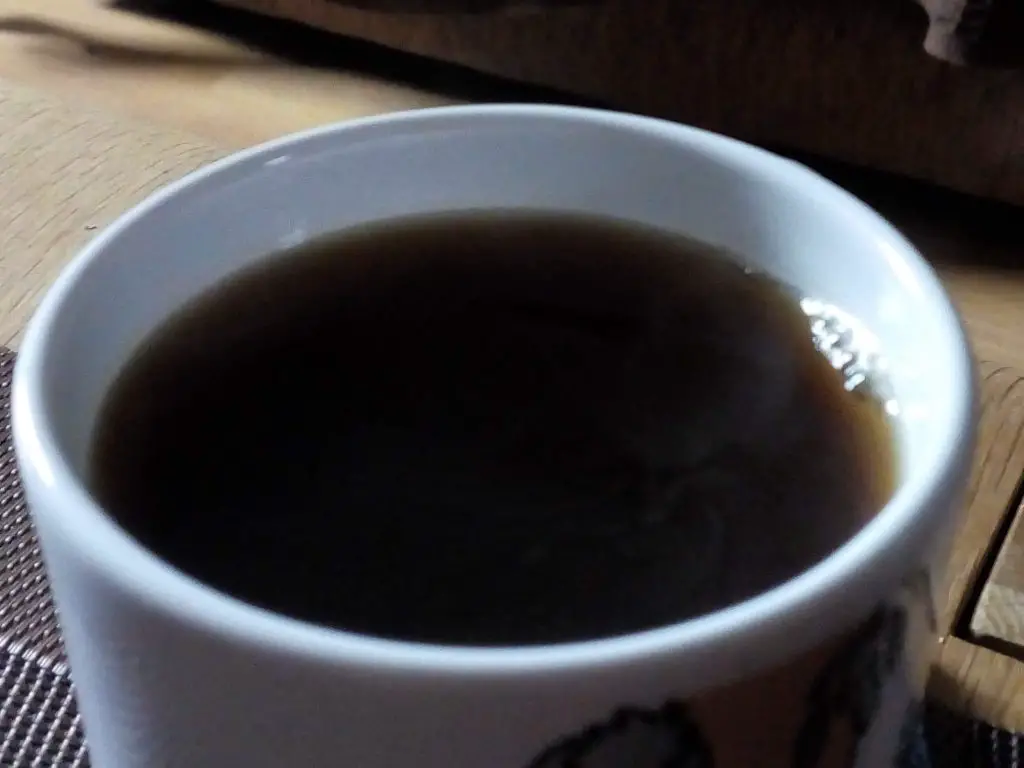
Related Posts You May Enjoy

